

What Is a Call to Action in Writing?

Written by Rebecca Turley

How do you inspire readers to take action?
A Call to Action (CTA) in writing is your opportunity to motivate readers to take some type of action. Can your writing and accompanying CTA be compelling enough to motivate your readers to take the next step, make the next move?
That’s the million-dollar question.
Call to Action: What It Is, What It Isn’t, and How to Successfully Use It in Your Writing
So, what exactly is a Call to Action and how can you best utilize it as a writer?
A CTA in writing is a clear and direct message that should elicit a strong response from readers to do something . In marketing lingo, this something is called a “conversion” – turning observers into doers.
Think of it as a “hook, line, and sinker” moment – you want to inspire the reader to do what you want them to do. Maybe it’s subscribe to your online newsletter, book a service, or buy a product—a CTA is a one-liner that gets the job done. It can be an outstanding marketing tool that keeps your reader engaged and ready to act.
It may be a small, two-word phrase or as long as a sentence, but its goal remains the same: to provide your reader with direction on what to do next. You provided them with compelling, interesting text; now’s not the time to leave them hanging! Finish it off with a great CTA and you’ve accomplished your goal.
CTAs are most often used to make a sale by providing a direct path to the product or service you want them to buy. But they can also be helpful for building your customer base and generating leads for future sales. Most CTAs are used as hyperlinks that take the reader where you want them to go, but they can also motivate the reader to make a phone call, download a brochure, or complete a similar activity.

Creating an Effective Call to Action
Once you understand the goal of the CTA, it becomes rather easy to write one yourself. But there are some tried-and-true rules to follow to ensure your CTA is everything it can be.
A CTA is NOT:
- Overly wordy
Start your CTA with a strong action verb .
A CTA doesn’t take time to get to the point. It accomplishes its goal by telling the reader exactly what to do.
Think “authoritative” when choosing your words for a CTA. Those action verbs should inspire and convince the reader to do something, so now’s not the time to underwhelm them. When choosing that action verb, think about how best to direct your reader:
Use words that excite and motivate the reader.
Get them motivated and curious to make the move. Think about persuasive language here, about intriguing your reader to want to know more or make a move. Persuasive language speaks to saving them money, saving them time, or improving their lives in some way:
- Sign up to join the millions of others who are taking steps to save the planet!
- Click here to start saving money today!
- Call today to book your dream vacation!
Create a sense of urgency.
You can create a sense of urgency in a number of ways. Add an adjective, make a promise, or elicit FOMO.
- Order yours today, while supplies last!
- Get free shipping for a limited time!
- Lose weight in just 4 weeks!
- Call today and enjoy 50% off your purchase!
Eliminate wordiness.
You have one opportunity to capture their attention and motivate them to click. Don’t waste it by overloading your CTA with unnecessary words or confusing text. Think straightforward, clear, concise, and to the point.
If you aren’t getting the response you hoped for, switch it up.
You never really know if your CTA is going to be effective unless you give it a whirl. If you aren’t getting the response you hoped for, it never hurts to try another tactic. Remember that CTAs are not a one-size-fits-all approach, so you may need to experiment to find one that works best for your audience.
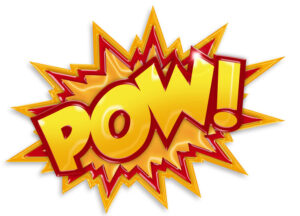
Need a little inspiration to create the perfect CTA? Here are popular CTA phrases designed to boost your conversion efforts.
Do you want customers to sign up or subscribe to something?
- Subscribe now
- Don’t miss out
- Get started now
- Stay up-to-date
- Remain in the know
Do you want customers to keep reading your content?
- Find out more
- Discover more
- Become part of our community
Do you want customers to take advantage of a deal or discount?
- Claim your offer
- Claim your discount
- Redeem your discount
- Start your free trial now
- Start shopping now
- Claim our limited time offer
Adding a Secondary Call to Action: Another Tool in the Writer’s Toolkit

A secondary CTA is not simply reciting the primary CTA twice or rewording the primary CTA. It serves as another option for the reader.
Here’s a good example:
Primary CTA: Donate now to help save endangered white rhinos!
Secondary CTA: Sign up for our weekly e-newsletter to stay up-to-date on conservation efforts for the endangered white rhino.
The primary CTA is a great example of providing the reader with an immediate opportunity to act. But not all readers may be ready to pull out their wallets and make a donation. That’s there the secondary CTA comes in. You’ve captured the interest of the reader enough to inspire them to sign up for your weekly e-newsletter, which could translate into a donation somewhere down the road. Secondary CTAs provide the reader with another opportunity to take action, thereby allowing you to boost your conversion rate.
The secondary CTA should be featured less prominently than the primary CTA because you ultimately want the reader to click on the primary CTA. Remember: The primary CTA should be the most desired action you want your reader to take. A secondary CTA shouldn’t compete with the primary CTA; it should complement it.
But the secondary CTA is certainly an excellent option for those who don’t find the primary CTA appealing. The secondary CTA captures that reader who may have moved on from your website or blog without taking any action at all (i.e., lost conversions). By keeping your reader engaged and returning to your site with the secondary CTA, you’re naturally increasing your chances of enticing the reader to act on the primary CTA in the future.
Secondary CTAs may also be used to simply grow your social reach. A great example of a secondary CTA in this case is to simply encourage the reader to follow you on Twitter, Facebook, or LinkedIn. You can also encourage the reader to share your article or blog on their social media platform of choice. Either way, it’s a great way to boost your social media presence.
Business growth
Marketing tips
16 call to action examples (and how to write an effective CTA)

What comes to mind when I try to think of a powerful CTA (call to action) is the one my dad expertly executed by bellowing at me daily to get a job . Fresh from a college experience that promised the world but mainly delivered a mountain of student debt, I was under the assumption that adulthood was supposed to be full of quirky adventures and unexpected meet-cutes, not unsolicited career advice from a man who still struggles to connect to Bluetooth.
Eventually, his CTA successfully motivated me to become a productive member of society. And that's the power of a compelling CTA—it jolts you out of your passiveness and into action. In my case, I got a job despite a lifelong belief that work is something to avoid unless absolutely necessary. (Look at me now, Dad!)
Just as personal CTAs can lead to transformative life decisions, marketing CTAs have the potential to significantly impact user engagement and conversion. Want to craft your own magnetic calls to action? Keep reading for tips and examples of what makes great CTAs, well, great.
Table of contents:
What is a call to action (CTA)?
A call to action (CTA) is a prompt or message, typically formatted as a button or link, that encourages the audience to take a specific and immediate action.
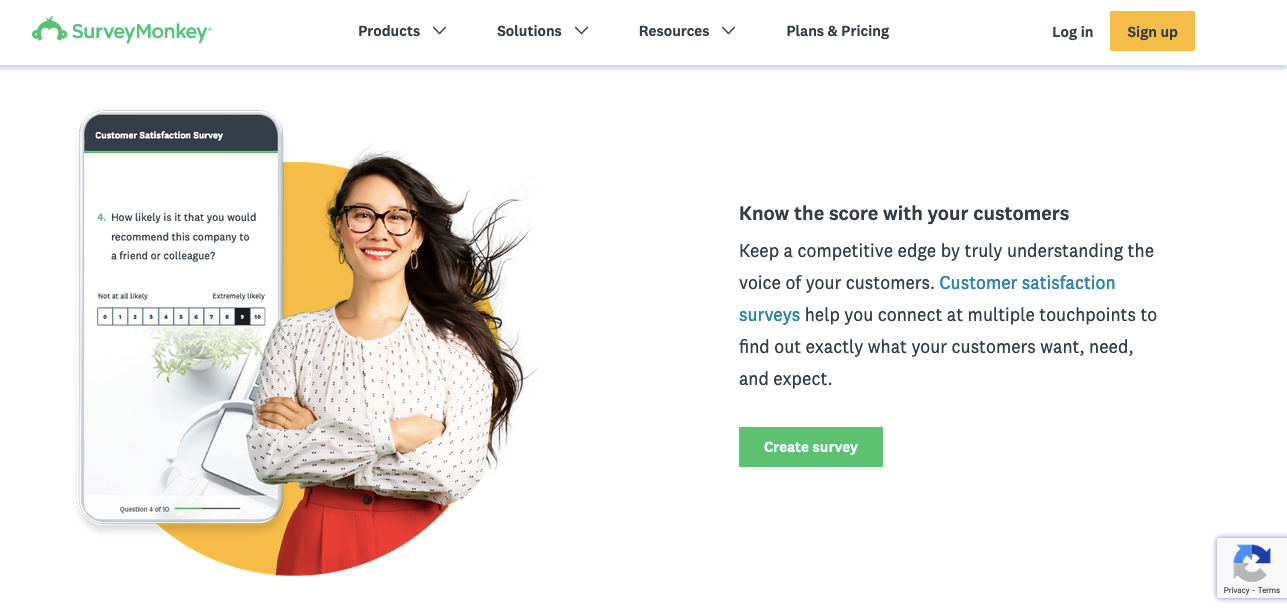
CTAs are commonly used in marketing and sales contexts to guide users toward the next step in their journey, whether that's purchasing a product, signing up for a newsletter, or forwarding that chain email to all of their friends to avoid eight years of bad luck. Some common call to action examples include:
Add to cart
Types of CTAs
Here's a primer on some of the most common CTA types.
|
|
|
|
|---|---|---|---|
| Encourages users to fill out a form, providing their information for various purposes | Contact page, request for quote page, or as part of lead generation forms | "Get a free quote" |
| Invites users to explore further content by clicking on a link or button | End of blog posts, related articles sections, or teasers | "Want to learn more? Click here to read the full article" |
| Directs users to a page or section highlighting the key features of a product or service | Homepage, product pages, or service descriptions | "Discover the key features that make our new smartphone stand out" |
| Encourages users to share content or products on their social media platforms | Near the content being shared, such as articles, images, or videos | "Share this amazing deal on Facebook" |
| Guides potential customers toward making a purchase after they've shown interest or engaged with your content | Product pages, shopping carts, or as part of drip marketing campaigns | "Add to cart and enjoy 20% off your first purchase" |
| Used to seal the deal or complete a transaction, often found in the final steps of the checkout process | Product pages, checkout pages, or limited-time offer banners | "Limited stock available. Buy now to secure your item!" |
| Promotes an upcoming event and encourages users to register or learn more about it | Event's landing page, email invitations, or display banners | "Register for our webinar" |
| Suggests other relevant content to keep users engaged and exploring your website | End of articles, blog posts, or in related articles sections | "Explore more on this topic" |
What makes a call to action button effective?
The effectiveness of a CTA depends on its copy, design, placement, and relevance to the user. For example, depending on your audience, the phrase "Snag your copy" might resonate with a larger group than something more generic, like "Download now." Or, if someone visiting your e-Commerce store is a first-time browser, they're likely not ready to click "Buy now." But they might be curious enough to click "Learn more."
Identify which action(s) will bring the most value to your business, then use your CTA to steer users in the right direction.
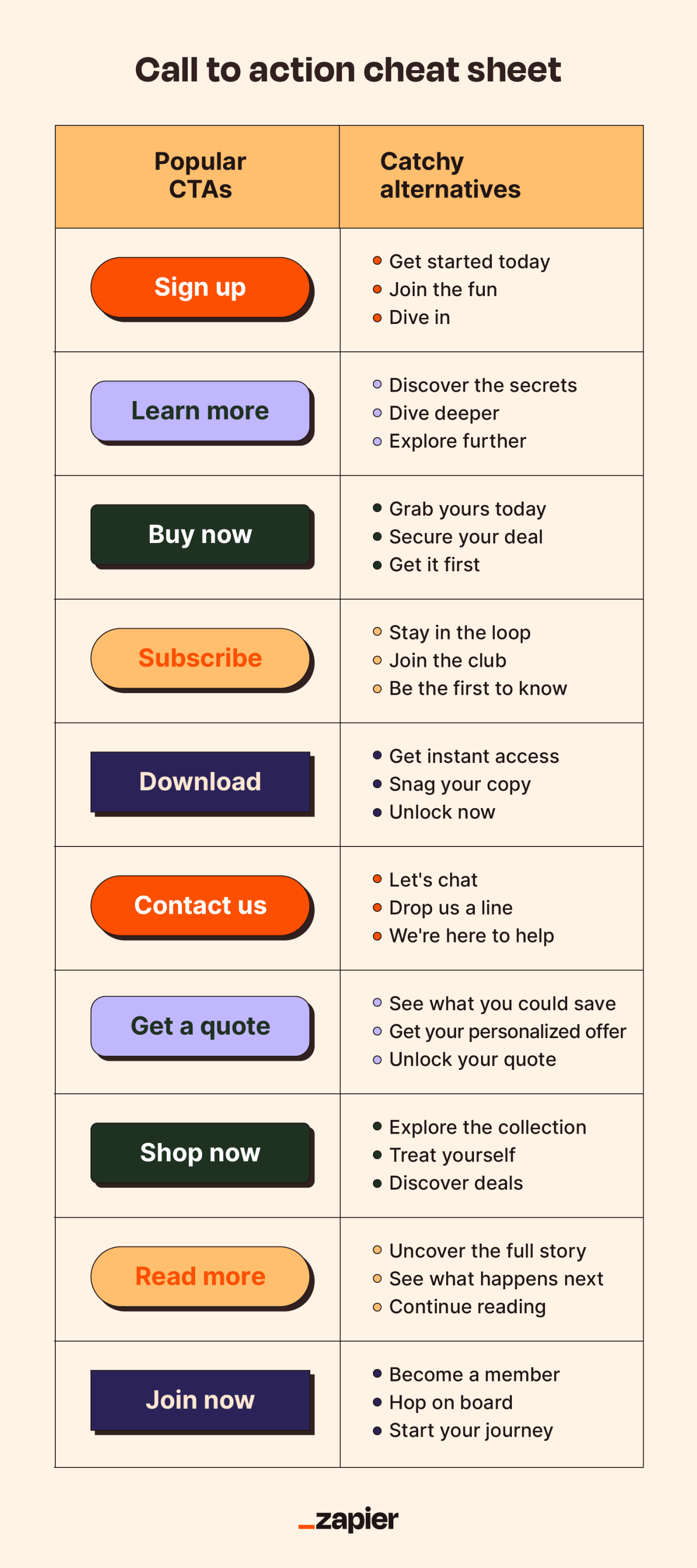
Why CTAs are important
Calls to action are important because they give your audience a clear sense of direction. Instead of wondering what to do now that they've clicked through every angle of a model wearing a denim jacket they think would look good on them, the "Add to cart" button gently nudges them one step closer to a sale.
But there's an art to writing a compelling CTA. Too pushy and you'll drive visitors away; too casual and your visitors might not be compelled to take immediate action. You need to strike the right balance for your audience.
16 call to action examples (and why they work)
Let's dissect some real-life CTA examples to learn how to use strategic copy, design, and placement to transform an ordinary CTA into a magnetic, can't-resist-clicking force.
1. JD + Kate Industries

CTA placement: Exit intent popup
CTA type: Lead to purchase
What it does right: Attention-grabbing, offers a valuable incentive, humorous and lighthearted
The brazen use of "WAIT" isn't a gentle suggestion; it's a command. Like someone grabbing your elbow just as you're about to duck out without a goodbye. It's intrusive, but in a way that makes you think, "Alright, what did I miss?"
Combine that with the sheer audacity of telling someone they've forgotten to buy not just one candle but HUNDREDS of candles. It's dramatic, it's over-the-top, and frankly, it's memorable. With copy like that, it's hard to resist giving away your email address because one can only wonder what their emails would be like.
2. Giftwrap.ai
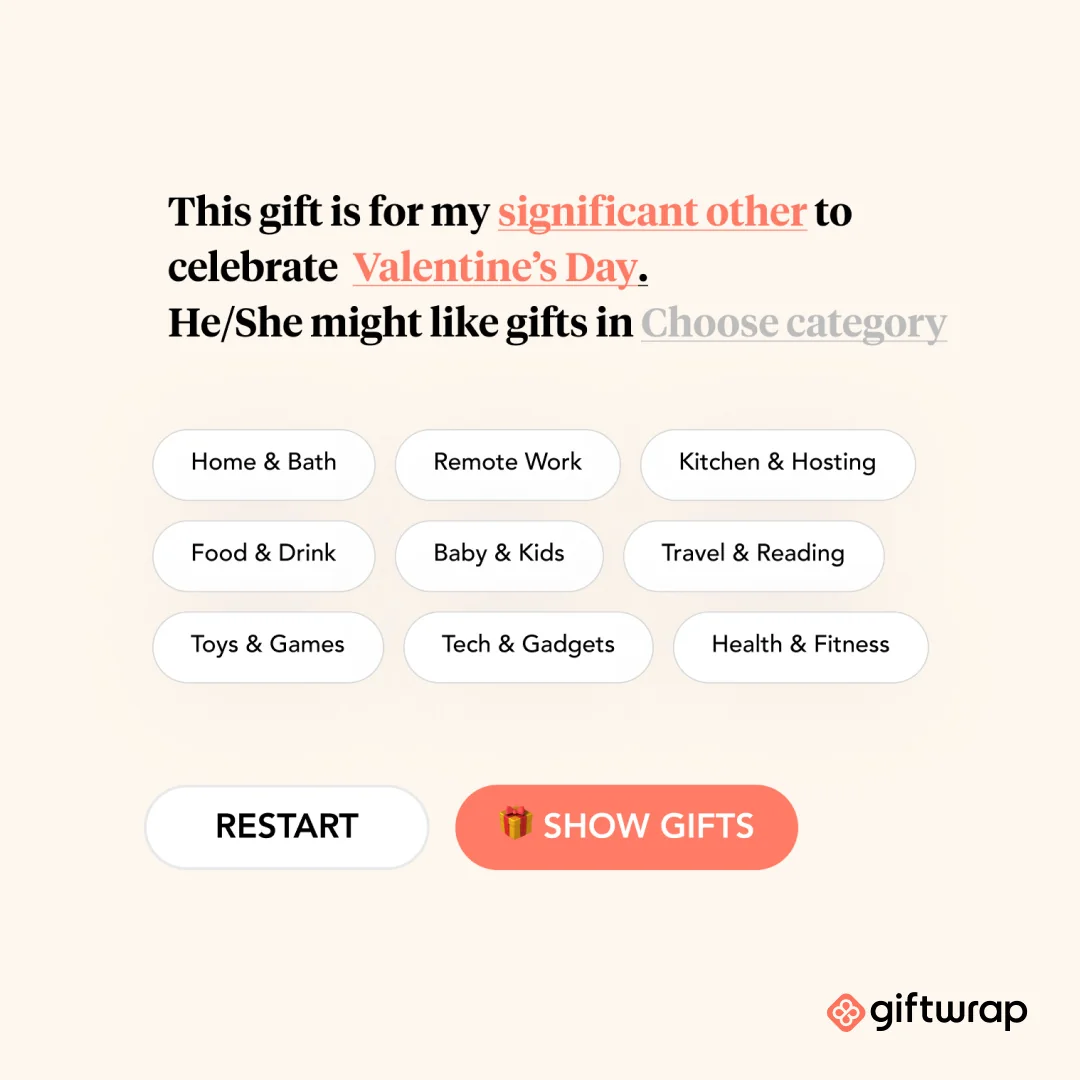
CTA placement: Display ad
CTA type: Lead generation
What it does right: Engaging, personalized, visually appealing
It's refreshing to see something that doesn't pretend to know you better than you know yourself. Instead of telling you what your significant other might want, it's asking you to fill in the blanks. A little bit of personalization without the personal touch. Clever, really.
As for the CTA button, the emoji is a nice touch. Plus, the use of "show" rather than "buy" or "see" is like a little magic trick. "Voila! Here are your gift options."
3. Who Gives A Crap

CTA placement: Facebook ad
What it does right: Benefit-oriented language makes the CTA more appealing to users and encourages them to take action
By comparing "Us" and "Them," they're not only offering a quantitative argument (385 sheets versus a paltry 299), but they're also injecting a bit of humor. And while I've never been one to count sheets, if you're telling me I get more for my money and it'll look cute next to my collection of HUNDREDS of candles, I'm sold. Also, describing the competitor as "objectively very boring" is a sentiment I've often used to describe my social life, but to see it on toilet paper? Well, that's something.
"28% cheaper than Charmin," followed by a "Shop Now" button isn't just a call to action; it's a call to revolution! A revolution of, well, saving on toilet paper and perhaps bringing a touch of flair to a decidedly unglamorous aspect of life.
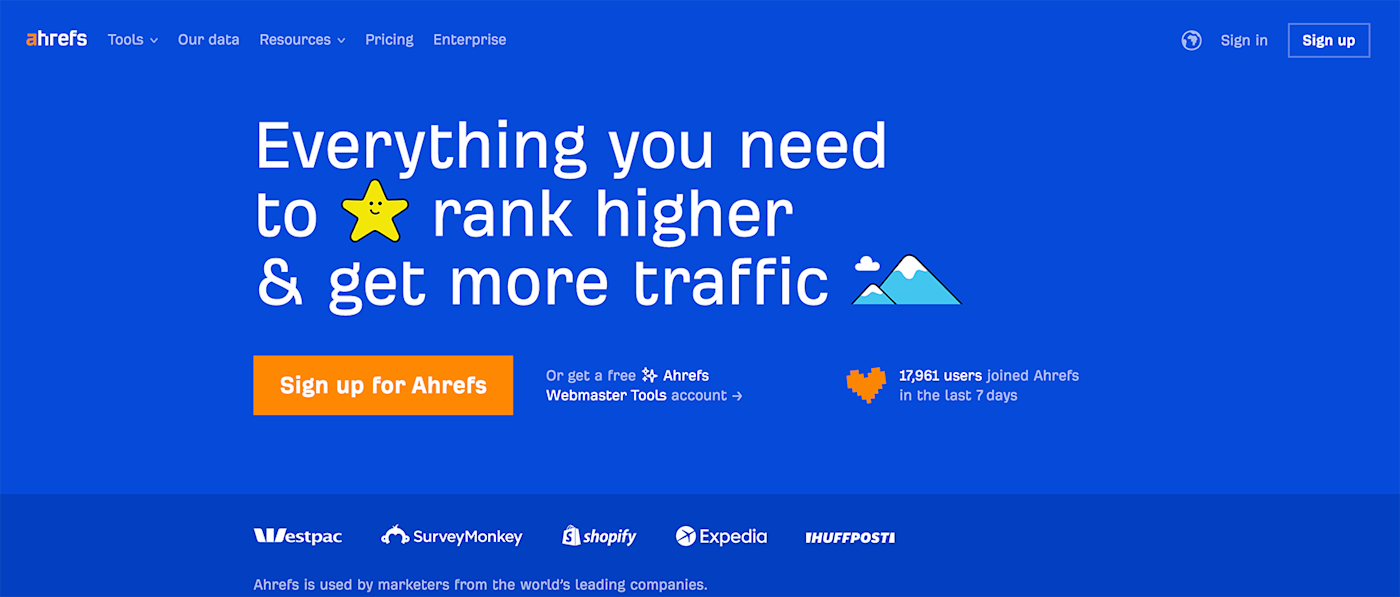
CTA placement: Homepage header
What it does right: Creates curiosity, addresses pain points, social proof
There's something oddly reassuring about a direct, no-nonsense headline promising exactly what every website on this overcrowded internet wants: visibility.
The name-dropping of heavy-hitter customers serves as a strong endorsement. It's not saying, "Look who trusts us," but rather, "Look who you'd be in company with." And that "17,961 users joined Ahrefs in the last 7 days" is a nice touch. It's not boastful, but it's certainly not modest. It's a subtle prod to the undecided that says, "While you're contemplating, thousands have already decided."
This CTA is a perfect blend of self-assuredness, social proof, and just the right amount of peer pressure.
5. Ruggable

CTA placement: eCommerce email
CTA type: Limited-time offer
What it does right: Straightforward, creates a sense of urgency, sparks curiosity
There's something unapologetically direct about this ad. "Final hours to save until next week Black Friday"—it's not asking you, it's telling you. Time's running out, and if you're the type who thrives on the thrill of a last-minute decision, this is your moment.
The CTA is a master class in suspense. That "% OFF" lurking behind the button is like when someone says they've got news, but they'll tell you later—except instead of being left alone with your intrusive thoughts, conjuring up worst-case scenarios, you get a sweet discount on a cute, machine-washable rug.
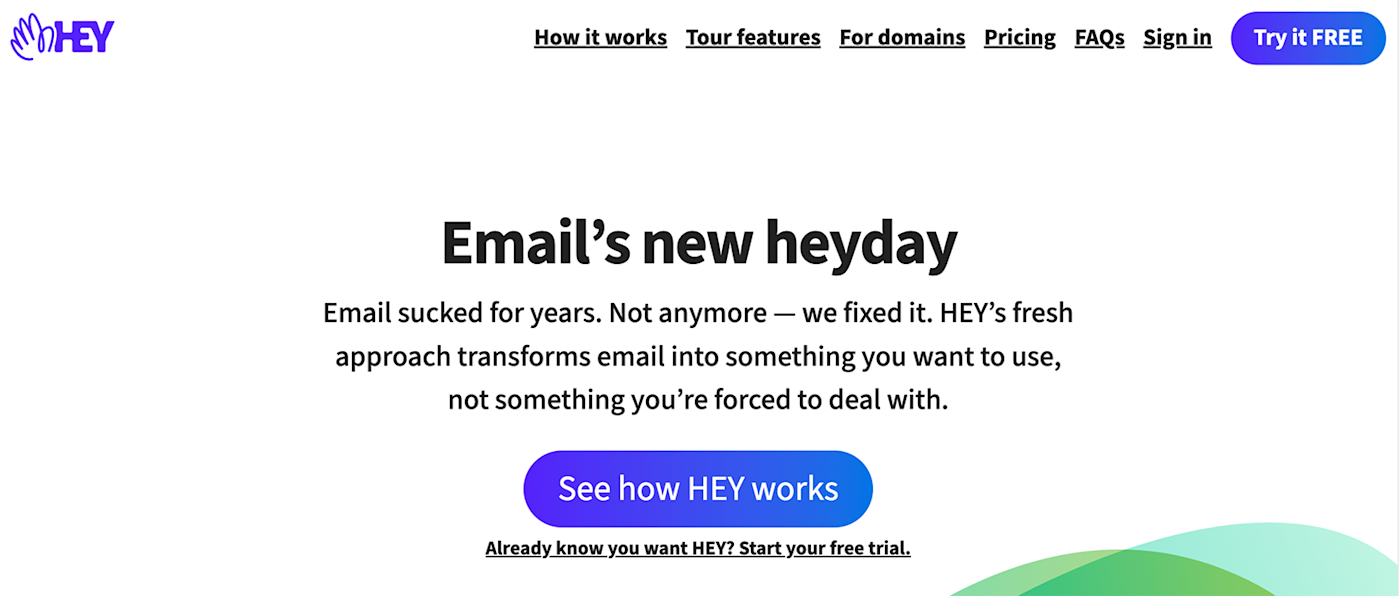
CTA type: Product demo
What it does right: Solution-oriented, benefit-driven, relatable
"Email sucked for years. Not anymore—we fixed it." You mean that thing everyone's been complaining about since the dawn of the internet? It's about time, and I'm all ears.
The rest of the copy succinctly addresses customer pain points and aspirational desires. It paints a picture of a world where checking your email might feel more like reading a postcard from a friend rather than sifting through a pile of bills.
The CTA button, "See how HEY works," is straightforward. No flowery language, no over-the-top promises. Just a simple invitation.
7. Big Blanket Co
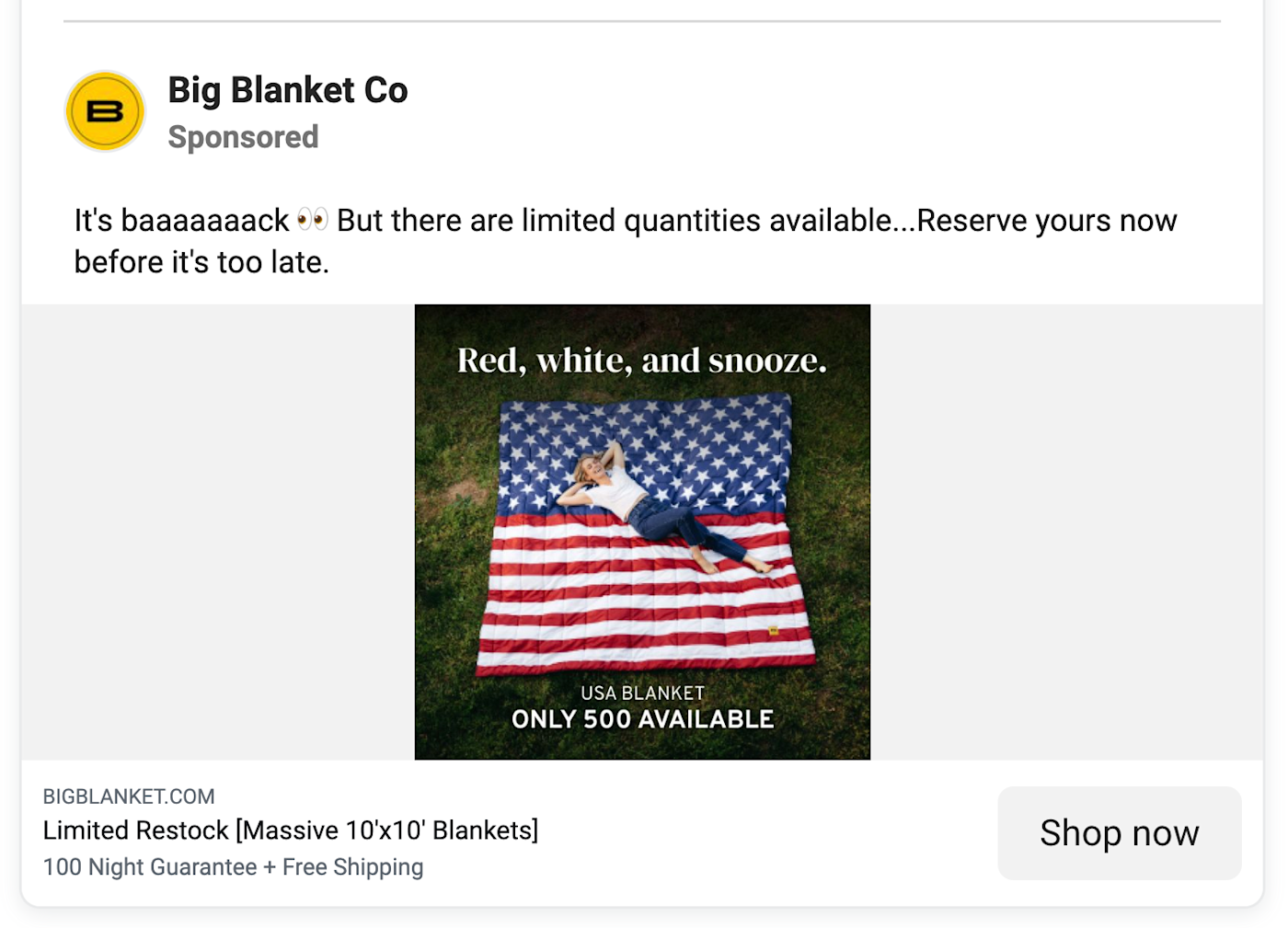
What it does right: Creates a sense of urgency, visually appealing, reassuring
The urgency of "limited quantities available...Reserve yours now before it's too late" is classic retail psychology. It's both an announcement and a challenge, like when a kid hears the whistle signaling the end of adult swim and races to be the first one to cannonball into the pool.
The "Limited Restock [Massive 10'x10' Blankets] 100 Night Guarantee + Free Shipping" is the clincher. It promises a combination of rarity, quality, reliability, and convenience, like a call to action Megazord.
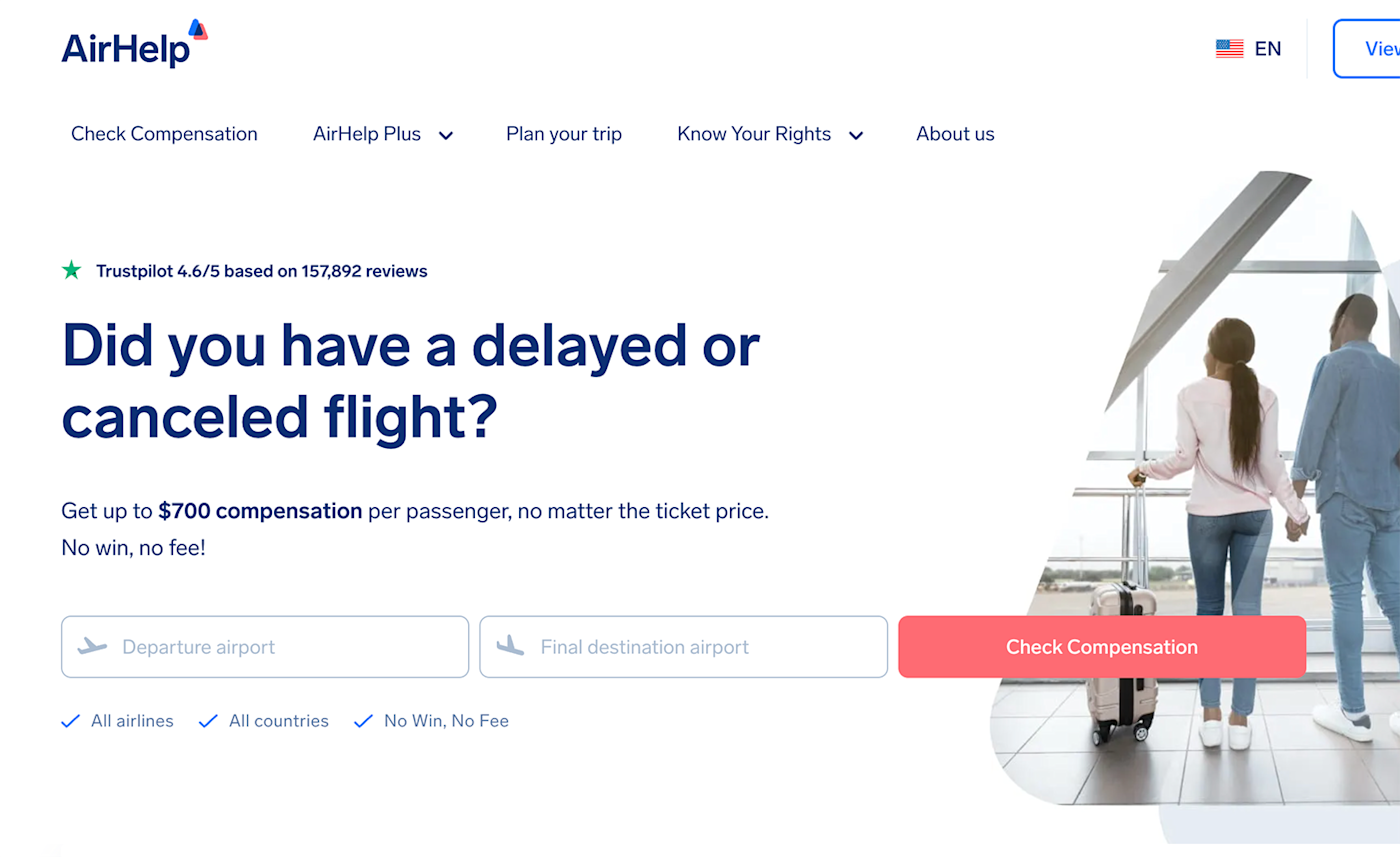
What it does right: Addresses pain points, benefit-oriented, actionable
The genius of this homepage lies not just in its promises but in its initial question—a direct prod at the pain point of its target audience that immediately evokes a visceral response. Most, if not all, travelers will mentally answer "yes" to this, recalling their own airport nightmares. It's a calculated reminder of a situation everyone wants to avoid, making the solution they offer even more enticing.
"Get up to $700 compensation per passenger, no matter the ticket price." The clarity here is commendable. They're not promising the world, but a very tangible, specific amount. And the Trustpilot rating is a nod to credibility. It's like a friend vouching for a restaurant they swear by, but in this case, it's 157,892 friends.
The two fields for the departure and destination airports are a clever touch. It's interactive, pulling me in, like when a quiz promises to tell me which '90s sitcom character I am based on my questionable life choices. (I'm George Costanza.) The button, with its sharp contrast to the rest of the page, effectively captures attention while still aligning with the brand's colors and aesthetic. "Check compensation" offers an inviting, low-effort action, subtly guiding users toward their potential relief without overwhelming them.
In a world where we're constantly sold solutions to problems we didn't know we had, this CTA addresses a very real grievance with a straightforward promise. And in the often convoluted world of travel woes, that's a breath of fresh, cabin-pressurized air.
9. Crazy Egg

What it does right: Actionable, benefit-oriented, simple
Crazy Egg's CTA isn't trying too hard to impress. It's just good—well thought out, concise, and to the point.
First, the headline: "Make your website better. Instantly." A rather bold proclamation but commendably straightforward. Its use of the word "instantly" suggests that Crazy Egg has the answers, and they're not going to waste your time.
The "Show me my Heatmap" CTA button is, once again, admirably direct. It's not pleading for a click or asking for a moment of your time. It's telling you, in no uncertain terms, what's on the other side of that click.
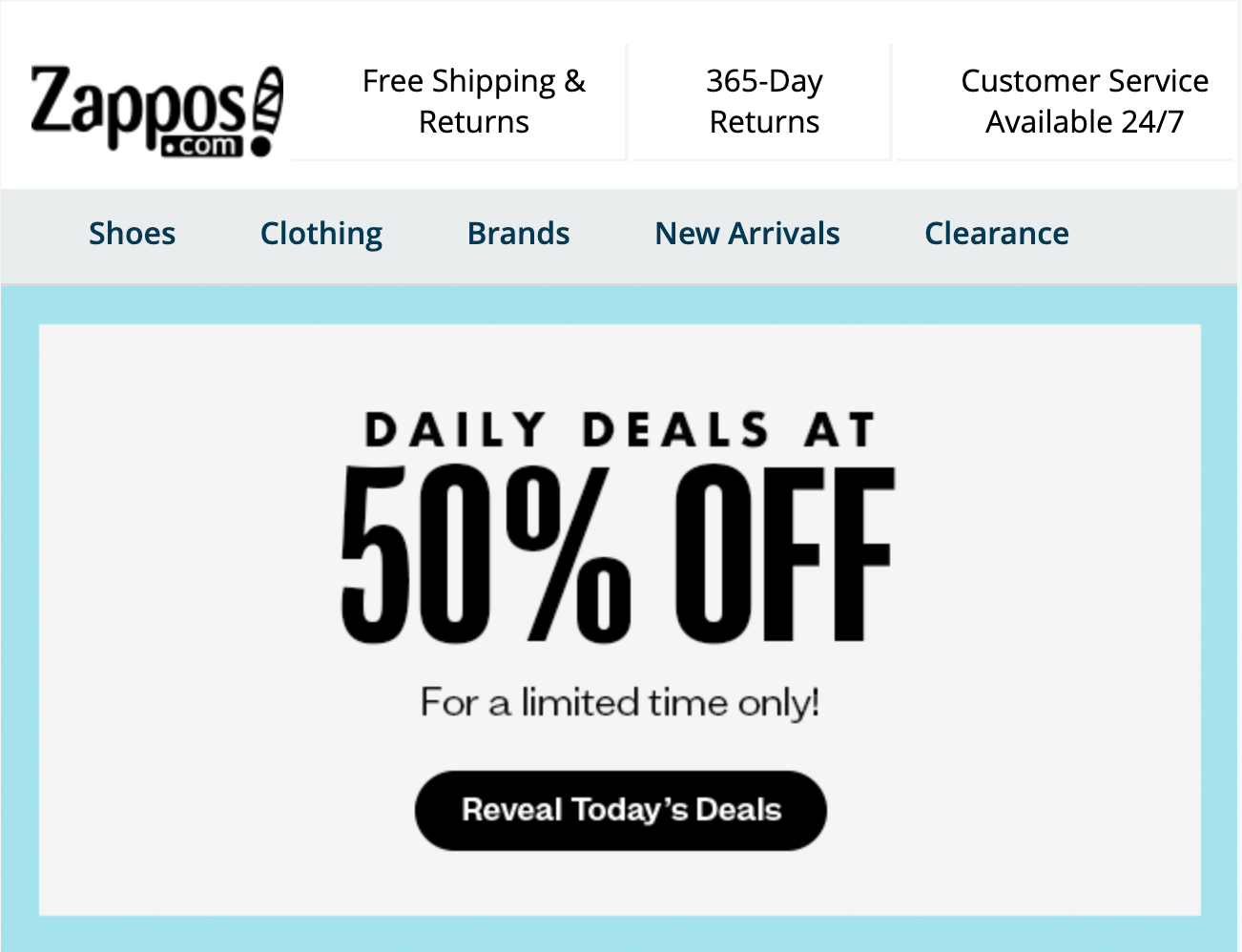
What it does right: Clear and concise, visually appealing, strong call to action verb
First off, big ups to Zappos for not making me do math. Half off? I'm already intrigued and haven't even seen the shoes yet.
"Reveal today's deals" feels like a game show moment. What's behind door number one? A pair of boots? New house slippers? It's that momentary thrill, like unwrapping a gift—even if you end up paying for it yourself.
In an endless sea of emails screaming for attention, this one from Zappos does what it needs to do: it grabs you, shakes you gently by the shoulders, and says, "Hey, want something good for half off?" And in this economy, who can say no?
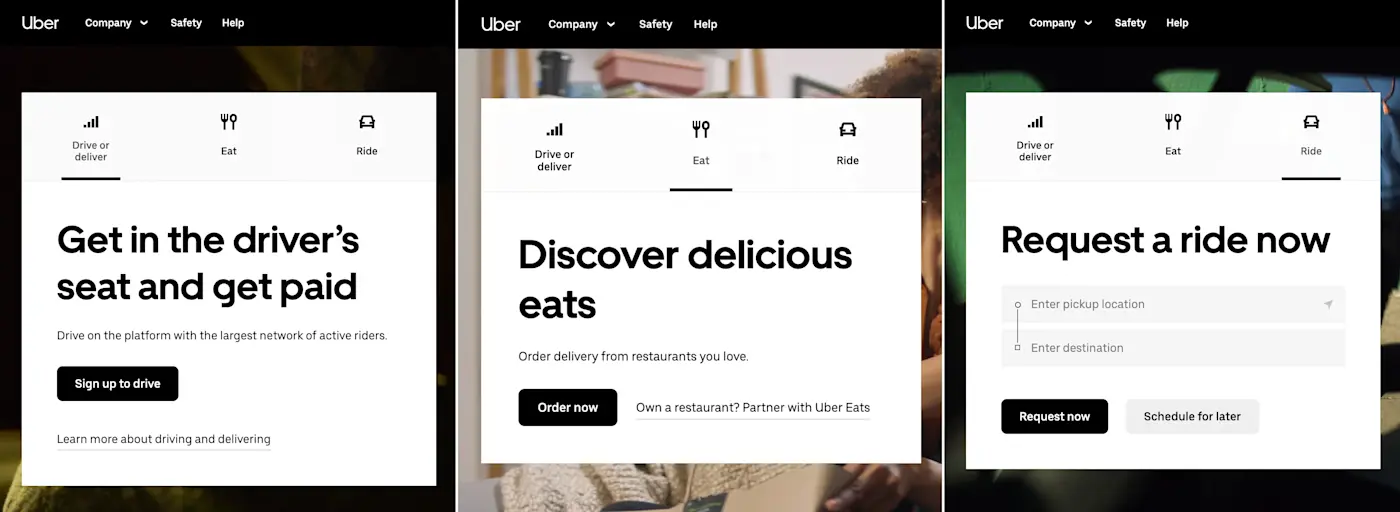
CTA placement: Landing page header
What it does right: Interactive and dynamic, personalized, sparks curiosity
By providing three clear choices (drive or deliver, eat, and ride), Uber shows that they understand and cater to the diverse needs of their users. This personalized approach instantly makes the user feel valued and attended to, whether they need a ride to the airport or just want to stuff their face.
The interactive nature of this dynamic content creates a sense of empowerment and involvement for the user. Even the tens of people unfamiliar with all of Uber's offerings will be intrigued by the distinct options, sparking curiosity and potentially leading them to explore other services beyond their original intention.
12. CareerBuilder
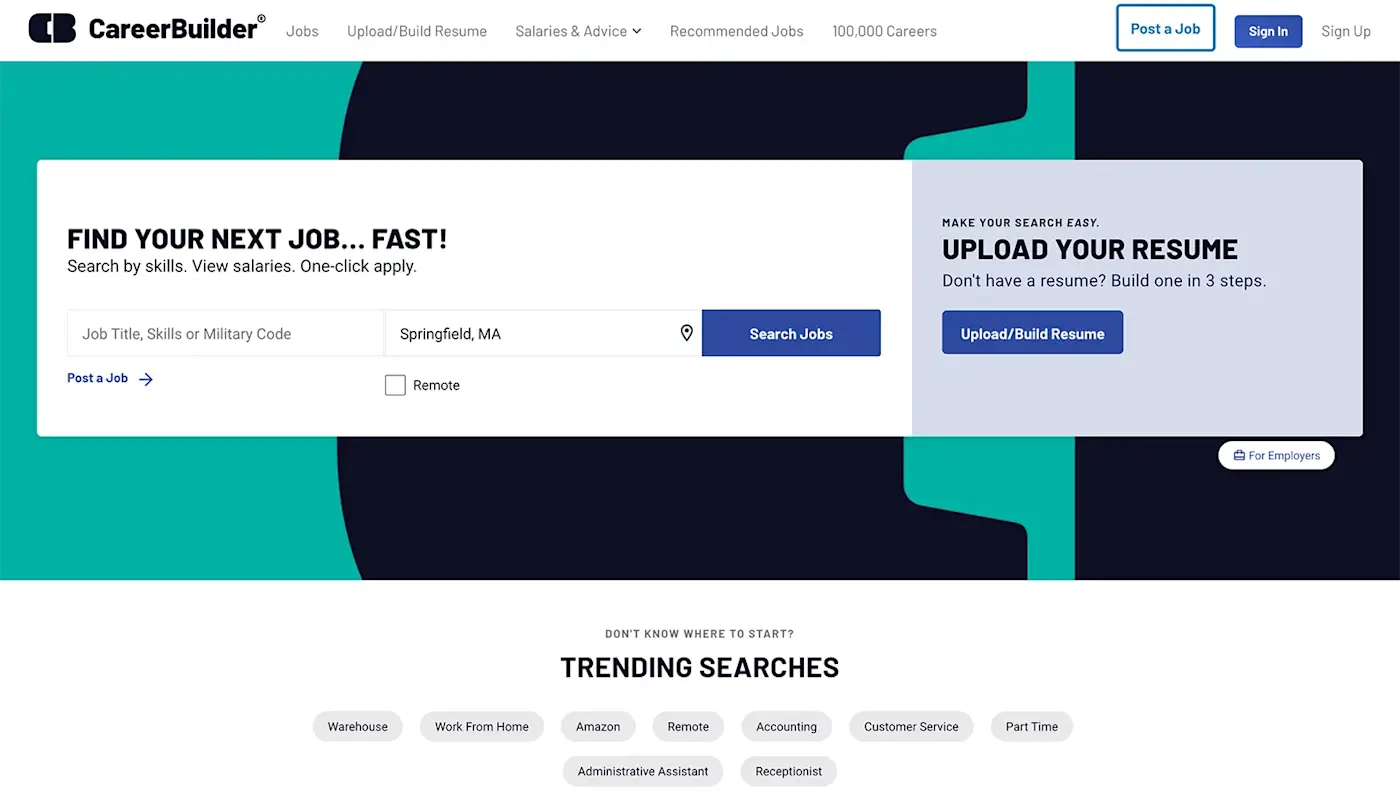
What it does right: Clear and concise, click-worthy secondary CTA
"Find your next job…fast!" Who are you, my dad? Although I suppose if someone's clicking their way onto a job-finding website, they're there for one reason: to snag a job, and preferably one that doesn't make them want to put a campfire out with their face.
CareerBuilder doesn't dilly-dally—they allow you to type in your wildly specific and/or desperate job requirements. And who's going to turn down the resume help offered in the secondary CTA? Talk about a lead magnet.
13. Airtable
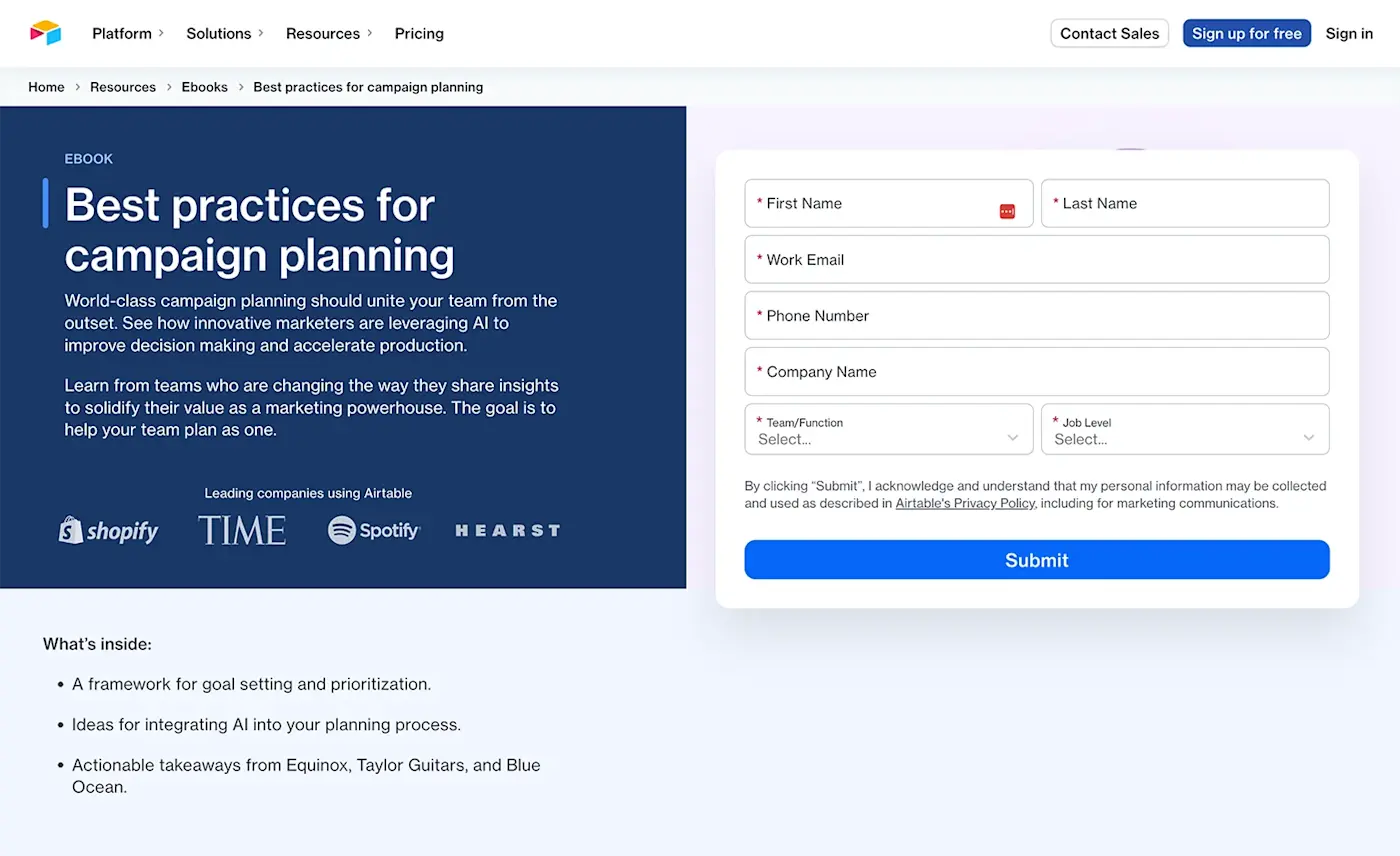
CTA type: Gated content
What it does right: Social proof, sneak preview, clear and concise
You may be wondering why I included a very basic "submit" button in a CTA showcase, but pairing a straightforward button with great supporting elements like the headline, social proof, and sneak preview, is like sipping top-shelf wine from an old jelly jar. Sometimes, the simple stuff just ties everything together.
The large headline is as direct as my comments on whether a hotdog is a sandwich. (It's not.) Aimed at the so-called professionals in campaign planning, it speaks to a certain crowd, much like literally anything speaks to Swifties looking for Taylor's latest Easter egg.
The mention of leading companies like Shopify, Time magazine, Spotify, and Hearst adds credibility and trustworthiness. It's basically saying, "If these giants trust us, maybe you, in your comparatively minuscule existence, should, too."
The bullet list detailing what's inside the eBook provides clarity on the content, letting users know exactly what to expect, including insider tidbits from recognized brands. So, not only do you get smarter, but you also get to casually name-drop at the next girls' night. "I've been implementing campaign planning strategies inspired by Equinox and Taylor Guitars. NBD."
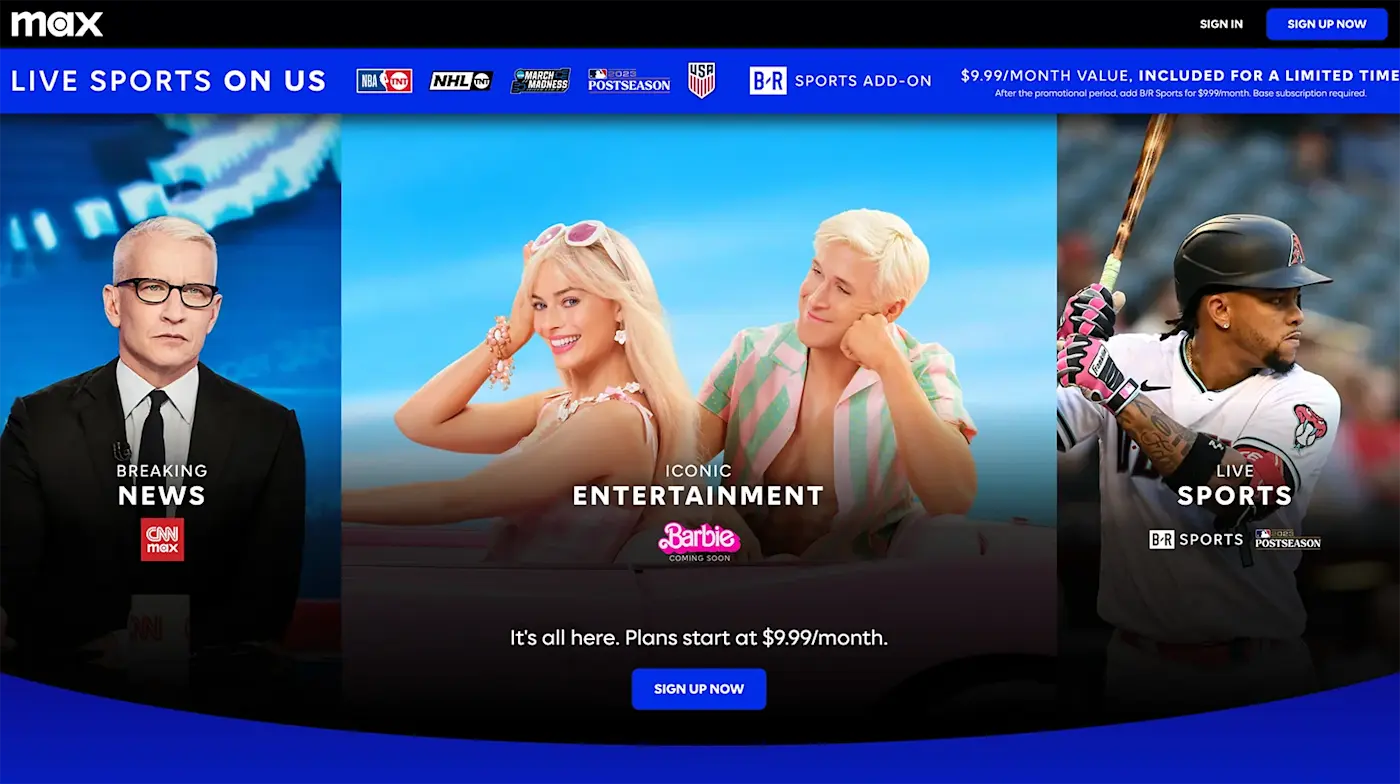
CTA type: Closing the sale
What it does right: Showcases diverse selection, clear and concise, highlights affordability
Max presents an impactful CTA through the Neapolitan ice cream of hero images, featuring Anderson Cooper, Ketel Marte, and Margot Robbie with Ryan Gosling. Collectively, these three flavors depict a panoramic view of Max's offerings, emphasizing a wide variety of choices only rivaled by the Cheesecake Factory menu.
In a world drowning in content, they've managed, quite succinctly, to sum it all up with "It's all here. Plans start at $9.99/month." The ensuing "Sign up now" button invites visitors to subscribe, anchoring the CTA by providing a straightforward pathway to accessing all the consumable content your heart desires.
15. Adobe Stock

CTA placement: Google Search ad
CTA type: Free trial
What it does right: Benefit-oriented, actionable, relevant to the target audience
This paid search ad nails the CTA with a clear and easy-to-understand message. The headline "Free trial - Find the right image faster" immediately grabs attention by offering a low-risk way to experience the service. It also addresses a common pain point for users, highlighting the platform's efficiency.
In very few words, Adobe found a way to combine attention-grabbing language, address user concerns, highlight the platform's strengths, and offer a valuable deal, making for a cleverly crafted CTA. If I were into such things, I might even click on it. But I have people for that.

CTA placement: Email
CTA type: Event promotion
What it does right: Multiple engagement opportunities, attention-grabbing, personalized
Much like the free sample stations at Costco, the strategic placement of three CTA buttons ensures the reader has multiple opportunities to engage, regardless of how far they wander (or scroll).
The header image immediately grabs attention with its vibrant graphic detailing key event highlights. This provides a quick snapshot of what to expect and builds anticipation.
Personalizing the body of the email to address readers by name creates a sense of intimacy. Instantly, they're all ears and feeling special.
How to write a call to action
Your calls to action should be unique, specific to where it's featured as well as your particular audience and targets. That said, the best CTAs do share some characteristics that you can apply wherever they may be.
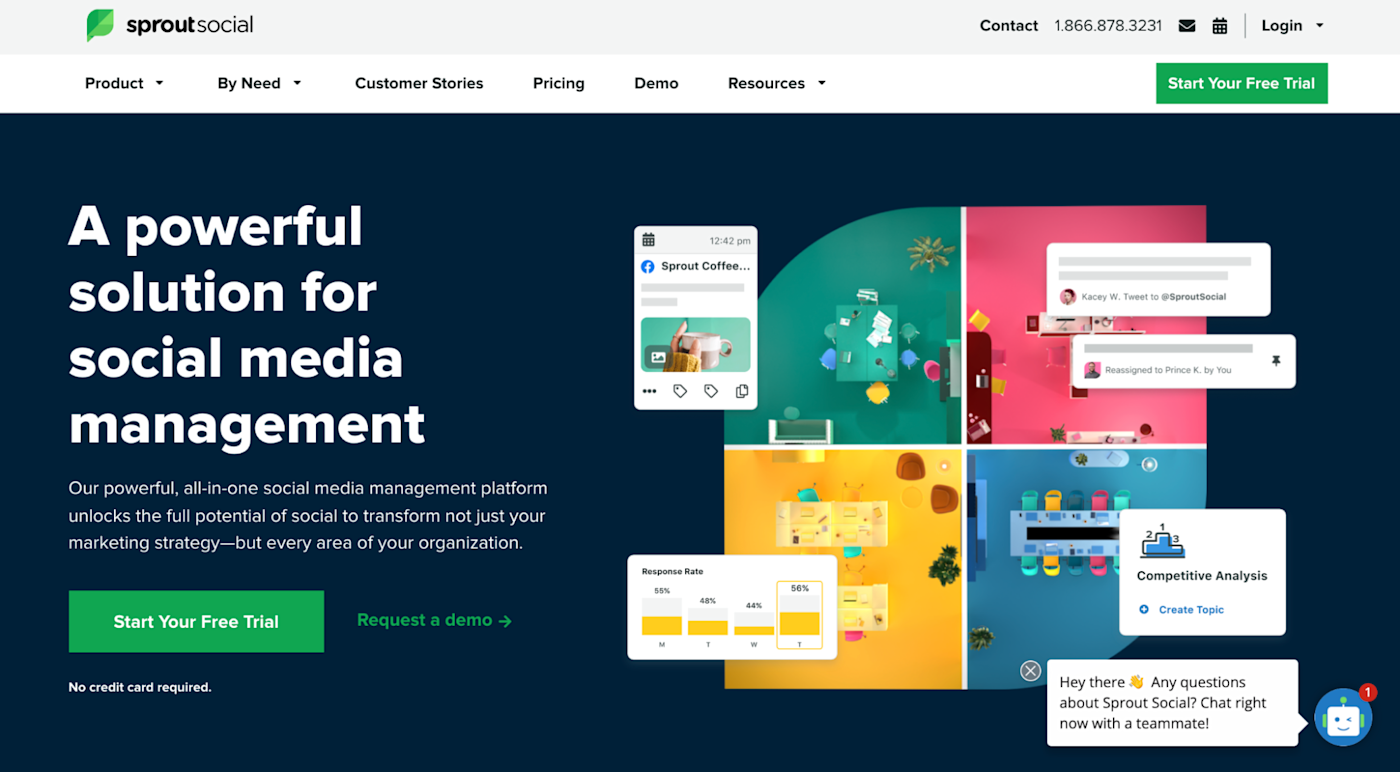
If you're looking for one secret to effective CTAs, here it is: give them a reason to click, share, or hand over their email address . More important than the wording, placement, or color of your CTA is the underlying incentive a person has to follow it. How will answering your call to action help them?
A good call to action restates its benefit bluntly and succinctly.
If you're offering a discount, remind them what percentage.
If they're getting a free PDF, mention the words "free" and "PDF."
If you're using a standard link, typically you write the incentive in your CTA's anchor text (the clickable text). In the case of social media posts and ads, you should reserve the last line in your message for your call to action, so mention any benefits there.
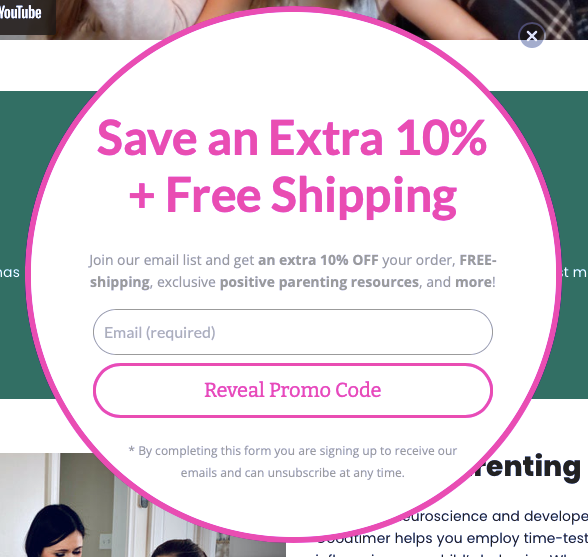
If you're using a button CTA, you have to limit the number of characters you use, so it's better to add secondary text. While the button can say something basic like "buy now," nearby you should include a line or two to remind visitors about the advantages to clicking.
Transparency
For starters, say exactly what will happen when you click. Remove all mystery with specifics. For example, saying "start your download automatically" is more descriptive than "click here to download." (For button CTAs, with limited space, you can include secondary text nearby.)
You want to acknowledge any user doubts and assuage their fears. If visitors are worried about security, they're not going to click, so reassure them that you understand their concerns. One of the big fears, in the case of email signups, is spam. You might want to gently remind visitors that you won't share their information and that you'll only email them once a week, twice a month, or whatever the case is, to keep their imagination in check.
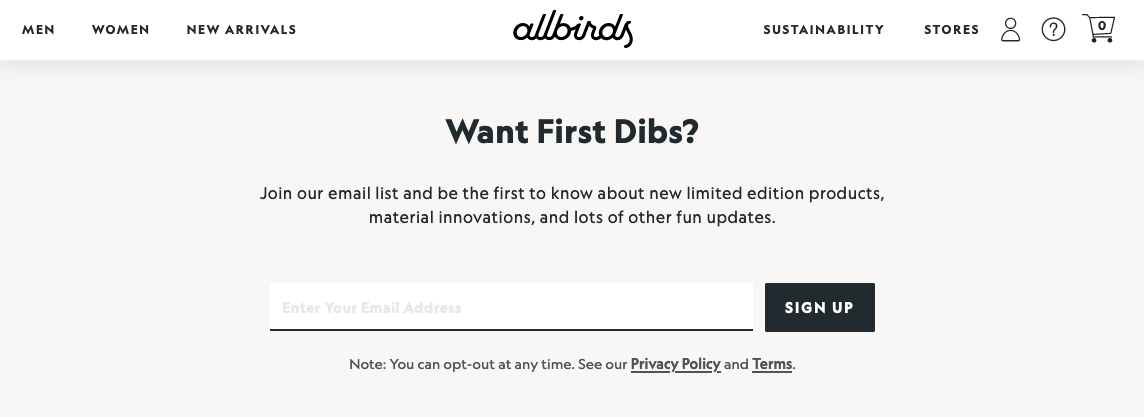
You can build trust just by being upfront about everything from the beginning. You'll find people are more receptive to your CTA pitches when they know precisely what to expect.
Command and wording
Don't be shy about calls to action! Some people soften their language to avoid being pushy, but CTAs should be strong and unapologetic. After all, if you followed rule #1 (incentive), then what you're offering is beneficial to the visitor.
That's not to say you should be rude or demanding (please don't); there's a perfect balance somewhere in there between a strong suggestion and a forceful command. Above all, the reader must always feel they have a choice; your call to action is there to convince them of the choice you think they should make.
Share this post
Join our newsletter
Subscribe for more deals
This makes the statement sound stronger, and at the same time, clearly communicates what the user should do.
Likewise, avoid wording that weakens your call to action, including "please" (no matter what Grammarly tells you) and modifiers like "could" and "would." There's a time and place for gentle language, but calls to action are not one of them.
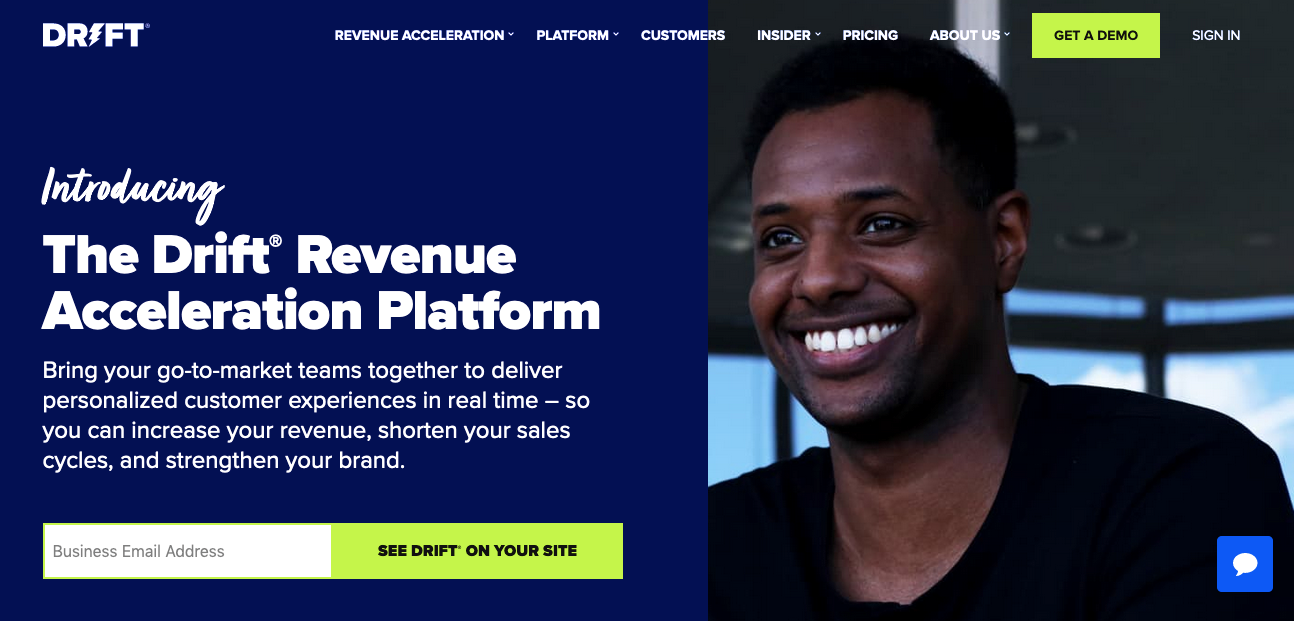
Word choice is important to CTAs, not only for making a persuasive argument, but also for fitting the space allotted.
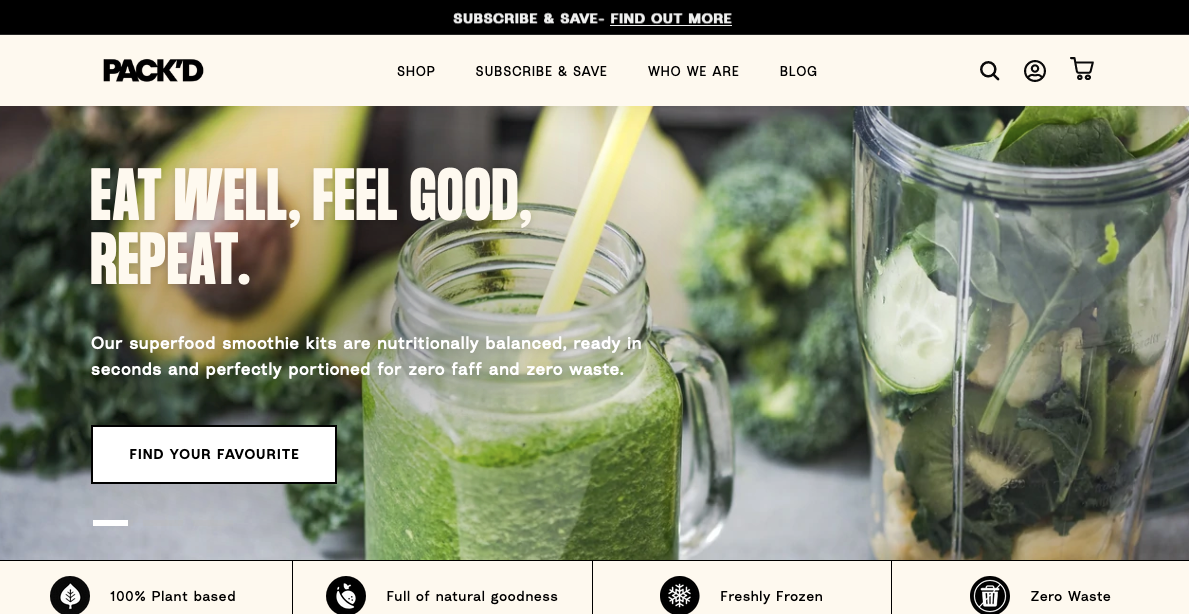
They're not foolproof, but in my experience, these words tend to improve CTA performance and the effectiveness of most sales copy. And because most of them are short, you should have no problem fitting them into your CTA space.
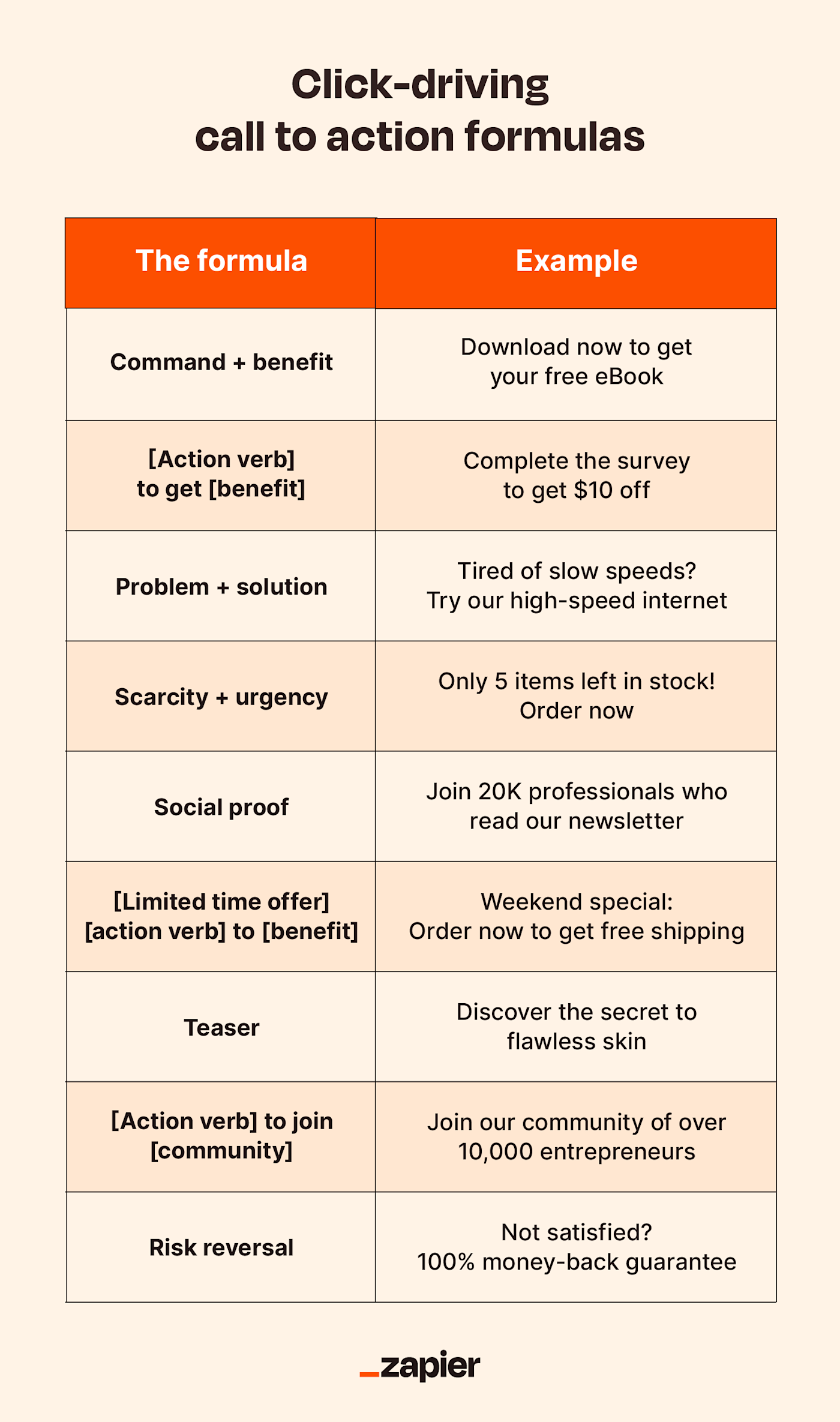
How to design call to action buttons and banners
Now that we've covered the writing, let's talk about how your CTA should look. The design, layout, and typography of your call to action all play major roles in its success.
CTA design best practices
If you're placing your call to action on a web page or other content you design yourself, you want to place it at the top of your visual hierarchy. Your CTA should be the most noticeable element on the page. To achieve this, you want to pull out all your design tricks:
Contrasting colors: CTAs should generally contrast with the rest of the page's design. Visitors shouldn't have to work to find what to do next. Use a vibrant color for your CTA, especially against a dull background. Can you spot it from six feet away? Good.
Optimal size: Make the button and text larger than the surrounding elements but not so large that it overwhelms other content. It should also be easily clickable, especially on mobile devices.
Clear typography: Use a legible font that complements your brand. Ensure the text is large enough to read but doesn't crowd the button. You can play with typography to emphasize key words. Commonly, operative words like "free" are set in a different color or sometimes even a different font to attract more attention.
Negative space: Surround your call to action with plenty of negative, or empty, space. Setting your CTA apart from the other elements makes it more noticeable and gives it more importance in the eyes of your visitors.
Emoji use: Some brands find success with emojis, but if you choose that approach, remember that a little goes a long way.
Consistent styling: While CTAs should stand out, they should still align with your brand's overall design aesthetic. Consistency in design builds trust.
Call to action testing and iteration
Last but not least, you should evaluate how successful your final call to action is and identify room for improvement. Creating your CTA may feel like a lot of guesswork and shooting in the dark—because it is. Testing it is much more clear cut.
To get a basic idea of your CTA's performance, take a look at your analytics. Compare the page traffic to the number of conversions, and see what percentage of your total visitors clicked.
If your conversion rate is significantly lower, it's worth doing an A/B test on your design and copy. Try two different versions of your call to action, experimenting with different phrasing, colors, or fonts, and see which one performs better with your target audience. It's the most efficient way to reveal what works and what doesn't with concrete, empirical data, ensuring your CTA resonates with the target audience and drives the desired action.
Improve your CTAs now, free!
While my dad's approach might have lacked the finesse of a well-designed button or the allure of clever copy, the sentiment was clear. And that's the heart of every good CTA. Whether you're nudging a visitor to make a purchase or nudging your offspring out of the nest, the principle remains the same. CTAs are about engaging your audience, prompting action, and, occasionally, a very pointed reminder to update your LinkedIn profile.
Related reading:
Get productivity tips delivered straight to your inbox
We’ll email you 1-3 times per week—and never share your information.

Allisa Boulette
Based in New England, Allisa is a content marketer and small business owner who hopes to make the internet a more interesting place than she found it. When she’s not working, you can find her lying very still not doing anything.
Related articles

How to measure brand awareness: 9 key metrics to track
How to measure brand awareness: 9 key...

A social media audit template (and how to use it to perform an audit)
A social media audit template (and how to...
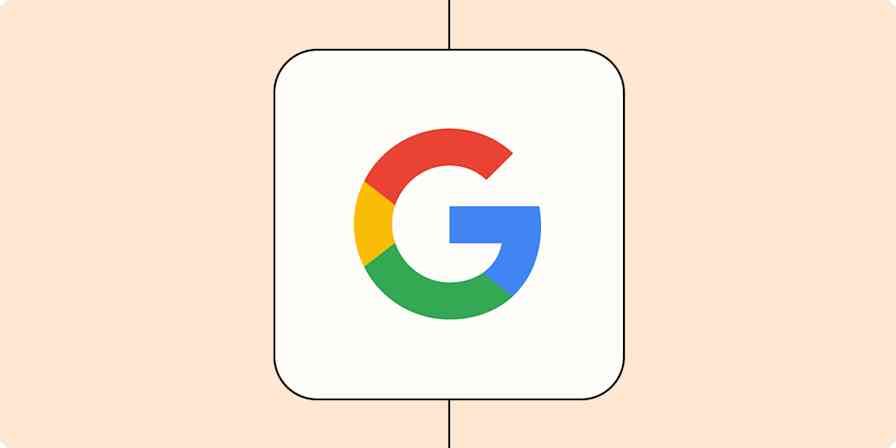
How Google AI Overview impacts 20 industries

How to use ChatGPT for copywriting and content ideation
How to use ChatGPT for copywriting and...
Improve your productivity automatically. Use Zapier to get your apps working together.

- Speech Writing
- Delivery Techniques
- PowerPoint & Visuals
- Speaker Habits
- Speaker Resources
Speech Critiques
- Book Reviews
- Browse Articles
- ALL Articles
- Learn About Us
- About Six Minutes
- Meet Our Authors
- Write for Us
- Advertise With Us
5 Keys to End Your Speech with a Great Call-to-Action
Yet many speakers miss a fantastic opportunity with a call-to-action that is wishy-washy, hypothetical, or ill-constructed. Even worse, some speakers omit the call-to-action entirely.
A poor call-to-action undermines the effectiveness of your speech; a great call-to-action stirs your audience to act enthusiastically.
In this article, we reveal the qualities of a strong speech call-to-action which will lead your audience to act.
What is a Speech Call-To-Action?
A speech call-to-action is an explicit appeal to your audience to take a specific action following your speech. A call-to-action is most often made at the conclusion of a persuasive speech.
“ If you have been persuasive and your audience is emotionally invested, the best time for action is now. ”
For example, you might call on your audience to…
- … adopt a new business process
- … sponsor an event
- … attend an event
- … fund a research initiative
- … register to vote
- … join a club
- … train for a marathon
- … read out loud to their children
- … donate money to a charity
- … travel to Saskatchewan
- … buy a fire extinguisher
- … eat more vegetables
- … use public transit
Guidelines for a Strong Speech Call-to-Action
Your call-to-action and your approach to delivering it may vary according to your audience and your speaking style. While there is no rigid formula, there are a number of guidelines which will improve the effectiveness of your call-to-action.
- Make your call-to-action clear and direct.
- Have your audience act quickly.
- Lower barriers to action.
- Focus on benefits for your audience.
- Customize your call-to-action for each person.
1. Make your call-to-action clear and direct.
Don’t hint. Don’t imply. Don’t suggest.
It’s not a whisper-to-think-about- action; it’s a call-to -action.
Use direct language, and eliminate wishy-washy phrases.
- Instead of “Maybe you could think about joining…”, say “Join…”
- Instead of “It would be good to train for…”, say “Train for… “
Don’t assume that your audience will “figure out” what needs to be done. (I have made this mistake in the past and regretted it.) If members of your audience walk out of the room thinking “Wow, this sounds great, but I’m just not sure what to do…”, your call-to-action was not clear enough.
2. Have your audience act quickly.
If you have been persuasive and your audience is emotionally invested, the best time for action is now. The longer it takes to initiate the action, the more likely that your audience will lose motivation.
So, an ideal call-to-action is one which your audience can act on immediately, perhaps even before they leave the room. If this isn’t feasible, then aim for actions which can reasonably be completed (or at least started) within hours or a day or two.
3. Lower barriers to action.
To help your audience act quickly, eliminate as many (trivial or non-trivial) barriers as you can.
For example, ask the following questions about your audience.
- Do they need to sign up? Bring forms and pens and pass them out.
- Do they need to read additional information? Bring handouts, or copies of books, or website references.
- Do they need approval before they can act? Make the first call-to-action to organize the meeting with stakeholders.
- Do they need to pay? Accept as many forms of payment as possible.
A common psychological barrier is the perception that the suggested action is too big or too risky. This is a legitimate concern, and is often best handled by dividing the call-to-action into several small (less risky) actions.
For example, “train for a marathon” may be too large of a call-to-action for a non-runner. A better call-to-action would be to join a running club or train for a shorter race.
4. Focus on benefits for your audience.
“ A poor call-to-action undermines the effectiveness of your speech; a great call-to-action stirs your audience to act enthusiastically. ”
Always frame your call-to-action in the audience’s best interest.
For example, don’t say this:
- What I’d really like you to do is…
- It would make me so happy if you…
- My foundation has set a target of X that we can reach with your help…
Making you (the speaker) happy is (probably) not highly motivating for your audience.
Instead, say this:
- Build your financial wealth by…
- Make your community a safer place to live for yourself and your children by…
- When you volunteer, you build your skills and gain valuable experience…
Surround the call-to-action with a description of how their lives will be improved when they act. Paint a prosperous vision.
5. Customize your call-to-action for each person.
Audiences don’t act; individuals act. Rather than addressing the group as a whole, focus your call-to-action on each individual in your audience.
Suppose your goal is to have a new business process adopted. Each individual in the room may play a different role in accomplishing this.
- For the person who controls the budget, the call-to-action is to allocate the necessary funds.
- For the personnel manager, the call-to-action is to delegate staff to work on the initiative.
- For others, the call-to-action may be to attend in-depth training about the new process.
Audience analysis is critical . If you know who is in your audience, and understand their motivations and capabilities, you will be able to personalize the call-to-action for them.
Put it into Practice
By working on the planning and execution of the call-to-action in your speeches, you’ll become a more persuasive and effective speaker.
Look back to your last persuasive speech.
- Did you make a clear and direct call-to-action?
- Was your audience able to act quickly on it?
- Did you make an extra effort to lower barriers to action?
- Did you highlight the benefits for your audience?
- Did you address individuals rather than the group with a personal call-to-action?
If the answer to any of the above questions was “no”, then how could your call-to-action have been improved?
Please share this...
This is one of many public speaking articles featured on Six Minutes . Subscribe to Six Minutes for free to receive future articles.
Image credit: Megaphone man at the Metro 4 by Hazzat ( CC BY 2.0 )
Add a Comment Cancel reply
E-Mail (hidden)
Subscribe - It's Free!
| Follow Us |
Similar Articles You May Like...
- 10 Ways to End Your Speech with a Bang
- The Ladder of Abstraction and the Public Speaker
- Speech Critique: Dan Pink (TED 2009)
- Bookending Your Speech: A Master Technique
- Speech Analysis: Gettysburg Address – Abraham Lincoln
- Presentation Power: Four Ways to Persuade
Find More Articles Tagged:
11 comments.
This is a great article. I found in it very useful tactics. thanks a lot.
Brilliant!… can’t wait to put into action. thank you
I really like your tips #3 & 4 about focusing on audience benefits and lowering barriers to action.
Not sure how the tip about personalising the call-to-action should work though. Might you have (say) 3 calls to action if there are 3 decision-makers in the audience?
Very useful to my line of work. Thanks. Keep it up
What would be a good call to action for drug abuse?
Thank you, I found this very helpful in some situations. I definitely recommend this.
My teacher sent me here It really helped. Thank you for taking your precious time to make something to help others even though you didn’t have to. It is very much appreciated
Thank you soooo much it really helped me on my essay for school thank you so much .😊😊😊
I am working on reframing a call to action for a speech THANK YOU for the help ahead of time
How do you write a call-to-action about global warming?
I appreciate your six minute articles Thank you
Recent Tweets
5 Keys to End Your Speech with a Great Call-to-Action https://t.co/a8rputDpUk by @6minutes — @red_suraj Nov 6th, 2017
“A poor call-to-action undermines the effectiveness of your speech; a great call-to-action stirs your audience to a… https://t.co/VbYz3VcxvH — @ToppComm Jul 3rd, 2018
Ending a speech in a meaningful, impactful way is CHALLENGING! Luckily, we have helpful guidelines from @6minutes o… https://t.co/3z46iJn6Os — @speakupcamb Aug 7th, 2018
5 Keys to End Your Speech with a Great Call-to-Action https://t.co/8E7KimKeRE by @6minutes — Mel Sherwood – Pitch & Presentation Specialist (@MelSherwood_) Sep 7th, 2018
5 Keys to End Your Speech with a Great Call-to-Action https://t.co/vkMpPLLHwK by @6minutes — Marcie Hill (@Marcie_Hill) Sep 17th, 2018
5 Keys to End Your Speech with a Great Call-to-Action https://t.co/W8ctelzMPc — @surajd_ Oct 25th, 2018
As a #publicspeaker, you want to see your listeners taking action because of you. To help your audience take action… https://t.co/d4Vf5nSgtS — @GregoryCNSmith Nov 14th, 2018
What is a Speech Call-To-Action? In this article, we reveal the qualities of a strong speech call-to-action which w… https://t.co/nrUtrhIzPS — Free You Up VA (@freeyouupva) Dec 29th, 2018
As Toastmasters, or public speakers, we are usually trying to persuade our audience to take action. Check out his… https://t.co/Tf9LF5ocKj — IS Toastmasters 1424 (@istm1424) Mar 4th, 2019
“Surround the call-to-action with a description of how their lives will be improved when they act. Paint a prospero… https://t.co/ZPGExX28nM — Oke’ Toastmasters (@oketoast) Mar 4th, 2019
Featured Articles
- Majora Carter (TED, 2006) Energy, Passion, Speaking Rate
- Hans Rosling (TED, 2006) 6 Techniques to Present Data
- J.A. Gamache (Toastmasters, 2007) Gestures, Prop, Writing
- Steve Jobs (Stanford, 2005) Figures of speech, rule of three
- Al Gore (TED, 2006) Humor, audience interaction
- Dick Hardt (OSCON, 2005) Lessig Method of Presentation
Books We Recommend
| [ ] | [ ] | [ ] |
| [ ] | [ ] | [ ] |
| [ ] | [ ] | [ ] |
| Follow Six Minutes |
Six Minutes Copyright © 2007-2022 All Rights Reserved.
Read our permissions policy , privacy policy , or disclosure policy .
Comments? Questions? Contact us .

VisualStory®
- Duarte DataStory®
- Presentation Principles™
Slide:ology®
- Slide Design
Speaker Coaching
- Presenting Virtually™
- Illuminate™
- Adaptive Listening™
- Team training
- Learning journeys
- Brand and product storytelling
- Keynotes and events
- Sales enablement
- Communication systems
- Accelerator Lab™
- Our culture
- Our leaders
- Case studies
- Media mentions
Guides and tools
- Learner support
The secret to writing a call to action in a persuasive speech

Nancy Duarte
A well-constructed and delivered presentation changes minds and ignites action.
Yet, there’s a key part of a presentation that doesn’t get mentioned enough — the call to action or CTA — and, a clear CTA creates a critical turning point in your presentation (or any other form of persuasive communication, too).
What is a call to action in writing?
The call to action in writing persuasive speeches comes right before the end of a persuasive speech where you clearly tell the audience a role they can play after they leave your talk. The CTA gives audience members concrete tasks to tackle, and these tasks must be completed in order to bring your ideas to fruition. And, it’s a key part of what makes your speech, persuasive.
An audience might be thoroughly gripped by your narrative and convinced to believe what you do — but if they leave not knowing what they are supposed to do with your ideas, your presentation will have been — essentially fruitless.
Because CTAs are such an important part of a presentation, it’s essential to make sure that the one you deliver lands with the people hearing it. The way to ensure that you write a call to action that persuades is to keep in mind that one size does NOT fit all — and you’ve got to tailor your CTAs.
People respond to different types of calls to action based on their:
- Temperaments
- Daily activities
So it’s important to get to know who is in your audience before you decide how you’re going to deliver their post-talk “to-dos.” Once you do, you can ensure your persuasive call to action actually gets a response.
Understanding your audience involves empathy. To get started easily, download our free Audience Needs Map ™. It’ll help you figure out and analyze the best persuasive calls to action for your presentation so that it concludes with success.

Start with your audience for your call to action speech
Before writing your calls to action in your persuasive speech, you need to think about your audience. What is their make-up? What makes them tick? In most presentations, there are four distinct skills your audience has. Remember these as you write your calls to action:
- Influencers
- And Innovators
To get your audience to act, your CTAs have to strike a chord and make sense with the skills they bring to the table. Taking action will seem natural for them when they can respond with an action that resonates with them. Audiences have a mix of all these skills, and you should appeal to each of them in your presentations . Let’s break this down.
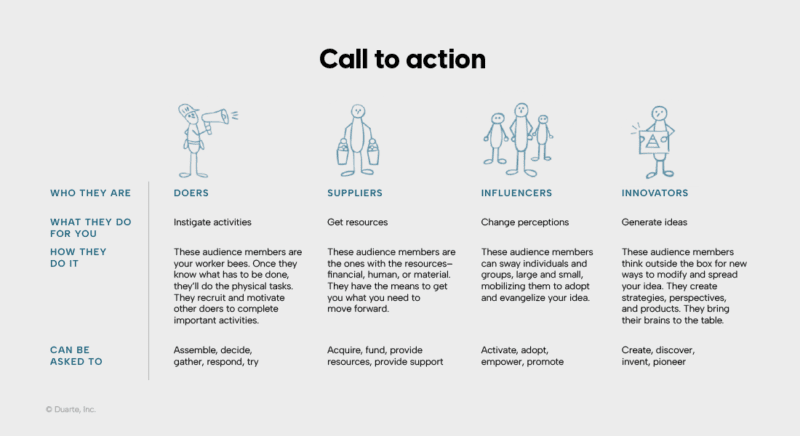
4 call to action examples in persuasive writing
1. getting doers to do something.
Doers are the worker bees of an organization. They are the ones that hear what needs to get done — and then do it. Doers don’t shy away from physical tasks, and have the ability to round up the troops to inspire action in others, as well. Doers make an organization run day in and day out.
If you’re speaking to doers, you’ll want to craft your CTA so that it includes action words that clearly explain what the doers should do. Some examples of call to action language for them involve asking them to:
2. Motivating suppliers to share
Suppliers are usually not as action-oriented as doers. However, they have a lot of resources at their disposal — like money, manpower, materials, etc. Because of the amount of resources they have, suppliers have the means to help people move forward. They can get you the resources you don’t have yourself.
Suppliers in your audience may be execs who could give you staff — or, investors who are trying to decide whether they want to put their money into a venture — or not.

To appeal to suppliers, you need to use different words than you would with the doers, since they’re not the ones that are going to be hitting the ground running to complete tasks. Instead, you’ll want to ask them to share their resources.
You may want to use words like:
These can help to appeal to the fact that they have something to give in order to make a change happen.
3. Influencing on your behalf
Influencers have the power to sway . They can change the minds of individuals and groups — large or small. Influencers are the people who mobilize others. They also evangelize ideas, and they know how to get people to change their beliefs and behavior.
Many influencers are leaders and others look up to them and follow their advice. Influencers can also be people in the spotlight, who people tend to model after — like celebrities or public figures.
When you craft a call to action for an audience of influencers, you want to appeal to their ability to inspire other people. Great call-to-action phrases for influencers include:
Many have social channels where they can share with others what you need for your idea to become reality.
4. Inviting others to innovate
The last type of audience member is the innovator. Innovators are people who can think outside-of-the-box when they hear an idea, and then think of ways to modify that idea. Innovators have outstanding brains in their heads. They can dream up strategies, clarify perspectives, and invent products. These people can generate something new where nothing existed before.
Anybody can be an innovator. But, often, innovators are founders of companies or creators of new products. They can be engineers, artists, or entrepreneurs, and they typically handle fewer of the day-to-day tasks and more of the conceptual work.
To get support from an innovator, appeal to their ability to create things. The best call-to-action phrases for innovators include:
- Offers to invent
You want to spur an audience of innovators to leave, ready to make something new.
Don’t end with your call to action
Appealing to what motivates various audience members is important to inspire action. However, to make sure your well-tailored CTAs land, you shouldn’t end with your call to action. Nobody ever wants to simply be saddled with a lengthy to-do list.
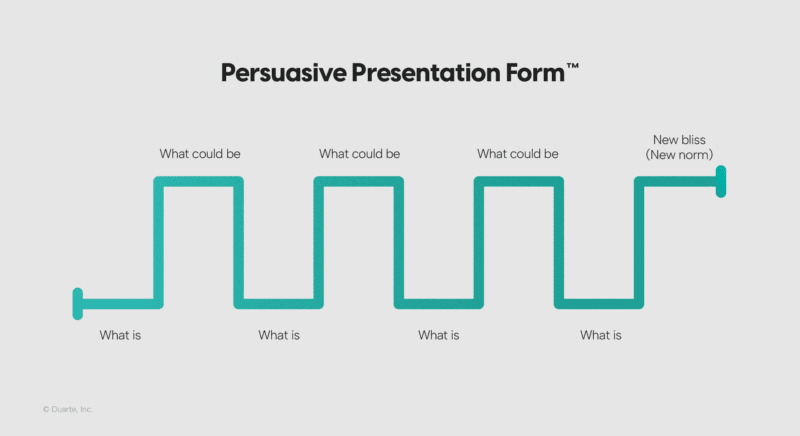
Instead, after you deliver your CTA, paint a picture of what is going to happen for audience members once they complete the requested action. I call this the new bliss in my Resonate® workshop. Throwing out a CTA creates curiosity for listeners; they want that curiosity satisfied by understanding what will happen after the action is over. This satisfaction — and a picture of what the future could look like — will inspire people to act.
Alfred Chuang, founder and CEO of Magnet Systems, recently delivered a UC Davis Commencement speech that contained an example of a powerful CTA that described what would happen if listeners chose to act. Chuang encouraged the audience of engineering graduates to keep working on innovative projects.
He ended: “A new world is on the horizon. And it will be more incredible than any of us can possibly imagine. Our greatest innovations are ahead of us, not behind. But we need great engineers to build that world for us. And that’s you. We need you to not give up. Ever. We need you to finish your projects. Done, done, done … And we need you all to be a little insane.”
If you deliver a presentation that is gripping and empathetic, you’ve almost delivered the perfect presentation . All that’s left is including a CTA that clearly explains what listeners could do to help push your idea forward — and an ending that paints a picture of what the world will look like if they help. Then, you can leave your presentation knowing that you’ve delivered a talk that’s going to move people to act.
To learn more about crafting and delivering persuasive presentations, take our Resonate® workshop . And to have us build a persuasive presentation for you with a strong and clear call to action, inquire about our Agency services today.

This article was originally published on August 2, 2017. It has been updated in August 2024 for relevancy.
Check out these related courses
Adaptive Listening™
Build trust and traction
Uncover a better way to listen that goes beyond active listening and paying attention. Learn about the way you prefer to listen, and adapt to meet the needs of others.
Captivate™
Improve your public speaking
Overcome bad habits, conquer fears, and increase your confidence in any speaking setting. Discover your strengths and build on them to improve your delivery.
Structure and storyboard a talk
Analyze your audience and organize your ideas into a story structure that will move them. Transform content into visual concepts and build a storyboard for your presentation.
Illuminate™
Drive strategic change
Craft an effective communication strategy that sparks and sustains change with empathetic speeches, stories, ceremonies, and symbols that motivate and inspire teams.
Personalized help for speakers
Up-level your speaking skills with one-on-one support. We’ll help you rehearse your talk, polish your presence, and transform your message delivery.
Craft a persuasive talk
Learn how the world’s greatest speakers use story to persuade. Develop a story structure that powerfully expresses your ideas, applying the principles of empathy, contrast, and variety.
Presentation Principles™
Learn presentation basics
Follow a step-by-step method to write compelling stories, amplify ideas visually, and present with confidence while learning at your own pace.
Turn ideas into visuals
Use visual thinking and design principles to transform information into effective and memorable graphics for presentations.
Create “skimmable” documents
Build helpful pre-reads and impactful leave-behinds with presentation software to support knowledge sharing and decision-making.
Check out these related resources

The ultimate guide to contrast: What your presentation is missing
Need to deliver a great presentation? Master the art of contrast to make sure it’s unforgettable and met with success, every time.
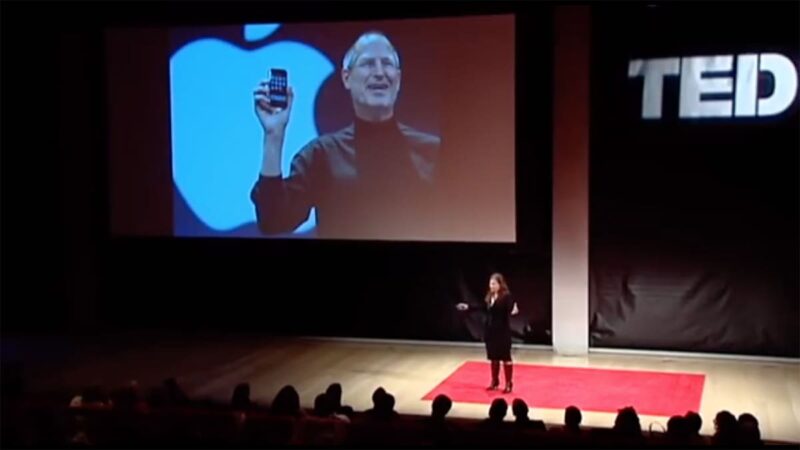
The secret structure of great talks
From the “I have a dream” speech to Steve Jobs’ iPhone launch, many great talks have a common structure that helps their message resonate with listeners. Watch Nancy Duarte’s TEDx Talk that’s garnered over 3 million views.

Presentation formats guide
Get tips on how to determine your presentation format. This guide will help you consider audience size, presentation setting, and the delivery method that best suits your communication needs.

The top 5 presentation mistakes everyone makes
We all know what it’s like to sit through a bad presentation … too long, too boring, indecipherable. The thing is, when we take the stage ourselves, many of us fall into the same presentation mistakes.

6 signs your organization needs a better presentation template
Let’s end “Franken-decks” together. Our presentation templates come with custom icon libraries, image libraries, template training, and so much more thanks to our holistic approach.

Why you should absolutely avoid using filler words (and how to actually stop)
Want to learn what are filler words and how to stop using them for good? Use these expert public speaking tips to nail your next board meeting, presentation or keynote and learn to embrace the “pause for effect.”
How to Write Incredible Calls to Action (with Examples)

What if I say, “Subscribe to our email newsletter at the end of the article?” Probably, you’ll skip it and forget when reaching the subscription button. Why? Because a compelling call to action is not only about using action words. CTAs should appear at the right place and contain the right words to lead to conversion.
A CTA is a suggestion to people to perform a certain action: subscribe, download an ebook, schedule a call, etc. Website owners place them in various parts of the page, depending on the goals, such as:
- above the fold;
- in the middle of an article;
- next to the lead form;
- in the right rail and many other places.
How should you arrange CTAs to encourage the audience to do what’s expected? This post will enumerate some helpful tips for successful call-to-action writing and show real-world examples from various spheres.

Image credit: Freepik
7 Proven Tips for Crafting Effective CTAs
Choose the right action verb.
CTAs usually appear precisely at the end of the message. It’s the last opportunity to reach out to consumers and point them in the right direction on their purchase journey. Where can you see them? On buttons, ads, banners, pop-ups, slide-ins, or at the end of videos. In any case, you have limited space for them. That’s why the CTA should be short, concise, and punchy.
Use a command verb at the beginning of the CTA copy. Compare the following variants and think of what will be more effective:
- Start your 14-day free trial period now.
- A 14-day trial period is available.
The first option is the clear winner because it tells the audience what to do. Remember that a strong call to action eliminates as much thought as possible. Choose the needed verb to match your situation and purpose, such as:
- sign up, subscribe, register now/get access
- download, start free trial;
- learn more, click here;
- buy/purchase, shop, order.
Use Power Words and Emotional Triggers
Another crucial component of call-to-action writing is power words . These are words that appeal to emotions and trigger the desire to click. While action verbs tell readers what to do and what will happen after clicking a link, power words subtly nudge people to the desired page. They rely on people’s emotions as a motivation to proceed, such as:
- fear : mistake, nightmare, painful, crisis, danger;
- encouragement : amazing, astonishing, life-changing, astounding, effortless;
- lust : thrilling, pleasurable, mouthwatering, compelling, engaging;
- anger : misleading, diminish, infuriating, annoying;
- greed : double, profit, explode, quadruple, extra, reduced;
- safety : proven, risk-free, moneyback, secure, refund;
- curiosity : lost, never seen before, unconventional, invitation only, confidential.
A strong CTA is the one people feel , not just comprehend. For example, “Secure your spot for the concert of a lifetime now,” will elicit a different response from viewers than, “Get your tickets for the concert now!” due to phrases like “lifetime” and “secure”. Another way to evoke enthusiasm is to leverage punctuation like an ellipsis or an exclamation mark.
Create Urgency and Scarcity
As most purchases are emotional rather than rational, another motivator can be a fear of missing out (FOMO). It’s one of the most widely-used tactics in e-commerce, where sellers show the number of remaining goods or the time left until the discount expires. So you can do it in the CTA.
The more people think, the less likely they will buy, remember? A sense of urgency/scarcity encourages people to act without much consideration. You can also find FOMO in social proof. If someone uses this product or service, others will be interested in joining the crowd. You can employ this idea in the CTA. Find a problem that your audience is experiencing. Emphasize it, show people they are not alone, and provide a solution.
Highlight the Benefits and Value Proposition
There is hardly anything more persuasive than a benefit . It works as simply as suggesting some perks for clicking the button. In other words, what are consumers going to gain from it? Will it enable people to perform their jobs more effectively, get in shape, or save money? You can add a tangible benefit like a discount or promotion. To show readers the value of clicking, start the CTA with words like “save” or “redeem” like “Save 15% by calling today!”
Or you can combine a USP and CTA in a single statement to persuade potential customers to take action. By highlighting what makes your product or service unique and motivating the user to take a specific action in line with that USP, you can increase the chances of converting them into leads or customers. Here’s an example of a USP/CTA mash-up:
“Get the best deals on luxury vacations - Book now and save 50%!”
Here you mention the action you expect users to perform (“ book now” ) and bring up a reason to do it ( “save 50%” ).
Personalize the CTA for the Target Audience
Personalization is one of the easiest ways to elicit emotions. It shows users that you value them and take a genuine interest in guiding them through the purchase journey smoothly. That’s why personalized CTAs can be so effective. According to Hubspot, tailored CTAs outperform standard CTAs by 202% .
Suppose a new website visitor, John, adds some products to the cart but leaves without buying them. You can show an exit-intent pop-up before he closes the tab with a personalized advertising call to action, such as: “John, get 10% off your first purchase! Plus, free shipping on orders over $50. Shop now and start saving!”
But if it was your existing customer, Rebecca, you could show her another pop-up, such as: “Welcome back, Rebecca! As a valued customer, we’d like to offer you 15% off your next purchase. Take advantage of this exclusive offer by making your purchase right away!”
Consider your audience when crafting your message, and address them specifically. You can segment people by age, gender, profession, level of proficiency in using your software, and other traits to offer the most relevant products and services.
Apart from writing a tailored message in your CTA, personalization can also be achieved by using new tools for sales documents creation. If you go with an interactive sales deck or proposal, you can add an impactful CTA by embedding your own calendar in the message, so that your potential customer can book their next meeting simply by reading your proposal.
Include Numbers If Relevant
Numbers catch the readers’ attention because they stand out on the page with text. So it’s another way to persuade people to click. Numbers also provide information that audiences want, like phone numbers, pricing, or advantages. For example, “Learn a new language in just 30 days with our intensive course.” It’s easy to spot the numbers, so viewers will immediately grasp the possible advantages of responding to your CTA.
You can also include a price in the ad copy and CTA. Why should you do it? On the one hand, you may scare away users from clicking the button and reading more about the product. On the other, if people deliberately respond to the ad knowing about your pricing, it shows their interest in the offer. It reduces the chances of bouncing from the landing page, increasing the return on ad spend.
Test and Optimize the CTA
Calls to action are tricky since you won’t know how effective they are until you put them to the test in real life. An idea that seems terrific on paper may not work well in practice. Thus, you need to understand why the CTA performs poorly and what doesn’t appeal to viewers. But how do you determine the need to change something? Through A/B testing.
A CTA is one of the most accessible and suitable page elements for the A/B test. A small change in word choice can have a significant impact. A/B testing lets you find the best option not only in terms of wording but also in placement, colors, size, etc.
Examples of Incredible CTAs
Now that we know the best practices for organizing CTAs, let’s examine how different companies do it. We’ll analyze call-to-action examples of online stores, SaaS companies, and nonprofit organizations.
E-commerce CTAs

Screenshot taken on the official Converse website
The first example under consideration is from Converse, a renowned lifestyle brand. The company uses several tips mentioned above:
- the language is simple to comprehend;
- numbers are showing the benefits of performing a particular action, such as 15% off the next order for signing up;
- the CTAs stand out from the rest of the content because they are bold or contrasting.
Ulster Weavers

Screenshot taken on Ulster Weavers
In this example from Ulster Weavers, we see the emphasis on FOMO. The bag is at a lower price, but only one item is available, so the retailer leaves us less time to think but to click the “Add to Cart” or “Buy it now” button.

Screenshot taken on the official Kusmi Tea website
Kusmi Tea decided to play with words and use the CTA “Enjoy now” instead of a basic “Click here” or “Shop now”. Don’t be afraid to get creative, as Kusmi Tea does in this screenshot. You can also notice that there is a lot of space around the button. This trick and the contrasting black color on the orange background make the CTA more visible.
Service-Based Call-to-Action Examples

Screenshot taken on the official Salesforce website
Here we can see several CTAs. Salesforce directs the viewer’s attention to them in the following ways:
- “Start free trial” is in the hero section of the website and is filled with color. So we understand it’s more important than the “Watch demo” button next to it.
- “Try for free” is filled with a contrasting green color for more emphasis. It also denotes no obligation to pay at the moment of clicking.
- The “Let’s chat” button is also noticeable. The photo on it aims to create a personal connection with the visitors and increase the likelihood of them engaging in a chat.
Time Doctor

Screenshot taken on the official Time Doctor website
When adding creativity to your CTA, be careful with misleading users. For example, the screenshot from Time Doctor illustrates two CTAs on the exit-intent pop-up:
- “Yes, help me increase my team’s productivity.”
- “No, I don’t need insight on what my team is doing.”
Unfortunately, they lack information about what will happen after choosing each. While you may guess the second button will close the pop-up, the first one may be confusing. Will I schedule a call, download the app, or get to the checkout page? No idea.

Screenshot taken on the official Exabytes website
This screenshot from Exabytes demonstrates a personalized approach. The CTA contains a personal pronoun, “My”, creating a sense of ownership and exclusivity in the customer’s mind.
Nonprofit CTAs
Elevation church.

Screenshot taken from the newsletter from the official Elevation Church website
It’s an email from Elevation Church. We can see that the organization displayed creativity in its “READY. SET. SHOP” advertising call to action. What may be the reason for that? It can be a powerful way to reach younger generations and differentiate an email from other generic promotions.
African Wildlife Foundation

Screenshot taken on the official African Wildlife Foundation website
Another nonprofit with impactful calls to action is African Wildlife Foundation. They are one of the first things you notice on the page. CTAs are concise and inspire supporters to learn more about the organization or donate immediately.
Over to You
Calls to action are indispensable elements of web forms , ad campaigns, emails, and social media content. What are the tips for designing them? We’ve looked at the top seven strategies, including:
- beginning with a powerful verb;
- appealing to emotions;
- leveraging numbers;
- offering benefits;
- instilling a sense of urgency;
- personalizing CTAs according to user preferences, behavior, and types;
- testing various aspects of CTAs thoroughly.
These tips will help you amplify your conversion rates and find the key to your audience.

Kate Parish
Related posts.

The future of Google Ads match types: what marketers need to know

Google and AI are in the hot seat again, Meta finds a work-around, and more…

Still planning and managing your performance advertising spend with spreadsheets? Try this instead.

How do I tell new clients that it takes time to see results with Meta Ads? And speaking of Meta, what are incremental conversions, and should I optimize toward them?
See why brands have relied on marin to manage over $48 billion in spend.
5 Steps To Writing an Effective Call to Action (With Examples)

Table of contents

Laura Jane Bradbury
An effective call to action (CTA) encourages content engagement, converts visitors into leads, and helps people discover your business. It should offer value to the reader and explain what to expect from taking action.
If a CTA doesn't have a clear message, feels too generic, or isn’t aligned with your audience’s concerns, readers won't act. This could cost you potential customers and income.
As a professional copywriter with six years of experience, I’ve helped many small businesses reach their goals through calls to action. Here, I'll share the best practices for writing persuasive CTAs.
Key Takeaways
- A call to action encourages readers to engage with your content, purchase a product, and learn more about your brand.
- It should be short, direct, and enticing. Use action verbs to motivate people to act.
- Ensure you clearly explain the value your audience will get from following your CTA.
Examples of great CTAs and why they work
Below are five CTA examples from high-profile businesses. We'll look at why they work, and what techniques you can apply.
Semrush: Use persuasive language
Cta: “get a free trial” .

Blog posts are a great place to put a CTA, as readers are already interested in the topic and more likely to respond to your suggested action. Engaging and relevant content can also lead to higher clickthrough rates, helping more readers learn about and interact with your business.
Semrush provides a great example of how to write a good call to action in a blog post. After sharing a detailed guide on search engine optimization (SEO) for blogs, they suggest readers sign up for a free trial to begin implementing SEO. Putting the CTA at the end of the post lets readers consume valuable information before discovering how to apply it.
The CTA works because:
- It includes the action verb “Get” — grabbing the reader's attention.
- The CTA is clear and eye-catching: The yellow box separates it from the post's content, while the purple highlights the specific action to take.
- The CTA text highlights the value for the reader immediately : The trial is "free" and Semrush conveniently provides "everything" in "one" place, so busy entrepreneurs and marketers don't need to jump from tool to tool.
Here are some action words and phrases (in bold) to consider for your own CTA. Play around with them and see what works best:

LOOKFANTASTIC: Create urgency
Cta: “hurry, this offer is for today only”.

There are many CTAs you can use on social media . If you want to increase engagement, for example, you can ask people to comment on, like, or share a post. In this case, LOOKFANTASTIC wants to encourage its followers to shop a specific brand on its site.
- It offers an incentive — 25% off.
- The use of "Hurry" and “TODAY only” creates urgency : This motivates customers to take advantage of the offer before it's too late.
- LookFantastic addresses the concerns of its customers : The text highlights that the products are "skin-loving."
Career Contessa: Offer an incentive
Cta: “i’m so in”.

Email newsletters can build customer relationships, drive sales, and be an effective digital marketing channel. However, people are increasingly less willing to share their email addresses.
To encourage people to subscribe, Career Contessa has created a signup form in the middle of its homepage. This gives readers a chance to see what the newsletter is about and what type of content they can expect.
Notice how the CTA banner is clear and concise, explaining what people will receive by signing up.
- It uses language that's relatable to its audience: The site’s young, female readers will identify "Level up" as advancing their careers.
- It makes people feel included : "I'm so in" creates the feeling of joining an exclusive group or club.
- There’s an incentive to join : The text offers readers "a shortcut to success."
Uniqlo: Consider the buying stages
Cta: “learn more” .

Customers want to know what they’re signing up for before downloading an app. Uniqlo knows this and tells their customers exactly what to expect from their new app. So, rather than telling people to “Download now,” the CTA suggests readers “LEARN MORE.”
- It’s short and direct , making it easy to understand and follow.
- Customers understand the value — the accompanying illustrations and copy convey the benefits of the app.
- There’s lots of action verbs — “Get”, “Download”, “Sign up”, “Scan + Shop”.
Tip: Before adding a CTA, consider where your customers are in the buying stages. While a regular buyer may instantly click to “shop now,” a new customer may need more information. New products might also require additional context in order to help customers understand their value.
New York Magazine: Use bold visuals
Cta: “subscribe now” .

Most consumers prefer a brand to contact them via email . New York Magazine is a great example of how to write a call to action for email,. You’re immediately drawn in by the newsletter’s image emphasizing that it’s the “LAST CHANCE” to take advantage of its offer.
This encourages readers to take action by triggering the fear of missing out. The publication then describes all the benefits of joining — including its free tote bag — to entice users to click the “SUBSCRIBE NOW” button.
- It creates urgency: “SUBSCRIBE NOW” emphasizes that you should take action immediately.
- The accompanying text is descriptive: “award-winning,” “exciting,” “fresh,” “sharp.” These adjectives suggest the content is unique and high quality, helping convince readers that the magazine is worth investing in.
- The CTA is visually bold: The black button stands out against the white background and contrasts with the colorful main image.
5 key elements to include in your CTA:
Based on the above examples, here are five critical aspects of a great CTA to include in your own:
1. Use simple and direct language
This ensures people understand the desired action. For example, “Subscribe now” is easier to follow than “You can subscribe now by clicking this link.” Make sure the accompanying text promoting your CTA is clear and easy to read .
2. Provide value to your readers
Who is your target audience and how can your CTA solve their concerns? Will a discount code save them money, or can you offer useful expertise and advice? Demonstrate exactly what your CTA will deliver and how.
3. Create a sense of urgency
Include phrases like “limited time offer” and “for today only” to motivate users to act. Pair these with action-oriented words like “subscribe” and “download” to encourage a particular action.
4. Consider your target audience
While “Visit this link” may suit a formal, professional audience, “Check out this link” works for a younger demographic. Be sure to use language and a tone of voice that your customers will understand and relate to.
5. Make your CTA stand out
Your CTA should be eye-catching and easily noticeable so your audience doesn't scroll past it. Use contrasting colors, emojis, bold fonts, and buttons to draw people in.
How AI can help you write better CTAs
Now you know how to write a great call to action, let’s look at how Wordtune’s AI tools can speed up the process.
Shorten text without losing the meaning
A call to action needs to be short and direct, succinctly telling the reader what action to take. Many CTAs are also written on a button, meaning you can only use a few words.
Using the Shorten button in Wordtune Editor can help you create a punchy CTA.

Get Wordtune for Free > Get Wordtune for Free >
Click on the sentence you would like to edit, and press Shorten . The Editor instantly generates alternatives. Notice how Wordtune’s suggestions are more direct, making them easier to understand.
Find alternative words
Whether you’re stuck on which action verb to use or you want to make your CTA’s benefits more descriptive, Wordtune can provide suggestions.

To find alternative synonyms, highlight a particular word and click Rewrite , Casual , or Formal . In this example, I wanted a casual tone for social media, so clicked Casual to generate a list of alternative, informal words.
Use prompts to generate text
Wordtune's Create tool can help you brainstorm and plan your CTA copy.
To generate text, click Create and type in your prompt — no more than 1,000 characters.
AI Prompt: Create persuasive copy to entice customers to download our app to receive 10% off, with a direct call to action.
Using this prompt, Wordtune quickly created an enticing paragraph for me:

Wordtune can generate a specific CTA — “Download our app now” — which can be made into a CTA button. It can also create accompanying text to entice readers. Using the AI-generated copy, you can choose individual sentences to include such as, “With just a few clicks, you can browse our wide selection of products.”
Adjust tone of voice
In addition to suggesting synonyms, Wordtune’s Casual and Formal buttons can alter sentences to match your desired tone.

Here, I clicked the Formal button. In response, Wordtune removed the contraction “you’ll” and made its suggestions more direct, precise, and easy for readers to consume.
Conclusion:
A powerful call to action encourages readers to act, whether that’s by engaging with your content, buying your products, or learning more about your services. This can increase website views, sales, and bookings.
Keep your CTA short and direct, explaining in simple language how it will provide value. Ensure the tone aligns with your target audience, and create a sense of urgency to motivate readers to act quickly. Help your CTA stand out against your text by using contrasting colors, emojis, and bold fonts. Follow these simple steps and you’ll be writing eye-catching CTAs in no time.
Want to learn more? Check out our guides on how to create an effective tone of voice to reach your target audience and how to boost readability to write clear, succinct CTAs.
What type of content should include a call to action?
Any content can be an ideal opportunity for a CTA. From social media and blog posts to landing pages, ads, emails and videos.
Where should you place a call to action?
Calls to action are typically placed at the top, bottom, or side of a webpage. Take into account what your readers need to know before acting to find the best placement. For example, place a discount code at the top of your homepage. Or, if you want readers to share your content, it’s best at the end of the page.
Can you use multiple calls to action on a webpage?
With care, multiple calls to action can be used on the same webpage. For example, ask people to subscribe to your email list via a button while also adding a link to download an ebook. The key is to ensure your calls to action are spread out and organized in a way that doesn't overload the reader.
Share This Article:
%20(1).webp)
8 Tips for E-commerce Copywriting Success (with Examples!)
.webp)
The Brand Strategy Deck You Need to Drive Social Media Results + 5 Examples

Grammarly Alternatives: Which Writing Assistant is the Best Choice for You?
Looking for fresh content, thank you your submission has been received.

What is an Argumentative Essay? How to Write It (With Examples)

We define an argumentative essay as a type of essay that presents arguments about both sides of an issue. The purpose is to convince the reader to accept a particular viewpoint or action. In an argumentative essay, the writer takes a stance on a controversial or debatable topic and supports their position with evidence, reasoning, and examples. The essay should also address counterarguments, demonstrating a thorough understanding of the topic.
Table of Contents
What is an argumentative essay .
- Argumentative essay structure
- Argumentative essay outline
- Types of argument claims
How to write an argumentative essay?
- Argumentative essay writing tips
- Good argumentative essay example
How to write a good thesis
- How to Write an Argumentative Essay with Paperpal?
Frequently Asked Questions
An argumentative essay is a type of writing that presents a coherent and logical analysis of a specific topic. 1 The goal is to convince the reader to accept the writer’s point of view or opinion on a particular issue. Here are the key elements of an argumentative essay:
- Thesis Statement : The central claim or argument that the essay aims to prove.
- Introduction : Provides background information and introduces the thesis statement.
- Body Paragraphs : Each paragraph addresses a specific aspect of the argument, presents evidence, and may include counter arguments. Articulate your thesis statement better with Paperpal. Start writing now!
- Evidence : Supports the main argument with relevant facts, examples, statistics, or expert opinions.
- Counterarguments : Anticipates and addresses opposing viewpoints to strengthen the overall argument.
- Conclusion : Summarizes the main points, reinforces the thesis, and may suggest implications or actions.

Argumentative essay structure
Aristotelian, Rogerian, and Toulmin are three distinct approaches to argumentative essay structures, each with its principles and methods. 2 The choice depends on the purpose and nature of the topic. Here’s an overview of each type of argumentative essay format.
| ) | ||
| : Introduce the topic. Provide background information. Present the thesis statement or main argument. | : Introduce the issue. Provide background information. Establish a neutral and respectful tone. | : Introduce the issue. Provide background information. Present the claim or thesis. |
| : Provide context or background information. Set the stage for the argument. | : Describe opposing viewpoints without judgment. Show an understanding of the different perspectives. | : Clearly state the main argument or claim. |
| : Present the main argument with supporting evidence. Use logical reasoning. Address counterarguments and refute them. | : Present your thesis or main argument. Identify areas of common ground between opposing views. | : Provide evidence to support the claim. Include facts, examples, and statistics. |
| : Acknowledge opposing views. Provide counterarguments and evidence against them. | : Present your arguments while acknowledging opposing views. Emphasize shared values or goals. Seek compromise and understanding. | : Explain the reasoning that connects the evidence to the claim. Make the implicit assumptions explicit. |
| : Summarize the main points. Reassert the thesis. End with a strong concluding statement. | : Summarize areas of agreement. Reiterate the importance of finding common ground. End on a positive note. | : Provide additional support for the warrant. Offer further justification for the reasoning. |
| Address potential counterarguments. Provide evidence and reasoning to refute counterclaims. | ||
| Respond to counterarguments and reinforce the original claim. | ||
| Summarize the main points. Reinforce the strength of the argument. |
Have a looming deadline for your argumentative essay? Write 2x faster with Paperpal – Start now!
Argumentative essay outline
An argumentative essay presents a specific claim or argument and supports it with evidence and reasoning. Here’s an outline for an argumentative essay, along with examples for each section: 3
1. Introduction :
- Hook : Start with a compelling statement, question, or anecdote to grab the reader’s attention.
Example: “Did you know that plastic pollution is threatening marine life at an alarming rate?”
- Background information : Provide brief context about the issue.
Example: “Plastic pollution has become a global environmental concern, with millions of tons of plastic waste entering our oceans yearly.”
- Thesis statement : Clearly state your main argument or position.
Example: “We must take immediate action to reduce plastic usage and implement more sustainable alternatives to protect our marine ecosystem.”
2. Body Paragraphs :
- Topic sentence : Introduce the main idea of each paragraph.
Example: “The first step towards addressing the plastic pollution crisis is reducing single-use plastic consumption.”
- Evidence/Support : Provide evidence, facts, statistics, or examples that support your argument.
Example: “Research shows that plastic straws alone contribute to millions of tons of plastic waste annually, and many marine animals suffer from ingestion or entanglement.”
- Counterargument/Refutation : Acknowledge and refute opposing viewpoints.
Example: “Some argue that banning plastic straws is inconvenient for consumers, but the long-term environmental benefits far outweigh the temporary inconvenience.”
- Transition : Connect each paragraph to the next.
Example: “Having addressed the issue of single-use plastics, the focus must now shift to promoting sustainable alternatives.”
3. Counterargument Paragraph :
- Acknowledgement of opposing views : Recognize alternative perspectives on the issue.
Example: “While some may argue that individual actions cannot significantly impact global plastic pollution, the cumulative effect of collective efforts must be considered.”
- Counterargument and rebuttal : Present and refute the main counterargument.
Example: “However, individual actions, when multiplied across millions of people, can substantially reduce plastic waste. Small changes in behavior, such as using reusable bags and containers, can have a significant positive impact.”
4. Conclusion :
- Restatement of thesis : Summarize your main argument.
Example: “In conclusion, adopting sustainable practices and reducing single-use plastic is crucial for preserving our oceans and marine life.”
- Call to action : Encourage the reader to take specific steps or consider the argument’s implications.
Example: “It is our responsibility to make environmentally conscious choices and advocate for policies that prioritize the health of our planet. By collectively embracing sustainable alternatives, we can contribute to a cleaner and healthier future.”

Types of argument claims
A claim is a statement or proposition a writer puts forward with evidence to persuade the reader. 4 Here are some common types of argument claims, along with examples:
- Fact Claims : These claims assert that something is true or false and can often be verified through evidence. Example: “Water boils at 100°C at sea level.”
- Value Claims : Value claims express judgments about the worth or morality of something, often based on personal beliefs or societal values. Example: “Organic farming is more ethical than conventional farming.”
- Policy Claims : Policy claims propose a course of action or argue for a specific policy, law, or regulation change. Example: “Schools should adopt a year-round education system to improve student learning outcomes.”
- Cause and Effect Claims : These claims argue that one event or condition leads to another, establishing a cause-and-effect relationship. Example: “Excessive use of social media is a leading cause of increased feelings of loneliness among young adults.”
- Definition Claims : Definition claims assert the meaning or classification of a concept or term. Example: “Artificial intelligence can be defined as machines exhibiting human-like cognitive functions.”
- Comparative Claims : Comparative claims assert that one thing is better or worse than another in certain respects. Example: “Online education is more cost-effective than traditional classroom learning.”
- Evaluation Claims : Evaluation claims assess the quality, significance, or effectiveness of something based on specific criteria. Example: “The new healthcare policy is more effective in providing affordable healthcare to all citizens.”
Understanding these argument claims can help writers construct more persuasive and well-supported arguments tailored to the specific nature of the claim.
If you’re wondering how to start an argumentative essay, here’s a step-by-step guide to help you with the argumentative essay format and writing process.
- Choose a Topic: Select a topic that you are passionate about or interested in. Ensure that the topic is debatable and has two or more sides.
- Define Your Position: Clearly state your stance on the issue. Consider opposing viewpoints and be ready to counter them.
- Conduct Research: Gather relevant information from credible sources, such as books, articles, and academic journals. Take notes on key points and supporting evidence.
- Create a Thesis Statement: Develop a concise and clear thesis statement that outlines your main argument. Convey your position on the issue and provide a roadmap for the essay.
- Outline Your Argumentative Essay: Organize your ideas logically by creating an outline. Include an introduction, body paragraphs, and a conclusion. Each body paragraph should focus on a single point that supports your thesis.
- Write the Introduction: Start with a hook to grab the reader’s attention (a quote, a question, a surprising fact). Provide background information on the topic. Present your thesis statement at the end of the introduction.
- Develop Body Paragraphs: Begin each paragraph with a clear topic sentence that relates to the thesis. Support your points with evidence and examples. Address counterarguments and refute them to strengthen your position. Ensure smooth transitions between paragraphs.
- Address Counterarguments: Acknowledge and respond to opposing viewpoints. Anticipate objections and provide evidence to counter them.
- Write the Conclusion: Summarize the main points of your argumentative essay. Reinforce the significance of your argument. End with a call to action, a prediction, or a thought-provoking statement.
- Revise, Edit, and Share: Review your essay for clarity, coherence, and consistency. Check for grammatical and spelling errors. Share your essay with peers, friends, or instructors for constructive feedback.
- Finalize Your Argumentative Essay: Make final edits based on feedback received. Ensure that your essay follows the required formatting and citation style.
Struggling to start your argumentative essay? Paperpal can help – try now!
Argumentative essay writing tips
Here are eight strategies to craft a compelling argumentative essay:
- Choose a Clear and Controversial Topic : Select a topic that sparks debate and has opposing viewpoints. A clear and controversial issue provides a solid foundation for a strong argument.
- Conduct Thorough Research : Gather relevant information from reputable sources to support your argument. Use a variety of sources, such as academic journals, books, reputable websites, and expert opinions, to strengthen your position.
- Create a Strong Thesis Statement : Clearly articulate your main argument in a concise thesis statement. Your thesis should convey your stance on the issue and provide a roadmap for the reader to follow your argument.
- Develop a Logical Structure : Organize your essay with a clear introduction, body paragraphs, and conclusion. Each paragraph should focus on a specific point of evidence that contributes to your overall argument. Ensure a logical flow from one point to the next.
- Provide Strong Evidence : Support your claims with solid evidence. Use facts, statistics, examples, and expert opinions to support your arguments. Be sure to cite your sources appropriately to maintain credibility.
- Address Counterarguments : Acknowledge opposing viewpoints and counterarguments. Addressing and refuting alternative perspectives strengthens your essay and demonstrates a thorough understanding of the issue. Be mindful of maintaining a respectful tone even when discussing opposing views.
- Use Persuasive Language : Employ persuasive language to make your points effectively. Avoid emotional appeals without supporting evidence and strive for a respectful and professional tone.
- Craft a Compelling Conclusion : Summarize your main points, restate your thesis, and leave a lasting impression in your conclusion. Encourage readers to consider the implications of your argument and potentially take action.

Good argumentative essay example
Let’s consider a sample of argumentative essay on how social media enhances connectivity:
In the digital age, social media has emerged as a powerful tool that transcends geographical boundaries, connecting individuals from diverse backgrounds and providing a platform for an array of voices to be heard. While critics argue that social media fosters division and amplifies negativity, it is essential to recognize the positive aspects of this digital revolution and how it enhances connectivity by providing a platform for diverse voices to flourish. One of the primary benefits of social media is its ability to facilitate instant communication and connection across the globe. Platforms such as Facebook, Twitter, and Instagram break down geographical barriers, enabling people to establish and maintain relationships regardless of physical location and fostering a sense of global community. Furthermore, social media has transformed how people stay connected with friends and family. Whether separated by miles or time zones, social media ensures that relationships remain dynamic and relevant, contributing to a more interconnected world. Moreover, social media has played a pivotal role in giving voice to social justice movements and marginalized communities. Movements such as #BlackLivesMatter, #MeToo, and #ClimateStrike have gained momentum through social media, allowing individuals to share their stories and advocate for change on a global scale. This digital activism can shape public opinion and hold institutions accountable. Social media platforms provide a dynamic space for open dialogue and discourse. Users can engage in discussions, share information, and challenge each other’s perspectives, fostering a culture of critical thinking. This open exchange of ideas contributes to a more informed and enlightened society where individuals can broaden their horizons and develop a nuanced understanding of complex issues. While criticisms of social media abound, it is crucial to recognize its positive impact on connectivity and the amplification of diverse voices. Social media transcends physical and cultural barriers, connecting people across the globe and providing a platform for marginalized voices to be heard. By fostering open dialogue and facilitating the exchange of ideas, social media contributes to a more interconnected and empowered society. Embracing the positive aspects of social media allows us to harness its potential for positive change and collective growth.
- Clearly Define Your Thesis Statement: Your thesis statement is the core of your argumentative essay. Clearly articulate your main argument or position on the issue. Avoid vague or general statements.
- Provide Strong Supporting Evidence: Back up your thesis with solid evidence from reliable sources and examples. This can include facts, statistics, expert opinions, anecdotes, or real-life examples. Make sure your evidence is relevant to your argument, as it impacts the overall persuasiveness of your thesis.
- Anticipate Counterarguments and Address Them: Acknowledge and address opposing viewpoints to strengthen credibility. This also shows that you engage critically with the topic rather than presenting a one-sided argument.
How to Write an Argumentative Essay with Paperpal?
Writing a winning argumentative essay not only showcases your ability to critically analyze a topic but also demonstrates your skill in persuasively presenting your stance backed by evidence. Achieving this level of writing excellence can be time-consuming. This is where Paperpal, your AI academic writing assistant, steps in to revolutionize the way you approach argumentative essays. Here’s a step-by-step guide on how to use Paperpal to write your essay:
- Sign Up or Log In: Begin by creating an account or logging into paperpal.com .
- Navigate to Paperpal Copilot: Once logged in, proceed to the Templates section from the side navigation bar.
- Generate an essay outline: Under Templates, click on the ‘Outline’ tab and choose ‘Essay’ from the options and provide your topic to generate an outline.
- Develop your essay: Use this structured outline as a guide to flesh out your essay. If you encounter any roadblocks, click on Brainstorm and get subject-specific assistance, ensuring you stay on track.
- Refine your writing: To elevate the academic tone of your essay, select a paragraph and use the ‘Make Academic’ feature under the ‘Rewrite’ tab, ensuring your argumentative essay resonates with an academic audience.
- Final Touches: Make your argumentative essay submission ready with Paperpal’s language, grammar, consistency and plagiarism checks, and improve your chances of acceptance.
Paperpal not only simplifies the essay writing process but also ensures your argumentative essay is persuasive, well-structured, and academically rigorous. Sign up today and transform how you write argumentative essays.
The length of an argumentative essay can vary, but it typically falls within the range of 1,000 to 2,500 words. However, the specific requirements may depend on the guidelines provided.
You might write an argumentative essay when: 1. You want to convince others of the validity of your position. 2. There is a controversial or debatable issue that requires discussion. 3. You need to present evidence and logical reasoning to support your claims. 4. You want to explore and critically analyze different perspectives on a topic.
Argumentative Essay: Purpose : An argumentative essay aims to persuade the reader to accept or agree with a specific point of view or argument. Structure : It follows a clear structure with an introduction, thesis statement, body paragraphs presenting arguments and evidence, counterarguments and refutations, and a conclusion. Tone : The tone is formal and relies on logical reasoning, evidence, and critical analysis. Narrative/Descriptive Essay: Purpose : These aim to tell a story or describe an experience, while a descriptive essay focuses on creating a vivid picture of a person, place, or thing. Structure : They may have a more flexible structure. They often include an engaging introduction, a well-developed body that builds the story or description, and a conclusion. Tone : The tone is more personal and expressive to evoke emotions or provide sensory details.
- Gladd, J. (2020). Tips for Writing Academic Persuasive Essays. Write What Matters .
- Nimehchisalem, V. (2018). Pyramid of argumentation: Towards an integrated model for teaching and assessing ESL writing. Language & Communication , 5 (2), 185-200.
- Press, B. (2022). Argumentative Essays: A Step-by-Step Guide . Broadview Press.
- Rieke, R. D., Sillars, M. O., & Peterson, T. R. (2005). Argumentation and critical decision making . Pearson/Allyn & Bacon.
Paperpal is a comprehensive AI writing toolkit that helps students and researchers achieve 2x the writing in half the time. It leverages 21+ years of STM experience and insights from millions of research articles to provide in-depth academic writing, language editing, and submission readiness support to help you write better, faster.
Get accurate academic translations, rewriting support, grammar checks, vocabulary suggestions, and generative AI assistance that delivers human precision at machine speed. Try for free or upgrade to Paperpal Prime starting at US$19 a month to access premium features, including consistency, plagiarism, and 30+ submission readiness checks to help you succeed.
Experience the future of academic writing – Sign up to Paperpal and start writing for free!
Related Reads:
- Empirical Research: A Comprehensive Guide for Academics
- How to Write a Scientific Paper in 10 Steps
- What is a Literature Review? How to Write It (with Examples)
- What is a Narrative Essay? How to Write It (with Examples)
Make Your Research Paper Error-Free with Paperpal’s Online Spell Checker
The do’s & don’ts of using generative ai tools ethically in academia, you may also like, dissertation printing and binding | types & comparison , what is a dissertation preface definition and examples , how to write a research proposal: (with examples..., how to write your research paper in apa..., how to choose a dissertation topic, how to write a phd research proposal, how to write an academic paragraph (step-by-step guide), maintaining academic integrity with paperpal’s generative ai writing..., research funding basics: what should a grant proposal..., how to write an abstract in research papers....
How To Write a Call to Action That Works [Tips + 6 Examples]
Ready for your marketing campaigns to actually drive results? We’ll show you how to motivate your audience with a killer call to action.

Table of Contents
You know how they say a closed mouth doesn’t get fed? If you want someone to do something, you gotta ask for it. Writing a killer call to action (CTA) is one strategy to get what you want.
Whether you’re trying to get people to buy your products, sign up for your emails, or join your cult, crafting the perfect call to action is essential for success.
But how do you write a call to action that stands out from the crowd and actually drives results? In this blog post, we’ll show you how to motivate with some powerful examples of moving calls to action and tips on writing them yourself.
Bonus: Download a free guide to social advertising and learn the 5 steps to building effective campaigns. No tricks or boring tips—just simple, easy-to-follow instructions that really work.
What is a call to action?
A call to action is a word or phrase that prompts action. It is a marketing term to describe urging your audience to act in a certain way.
A call to action can appear as a clickable button or simply as a piece of text. Call-to-action buttons and phrases can appear at any place in the user journey that you want to direct your audience.
Let’s say you’re trying to sell a pair of shoes on Instagram, and you’re crafting clear social media CTAs . You might have a call to action at the end of your social post caption that says, “Click the link in our bio.” The link in your bio could lead to a product page with information about the shoes on it. The call to action on this page would be an “Add to shopping cart” button.
CTAs aren’t just for social media. They can also appear in emails for an email marketing campaign, on paid ads, at the end of a blog post, and on landing pages.
CTAs are common in print marketing, too — think billboards or flyers that scream “Call Now!”
Examples of common CTAs
You’ll see plenty of CTAs around, but there are a few tried and tested phrases on repeat.
These common CTAs are uncomplicated phrases that tell your user exactly what to do and what they can expect once they follow through. There’s power in simplicity, which is why you’ll see these words used over and over again.
Some of the most common CTAs are:
- Try for free
- Add to cart
- Get started
Why is a good CTA important?
A well-crafted call to action serves as a bridge or a well-lit path. It guides your user where you want them to go. Which, if your business plan is in the right place, will be toward your goals.
A strong CTA will grab customers’ attention and incentivize them to take the decisive step necessary to achieve their goals. Effective CTAs give customers confidence in your business. They can communicate security, trustworthiness, and convenience, all of which can increase conversions or drive traffic where you want it to go.
Calls to action can also combat decision fatigue. When someone has too many options, they can become overwhelmed by choice. CTAs can help cut through decision confusion by giving your reader a direct command. Now, go read the best practices for creating effective CTAs.
Best practices for creating effective CTAs
Much like cutting your bangs, there’s a right way and a wrong way to go about creating CTAs. You’ll need to consider things like copywriting, design, visuals, and placement on a webpage.
It might seem like a lot, but we’ve got you covered with the handy best practice list below!
Make it concise and clear
The CTA should be concise and lay out a clear request for the customer, whether that be for them to join a mailing list or purchase a product or service. Don’t write your reader a paragraph with the CTA buried within it; you want them to be able to immediately know where they should go.

Source: Squarespac e
Make it visible
People don’t scour your web page. They don’t read every word, and they certainly don’t like searching for something. If your CTA isn’t immediately obvious, you will lose your viewer’s interest in seconds. Remember, a competitor is likely doing the same thing you are, and your customers are spoilt for choice.
Make your call-to-action buttons or phrases clearly visible on your page. You can tailor your imagery or site design to point to the CTA for added visibility. Take Fashion Nova, for example. Here, the banner model’s body points toward the Shop Now CTA.

Source: Fashion Nova
Use white space
A great way to make sure people can see your CTA is to surround it with white space.
Don’t be scared of white space on your website! It allows your viewers to breathe in between content and can highlight important information.
Surrounding your button CTA with white space makes it pop.

Source: West Elm
Use contrasting or bold colors
Stop signs are red for a reason. They pop out among cityscapes or the countryside because that bright, arresting red isn’t at risk of blending in. Do the same for your CTA button colors.
Keep in mind that you shouldn’t veer away from your brand colors. A secondary brand color can do the job well. (And if you want to know more about brand colors and a consistent style guide , we’ve got you covered.)

Source: McDonald’s
Have well-considered page placement
Where you place your call-to-action buttons matters a great deal. You want to consider the natural flow of your user’s journey. You’ll have some users who immediately want to get shopping or head to the next page, and you’ll have users who want to scroll through your landing page before moving on.
A call to action should be placed under your header and at the bottom of your page. You want to capture people immediately (if they’re willing) and give those who need a bit more time another opportunity to hit that CTA at the bottom.

Source: Squarespace
Write benefit-forward supporting text
Supporting text is the content that comes before or in between your CTAs. It can be blog content, email body copy, the text on your website, or any copy that supports your CTA.
This extra information is your opportunity to show your audience the benefit that befalls them when they click your CTA.

For example, maybe you’re trying to get an audience to sign up for your email newsletter. If you want to convince people to hand over their email addresses, you’ll have to tell them what that newsletter will do for them.
A copywriting newsletter might say something like, “We sift through thousands of copywriting samples and pull only the best for you to repurpose for your own use. Plus, we tell you exactly why they work, so you don’t have to spend time puzzling through strategy. Impress your clients, save time, and look like an expert. Sign up today.”
The supporting copy highlights benefits so the call to action feels extra compelling. The reader knows exactly what to expect when they sign up for the email newsletter and how it will benefit them.
Create thoughtful copywriting
Aside from benefit-forward supporting text, the rest of your copywriting needs to be on point. Everything, from your site headers to your social posts, needs to be in your brand voice and speak directly to your audience.
Don’t forget to pay attention to the language you’re using both in and around your calls to action. Powerful words strike a chord with your audience’s emotions. White-hot CTA copy is an explosive way to skyrocket your ROI. (See what I did there?)
That being said, don’t confuse your audience. While your surrounding text can be full of powerful language, your CTAs need to be clear so your audience knows where they are headed. “Take the Quiz” or “Shop Now” gives your audience everything they need to know about where the button leads.

Source: Qunol
Test, test, and test again
The only way to really know if you’re using the best version of your CTA is to test it. Running A/B tests on your calls to action will show you which strategy performs the best.
It’s a simple method: You change one element (like your copy, placement, or colors) and let it run for a set amount of time. Then, see how it compares to the previous version.
6 great call-to-action examples
Now that you know what to do, it’s time to check out what others are doing! Get inspiration for your next CTA from the examples below.
Oh, how we love a good mystery! Whether it’s a cheesy crime drama or a surprise gift from a company, there’s something about not knowing what you might get that is just so enticing.
Glossier’s “It’s a mystery!” CTA makes us itchy to click that button just to see what’s on the other side.

Source: Glossier
Article uses color to its advantage with the website’s call-to-action buttons. Their secondary brand color is a bright coral, which you can see is used for the “Add to cart” CTA button.
It’s clear, eye-catching, and concise, everything a great CTA button should be.

Source: Article
Coco & Eve
Coco & Eve’s email marketing campaign uses a discount code as a CTA. Who doesn’t love saving money? Incorporating your discount code into your CTA is a clever way to get people to click.

Source: Coco & Eve’s email campaign
While this strategy worked well in Coco & Eve’s email campaign, they ran into CTA limitations on other platforms, like Facebook. If you’re advertising on LinkedIn or Facebook, you’ll know that the apps force you to use a set of standard CTA copy on the buttons.
While this poses some limitations, you can still add supporting text that motivates your audience to click. Below, Coco & Eve included the discount code on the imagery instead, which is just one of many clever ways to go about Facebook advertising .
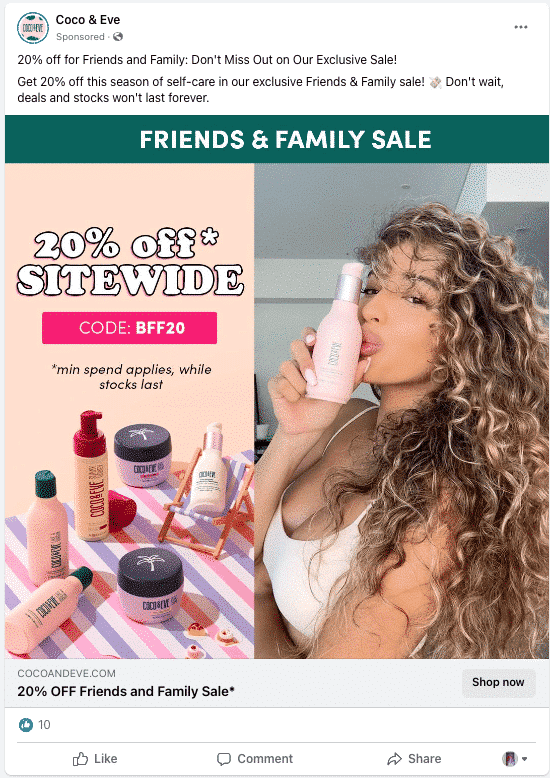
Source: Coco & Eve on Facebook
Twitter’s “Tweet” CTA uses its own brand-specific language. Before the rise of social media, if you had told someone to tweet something, you’d be met with a blank stare. (We’ve come since 2006, truly.)
To do this yourself, just create a globally-used platform that makes birdsong synonymous with snippets of thought. Easy.

Source: Twitter
Tushy uses social proof as supporting text in its Instagram story ad . The “100,000+ 5 Star reviews” statement below serves to motivate others to grab a Tushy. Social proof is one of those marketing tactics that just works. People look to other people to determine what’s hot and what’s not.
Social proof works a lot like the bandwagon effect , a kind of cognitive bias. The bandwagon effect is pretty much exactly like it sounds; when a majority of people like or endorse something, it’s often picked up by others. And, with 100,000 5-star reviews called out, Tushy is using the bandwagon effect to its full advantage below.

Source: Tushy on Instagram
NatGeo dangles a free trial in its Instagram ad, one of many effective call-to-action ideas you can shamelessly steal. Although, when so many people are doing it and finding success, is it really stealing?

Source: NatGeo on Instagram
Save time managing your social media presence with Hootsuite. From a single dashboard you can publish and schedule posts, find relevant conversions, engage the audience, measure results, and more. Try it free today.
Get Started
Do it better with Hootsuite , the all-in-one social media tool. Stay on top of things, grow, and beat the competition.

Become a better social marketer.
Get expert social media advice delivered straight to your inbox.
Colleen Christison is a freelance copywriter, copy editor, and brand communications specialist. She spent the first six years of her career in award-winning agencies like Major Tom, writing for social media and websites and developing branding campaigns. Following her agency career, Colleen built her own writing practice, working with brands like Mission Hill Winery, The Prevail Project, and AntiSocial Media.
Related Articles

How to Write a Great Social Media Call to Action
If you want your audience to do something, you can’t just hope and hint. You need a good social media call to action.

11 Tips to Improve Your Facebook Ad Conversions
Facebook is the number one social media site for driving conversions, which makes creating effective Facebook ads an integral part of your social media strategy. Follow these 11 tips to convert your next Facebook campaign into a success.

The 21 Social Media Metrics You Must Track for Success in 2024
Pin down the social media metrics that really matter and learn how to track them to build a winning social media presence.

24 Gen Z Statistics That Matter to Marketers in 2024
Craft your next marketing strategy with these Gen Z statistics. Find out who they are, where they are online, and what they want from brands.
Argumentative Essay – Outline, Form, and Examples
What is an argumentative essay.
An argumentative essay requires the writer to investigate a specific topic by collecting and evaluating evidence to establish a position on the subject matter.
When preparing to compose a good argumentative essay, utilize the following steps:
Step 1: Select a topic.
Step 2: Identify a position.
Step 3: Locate appropriate resources.
Step 4: Identify evidence supporting the position. ( NOTE: If there is little evidence in support of the claim, consider re-examining the main argument.)

When gathering evidence, use credible sources . To determine the credibility of the source, consider authority, currency, accuracy, and objectivity:
Who is the author ? Are they an expert in the field? Has a reputable publisher published the work?
How current is the information in the source? Does the currency of the source matter? Does the age of the source impact the content? Is there newer information that disproves the source’s information?
Can other sources verify the accuracy of the information? Does the information contradict that found in other commonly accepted sources?
Is there any evidence of bias, or is the source objective ? Is the research sponsored by an organization that may skew the information?
The following are typically recognized as providing appropriate, credible research material:
Peer-reviewed journals/research papers
Government agencies
Professional organizations
Library databases
Reference books

Writers should avoid using the following sources:
Social media posts
Out-of-date materials
Step 5: Utilize the research to determine a thesis statement that identifies the topic, position, and support(s).
Step 6: Use the evidence to construct an outline, detailing the main supports and relevant evidence.

Argumentative essay outline
After gathering all of the necessary research, the next step in composing an argumentative essay focuses on organizing the information through the use of an outline:
Introduction
Attention Grabber/Hook
Background Information: Include any background information pertinent to the topic that the reader needs to know to understand the argument.
Thesis: State the position in connection to the main topic and identify the supports that will help prove the argument.
Topic sentence
Identify evidence in support of the claim in the topic sentence
Explain how the evidence supports the argument
Evidence 3 (Continue as needed)
Support 2 (Continue as needed)
Restate thesis
Review main supports
Concluding statement
Invite the audience to take a specific action.
Identify the overall importance of the topic and position.

How to write an argumentative essay
Regardless of the writer’s topic or point of view, an argumentative essay should include an introductory paragraph, body paragraphs, a conclusion, and works cited.
Background information
Body Paragraphs
Analysis of evidence
Rephrased thesis
Review of main ideas
Call to action
Works Cited

Argumentative essay introduction
The introduction sets the tone for the entire paper and introduces the argument. In general, the first paragraph(s) should attract the reader’s attention, provide relevant context, and conclude with a thesis statement.
To attract the reader's attention , start with an introductory device. There are several attention-grabbing techniques, the most common of which consist of the following:
The writer can emphasize the topic’s importance by explaining the current interest in the topic or indicating that the subject is influential.
Pertinent statistics give the paper an air of authority.
There are many reasons for a stimulating statement to surprise a reader. Sometimes it is joyful; sometimes it is shocking; sometimes it is surprising because of who said it.
An interesting incident or anecdote can act as a teaser to lure the reader into the remainder of the essay. Be sure that the device is appropriate for the subject and focus of what follows.
Provide the reader with relevant context and background information necessary to understand the topic.
Conclude with a thesis statement that identifies the overall purpose of the essay (topic and position). Writers can also include their support directly in the thesis, which outlines the structure of the essay for the reader.
Avoid the following when writing the introduction to argumentative writing:
Starting with dictionary definitions is too overdone and unappealing.
Do not make an announcement of the topic like “In this paper I will…” or “The purpose of this essay is to….”
Evidence supporting or developing the thesis should be in the body paragraphs, not the introduction.
Beginning the essay with general or absolute statements such as “throughout history...” or “as human beings we always...” or similar statements suggest the writer knows all of history or that all people behave or think in the same way.
Argumentative essay thesis
The thesis statement is the single, specific claim the writer sets out to prove and is typically positioned as the last sentence of the introduction . It is the controlling idea of the entire argument that identifies the topic, position, and reasoning.
When constructing a thesis for an argumentative paper, make sure it contains a side of the argument, not simply a topic. An argumentative thesis identifies the writer’s position on a given topic. If a position cannot be taken, then it is not argumentative thesis:
Topic: Capital punishment is practiced in many states.
Thesis: Capital punishment should be illegal.
While not always required, the thesis statement can include the supports the writer will use to prove the main claim. Therefore, a thesis statement can be structured as follows:
TOPIC + POSITION (+ SUPPORTS)
No Supports: College athletes (TOPIC) should be financially compensated (POSITION).
Supports: College athletes (TOPIC) should be financially compensated (POSITION) because they sacrifice their minds and bodies (SUPPORT 1), cannot hold
Argumentative essay body paragraphs
Body paragraphs can be of varying lengths, but they must present a coherent argument unified under a single topic. They are rarely ever longer than one page, double-spaced; usually they are much shorter.
Lengthy paragraphs indicate a lack of structure. Identify the main ideas of a lengthy paragraph to determine if they make more sense as separate topics in separate paragraphs.
Shorter paragraphs usually indicate a lack of substance; there is not enough evidence or analysis to prove the argument. Develop the ideas more or integrate the information into another paragraph.
The structure of an argumentative paragraph should include a topic sentence, evidence, and a transition.
The topic sentence is the thesis of the paragraph that identifies the arguable point in support of the main argument. The reader should know exactly what the writer is trying to prove within the paragraph by reading the first sentence.
The supporting evidence and analysis provide information to support the claim. There should be a balance between the evidence (facts, quotations, summary of events/plot, etc.) and analysis (interpretation of evidence). If the paragraph is evidence-heavy, there is not much of an argument; if it is analysis-heavy, there is not enough evidence in support of the claim.
The transition can be at the beginning or the end of a paragraph. However, it is much easier to combine the transition with the concluding observation to help the paragraphs flow into one another. Transitions in academic writing should tell the reader where you were, where you are going, and relate to the thesis.
Some essays may benefit from the inclusion of rebuttals to potential counterarguments of the writer’s position.
Argumentative essay conclusion
The conclusion should make readers glad they read the paper. It can suggest broader implications that will not only interest readers but also enrich their understanding in some way. There are three aspects to follow when constructing the conclusion: rephrase the thesis, synthesize information, and call the reader to action.
Rephrased the thesis in the first sentence of the conclusion. It must be in different words; do not simply write it verbatim.
Synthesize the argument by showing how the paper's main points support the argument.
Propose a course of action or a solution to an issue. This can redirect the reader's thought process to apply the ideas to their life or to see the broader implications of the topic.
Avoid the following when constructing the conclusion:
Beginning with an unnecessary, overused phrase such as "in conclusion," "in summary," or "in closing;" although these phrases can work in speeches, they come across as trite in writing
Introducing a new idea or subtopic in the conclusion
Making sentimental, emotional appeals that are out of character with the rest of the paper
Including evidence (quotations, statistics, etc.) that should be in the body of the paper
Argumentative essay examples
Examples of argumentative essays vary depending upon the type:
Academic essays differ based upon the topic and position. These essays follow a more traditional structure and are typically assigned in high school or college. Examples of academic argumentative essay topics include the following:
Advantages or disadvantages of social media
Animal testing
Art education
Benefit or detriment of homework
Capital punishment
Class warfare
Immigration
School uniforms
Universal healthcare
Violence in video games
Argumentative literary essays are typically more informal and do not follow the same structure as an academic essay. The following are popular examples of argumentative literary essays:
“Letter from Birmingham Jail” by Martin Luther King, Jr.
“Death of the Moth” by Virginia Woolf
“Shooting an Elephant” by George Orwell
“Thoughts for the Times on War and Death” by Sigmund Freud
“Does the Truth Matter? Science, Pseudoscience, and Civilization” by Carl Sagan
“Self-Reliance” by Ralph Waldo Emerson
My Speech Class
Public Speaking Tips & Speech Topics
Persuasive Essay Outline – Examples, Templates & Structure

Amanda Green was born in a small town in the west of Scotland, where everyone knows everyone. I joined the Toastmasters 15 years ago, and I served in nearly every office in the club since then. I love helping others gain confidence and skills they can apply in every day life.
Writing a good persuasive essay can help convince others of a point that means a lot to you. It can be anything from an environmental crisis to something as simple as the importance of ebooks to the modern reader. But how do you write a persuasive essay? Where do you even start? Right here! I’ll explain everything you need to know and even show you an example of a persuasive essay.
What Is a Persuasive Essay?

Persuasive essays are meant to convince someone or a group of people to agree with you on a certain topic or point of view. As the writer, you’ll use definitive evidence, simple reasoning, and even examples to support your argument and persuade them to understand the point of the essay.
Why Write a Persuasive Essay?
Believe it or not, you’ll have to form convincing arguments throughout real life. This could be in the form of college essays or academic essays, speeches for debate club that requires a valid argument, or even presenting an idea for change to your town council.
Argumentative vs. Persuasive Essay
An argumentative essay presents an argument on a specific topic and tries to persuade people to accept that argument as valid. It uses evidence, logic, and sometimes counterarguments to support the main point.
A persuasive essay is similar but presents an argument and focuses more on appealing to the reader’s emotions and values to convince them of your point of view. Think of it as convincing vs. persuading. And, yes, persuasive essays can also use evidence, but they often rely more on personal anecdotes and moral appeals to plead their case.
Let me give you an example. I’m a content writer, but I’m also a published author. If I were going to write an argumentative essay, I’d probably choose a topic like “Do you think authors should self-edit their work?”
But if I were doing a persuasive essay with a similar angle, the topic would look more like “The benefits of self-editing for authors.” Make sense?
Can We Write Your Speech?
Get your audience blown away with help from a professional speechwriter. Free proofreading and copy-editing included.
Basically, the main difference between argumentative and persuasive essays is all in the emphasis placed on logic and emotion.
How Many Paragraphs in a Persuasive Essay?
A decent persuasive essay should be around five or six paragraphs with double line spacing, depending on the topic, and can range from 500-2000 words in length. This includes your introduction and conclusion.
Introduction of a Persuasive Essay Example
Our world is facing a crisis, and that crisis is plastic pollution! Every day, a disgusting amount of plastic waste is just dumped into our oceans, killing and harming innocent marine life and ultimately affecting the entire food chain, including us.
Even though there is a clear and present danger that plastic presents, there are still a lot of people and corporations that continue to use single-use plastics with zero regards for their impact on our environment. It’s time for people to really look around and take some responsibility.
We can make a change by learning and using environmentally friendly alternatives in our everyday lives. So, in this essay, I’ll argue that using reusable bags, water bottles, and containers is not only necessary for the health of our precious planet but also a simple and effective way to make a real difference.
A Persuasive Essay Structure
As persuasive essay writers, you can write it however you like, but to follow a traditional persuasive essay structure, use this basic layout to get an effective paper:
- An Introduction: You need a good hook to grab the reader’s attention, a thesis statement presenting the main argument, and a roadmap of the essay, so they know what to expect.
- The Body Paragraphs: 2-3 paragraphs should suffice to provide strong evidence, examples, and any reasoning to support the thesis statement. Each paragraph should focus on a single main idea.
- The Counterargument: This section acknowledges and refutes the opposing viewpoint, strengthening your argument but still without being as forward as an argumentative essay.
- A Conclusion or Closing Statement: Here is where you would summarize the main points of the essay and a restatement of the thesis, including a call to action for the reader and/or a final thought.
In the end, a persuasive essay usually consists of 5-6 paragraphs and needs to be clear, concise, and logically structured to really persuade the reader on the point.
Tips for Persuasive Writing

- Choose a strong, clear thesis statement that presents your argument well.
- Know your audience and tailor your language and arguments to them. You’ll need a different approach if you’re speaking to a group of teenagers versus a team of adults.
- Use credible and reliable sources to support your argument so no one can second guess your point.
- Expect that people will have counterarguments and prepare a few talking points to address them.
- Use strong pieces of evidence and back them up with facts, statistics, examples, and personal anecdotes. Putting a personal touch on it helps ground the essay and lets people know you’re serious about the topic.
- Use an emotional appeal to engage the reader and make a personal connection to your argument. Basically, tug at their heartstrings and play into their guilt.
- Use clear and concise wordage. Try and avoid confusing technical jargon that might confuse people, and maintain a consistent tone throughout the essay.
- Make sure you’re confident and use an assertive tone but avoid being overly aggressive or confrontational. That will just spark a fight.
- Finish up with a powerful call to action or a final thought that leaves a lasting impact on the reader or listener.
- Use the same font throughout your essay, even for headings and titles. Go with easy-to-read fonts like Calibri, Times New Roman, or Garamond.
- Proofread and edit your essay for clarity, grammar, and style. I cannot stress this one enough. If you’re not confident, use programs like Grammarly to help spot typos and inconsistencies.
Persuasive Essay Topic Ideas
If you’re stuck on some ideas of what to form your essay around, here’s a list of some popular topics to inspire you.
- Importance of recycling and reducing waste in today’s climate.
- The need for stricter gun control laws all over the world.
- A paper on abortion rights in today’s age.
- Benefits of alternative energy sources over fossil fuels and how we can be using them.
- How social media has negative impacts on mental health in kids.
- Key benefits of a vegetarian or vegan diet and how it can help the planet.
- The value of a college education.
- Rise of plastic pollution on the environment and sea life and how it is affecting us.
- Why physical exercise and leading an active lifestyle are important.
- The dangers of texting while driving.
- How our public schools need better funding.
- Benefits of a diverse and inclusive workplace both online and in-person.
Any of these could be used as logical arguments. Still, to make a persuasive argument from either of them, just follow the basic persuasive essay outline examples I’ve given you.
Example of a Persuasive Essay
Introduction.
In today’s age of ever-changing technology, the way we consume and experience books have changed dramatically in just a short time. While physical books were once the only option, ebooks have grown increasingly popular in recent years. In my essay, I’ll argue that, while we all still love paperbacks and hardcovers, ebooks offer so many benefits over physical books, making them the number one choice for most readers today.
Body Paragraph 1: Convenience
Ebooks are convenient; there’s just no denying it. They’re easily accessible through devices like smartphones, tablets, and e-readers, and they allow readers to carry hundreds of books with them at all times. This makes them perfect for traveling or heading to work, or even going to the gym. Readers can now have an entire library with them without the added weight of physical books. Plus, ebooks are easily bought online with just the click of a button, further adding to their convenience.
Body Paragraph 2: Customization
Ebooks offer a level of customization that physical books just can’t match. For one, the font size can be adjusted for easier reading, which is great for those who have eyesight problems. The background color can also be changed from light to dark to reduce eye strain. Personally, as someone who suffers from Meniere’s disease, this is a great feature. All of these options make ebooks a great choice for people with visual impairments, neurological disorders, or reading difficulties.
Body Paragraph 3: Affordability
Ebooks are often far cheaper than physical books, especially when purchased in bulk. You can get an entire series for a fraction of the cost of one paperback. This makes them a more accessible option for budget-conscious readers and people who simply don’t have the disposable funds for books. Also, tons of ebooks are available for free, which is a great option for readers that are looking for ways to save money but keep up with their reading habits.
Body Paragraph 4: Environmentally Friendly
626,000 tons of paper is used to produce all the books we see published every year. That’s a scary number when you consider the rate of deforestation and the state of our world in terms of global warming. We simply can’t afford to move ahead at a rate like that. Ebooks help tackle the issue because they require zero trees to produce.
In conclusion, ebooks offer endless benefits over physical books, including convenience, customization, and affordability. While physical books will always hold a special place in our hearts, you have to admit that the benefits of ebooks just can’t be ignored. For modern, busy, on-the-go readers, ebooks are the preferred choice. It’s time to embrace the digital age and make the switch to ebooks.
Now Write Your Persuasive Essay!
I hope this guide has helped you figure out persuasive essay writing and how to put together powerful arguments. Just stick to the facts and ease the reader into your point with gentle arguments that continue to prove your point. Don’t be afraid to get personal if it can help the essay and convince the reader.
Writing a Thesis Statement – Template & Examples
Intrigue Your Classmates: 9 Unique Ways to Commence Your Class Presentation
Leave a Comment
I accept the Privacy Policy
Reach out to us for sponsorship opportunities
Vivamus integer non suscipit taciti mus etiam at primis tempor sagittis euismod libero facilisi.
© 2024 My Speech Class
- Conversion Optimization
- Growth Marketing
- Digital Analytics
- Brand Marketing
- Digital Marketing
- Digital Psychology
- Ecommerce Marketing
- Product Marketing
- Technical Content Marketing
- Technical Marketing
- Google Analytics 4
- Browse all courses
- CXL Features
- Bottom-of-funnel SEO strategies in tough niches
- Growing AppSumo to 80m with performance marketing
- Account based marketing
- Building a growth process
- Building an innovative product
- Growth mindset: growth vs traditional marketing
- GrowthMaster Training Workshop
- Marketing strategy
- Optimizing Your Growth Process
- Partner Marketing
- Project Management for Marketers
- Retention: the most underrated growth channel
- User-centric marketing
- Data-driven influencer marketing
- Messaging strategy in public relations
- Sales Copywriting & Product Messaging
- Content marketing research
- Content recycling
- Email Marketing: Fundamentals
- Organic Social Media
- Product Marketing Content
- Scaling Content Marketing
- Content strategy and SEO for lead generation
- Growth Focused SEO testing
- On-Page, On-Site & Programmatic SEO
- SEO Link Building
- SEO-Driven Editorial Calendar
- Technical SEO
- Advanced Facebook Ads
- Advanced LinkedIn Ads
- Facebook Ads Creative
- Facebook Ads Experimentation
- Facebook Ads for Beginners
- Google Ads Experiments
- Google Ads for Beginners
- Linkedin Experimentation
- GA4 Intermediate
- Google Analytics 4 for beginners
- Preparing for Your GA4 Implementation
- Special Topics in GTM for GA4
- Attribution
- Data presentation and visualization
- Excel and Sheets for marketers
- Transactional data analysis
- Advanced Google Tag Manager
- Google Tag Manager for Beginners
- The Measurement Matrix
- Advanced Experimentation Masterclass
- CRO Agency masterclass
- Experimentation program management
- Intro to CRO and Experimentation
- Heuristic Evaluation
- Strategic Research for Experimentation
- User research
- Voice of Customer data
- A/B testing foundations
- A/B testing mastery
- CRO for Ecommerce Growth
- Good Practices
- Statistics for A/B testing
- Statistics fundamentals for testing
- Testing Strategies
- Digital psychology & behavioral design
- Intermediate statistics
- Landing Page Optimization
- People & Psychology
- Personalizing for conversion
- Brand strategy
- Positioning
- Radical differentiation
- Integrated Public Relations and SEO
- Storytelling
- Audience building
- Community building
- Community strategy
- Brand tracking 101
- Brand tracking with Momentive
- Customer storytelling and proof
- Segmentation and Persona Research
- Building a marketing agency
- Managing a remote marketing team
- Marketing Management
- Sales and customer success enablement
- Automation with Apps script
- Data collection on the web
- Data extraction
- Mobile Analytics
- Tag managers
- Python for marketers
- R for marketers
- SQL for marketers
- API Applications
- Cloud computing concepts
- Cloud services
- Machine learning applications
- Machine learning fundamentals
- Attention Basics
- Decision Making and Emotions
- Learning and Memory
- Building Habits and Loyalty
- Building Trust
- Cognitive Biases
- Nonconscious Motivation
- Principles of Persuasive Design
- Facebook Ads for ecommerce
- Google Ads for Ecommerce
- Google Shopping
- Selling on Amazon: Perfecting Traffic and Conversions
- Ecommerce Content Marketing
- Ecommerce SEO
- Email and SMS Marketing for Ecommerce
- Customer experience for ecommerce
- Customer journey for ecommerce
- Customer segmentation for ecommerce
- Retention and Customer Lifetime Value
- Ecommerce brand strategy
- Ecommerce merchandising
- Personalization for ecommerce
- Promotional events
- Selling on Marketplaces
- Ecommerce data and metrics
- Ecommerce forecasting
- Ecommerce tech stack
- Unit economics for ecommerce
- Competitive intel & market research
- Introduction to product marketing
- Positioning and company storytelling
- Pricing and packaging
- Product Analytics
- Analyst relations
- Product launches
- Hiring product marketers
- Working with the product team
- What is included in All-access
- First time here? See all resources
- Original research studies
- AB test calculator
- Conversion rate optimization guide
- Conversion optimization guide
- Ecommerce best practices
- Bounce rate guide: The foundations
- Clickthrough rate guide: The foundations
- Follow our B2B strategy podcast
- Sign up now
Call To Action In Writing: 7 Powerful Examples

Careful attention to CTA (call to action) copywriting is the difference between brands that drive conversions and those that only drive traffic.
Brands that slap a “Buy Now” button on a page and call it a day wonder why their campaigns fail to convert. Companies that engage in strategic CTA testing continue to drive success metrics like CTR (click-through rate) up and to the right.
CTA testing is paramount because it’s not always obvious what needs to happen for your business. Landing page platform Unbounce boosted conversion rates by 90% by changing their CTA copy from “Start your 30-day trial” to “Start my free 30-day trial.”
In this article, we’ll explore seven powerful CTA examples from high-performing companies. You’ll learn what makes them so convincing so that you can apply these lessons in your own CTA writing.
Table of contents
- CTAs drive the buying journey
- Use Voice of Customer research to understand buyer goals
Start with an imperative (command verb)
- Leverage power words to build excitement
- 1. Pipedrive removes barriers to conversion
2. ActiveCampaign makes it clear what customers are signing up for
3. wordable talks results.
- 4. Jasper speaks directly to a common pain point
5. Emma builds intrigue by keeping it concise
6. betterhelp solves three objections in just three words.
- 7. ClickUp backs up its claim with a compelling guarantee
What is a call to action in writing?
Your call to action is the prompt you give readers or users to take a desired action.
That action might be to:
- Download an ebook or guide;
- Sign up for a free trial;
- Register for an upcoming webinar;
- Browse products in your online store;
- Book a sales demonstration.
CTAs are a critical component of marketing material. It’s the point where you tell your reader to do something.
CXL use them on landing pages to invite customers to trial top marketing courses:
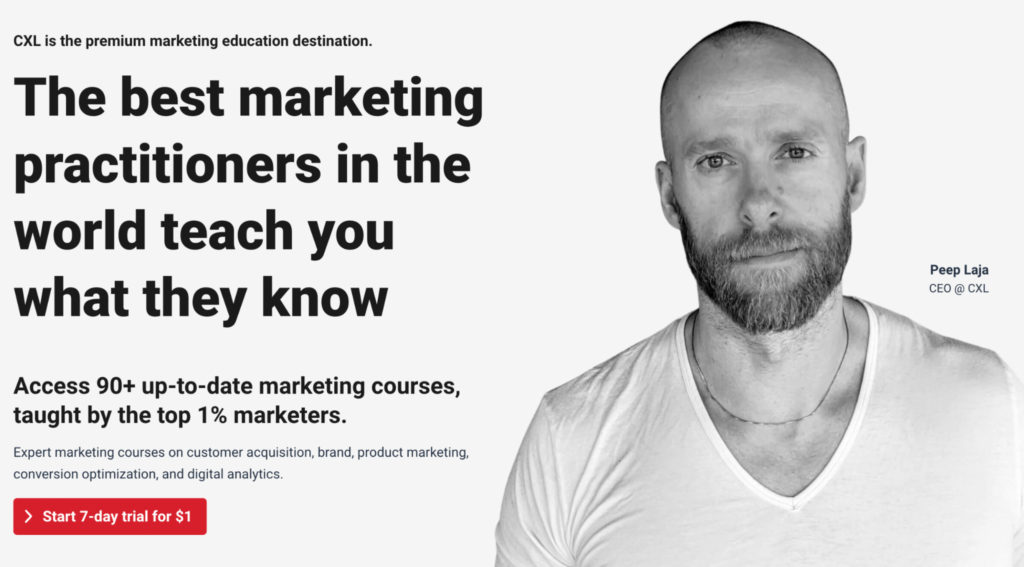
SEO tool Clearscope invites users to join their Director of SEO in a webinar.

And revenue intelligence platform Gong uses CTAs at the end of blog posts to guide readers to additional content they may find valuable:
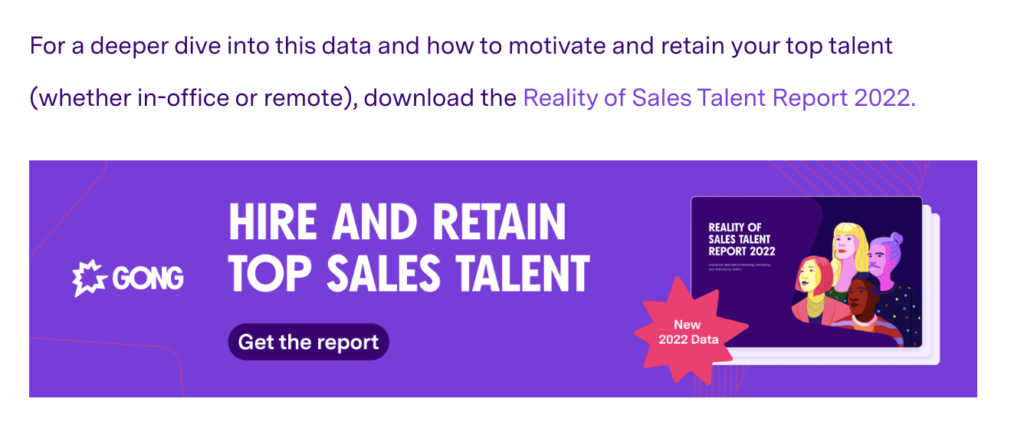
At the most basic level, these CTAs exist to give customers their next step in the buying journey.
CTAs drive the buying journey
A CTA in a brand awareness campaign will look entirely different from a CTA meant to drive sales at the bottom of the funnel.
Take this post from Mailchimp on email marketing benchmarks. Most readers will land on this page after searching for “email marketing benchmarks” on Google.

Mailchimp knows, then, that the user’s search intent is to learn more about the subject of email marketing, not about Mailchimp and its features.
So, the CTA at the bottom of this blog post directs readers to related concepts, several of which are more prescriptive and action-focused than email marketing benchmarks (a powerful way to build value for the customer and to establish your brand as an authority).
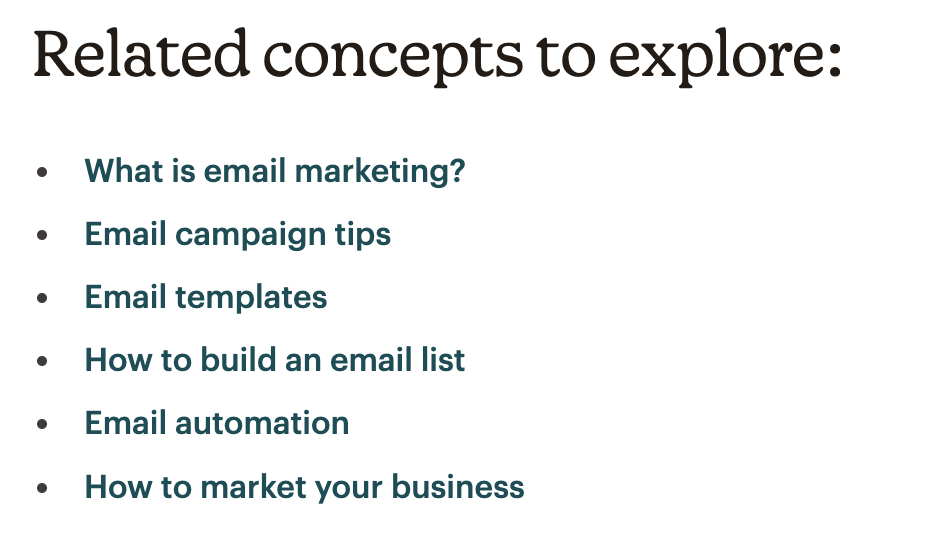
Strong CTAs go beyond “buy now”
The traditional answer as to why CTAs are important is that “customers don’t take action unless they’re told what to do.”
While this is true, it’s not the whole story. A strong call to action doesn’t just provide a path forward but removes any barriers or objections.
Consider the CTA “Sign up now” on a SaaS product landing page. This raises several buyer objections:
- Do I have to pay?
- How much does it cost?
- Am I locked into a contract?
- How long is the contract?
- What payment methods are available?
Effective CTA writing can overcome these objections simply by altering the wording.
Copper uses the copy “Try Free” to preempt and solve these objections.
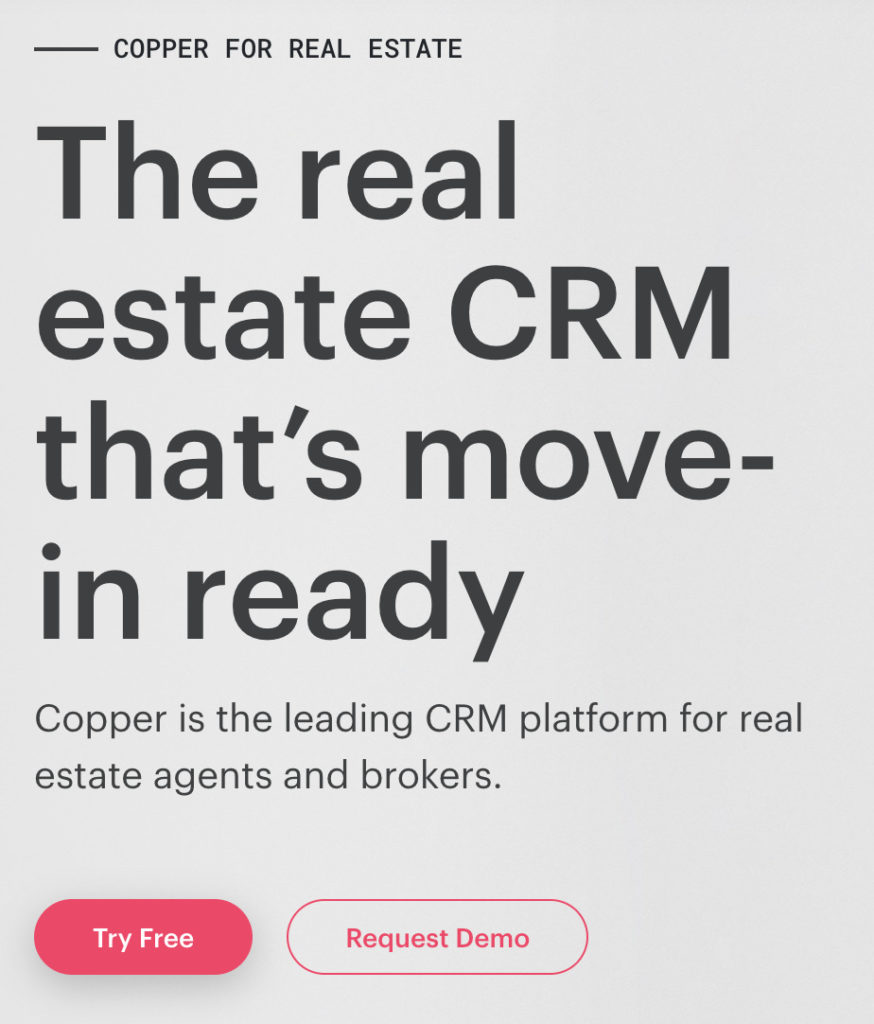
The word “Free” eliminates any concerns about cost, and the addition of the term “Try” implies a trial period, so there is no risk of signing up for a lengthy contract.
How to write a call to action that converts
CTA writing is a form of persuasive writing . Your goal is to convince readers to take a given action in as few words as possible.
A strong understanding of buyer psychology and buyer intelligence will be helpful here. You can also fast-track results with these CTA writing techniques.
Use Voice of Customer research to understand buyer goals
Voice of Customer research uses qualitative and quantitative research to uncover the wants and needs of buyers in their own words.
Then, you’ll use these insights verbatim (or close to) in your marketing material to resonate with customer desires.
This is how Copyhackers wrote Beachway Therapy Center’s landing page to drive 400% more click-throughs on the CTA.
The group mined Amazon addiction book reviews to learn about wants and pains and note memorable phrases.
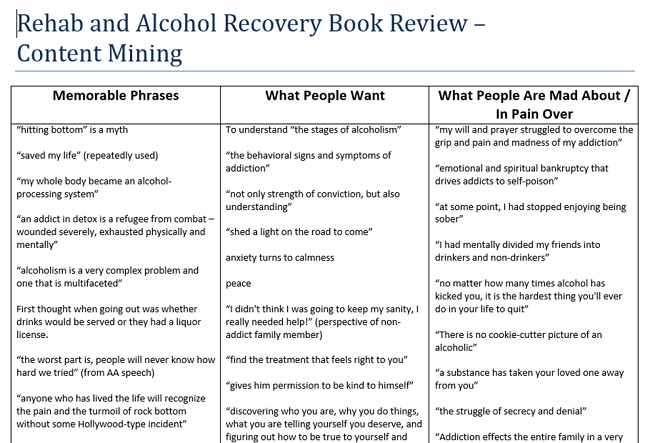
Within those reviews, they caught recurring themes and identified the messaging that resonates with their customer base. The group then applied that copy to the landing page.
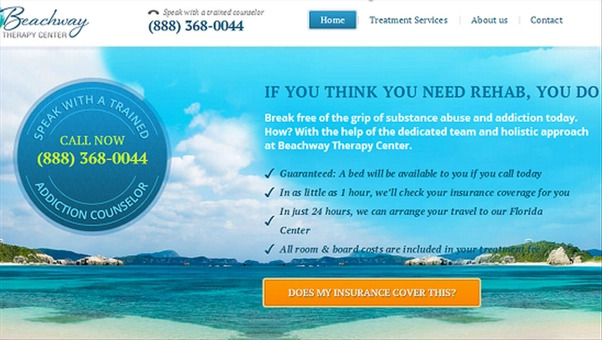
Messaging strategy agency Make Mention learned that the CTA for their client, “Start with the first hour free,” was asking for too much too soon.
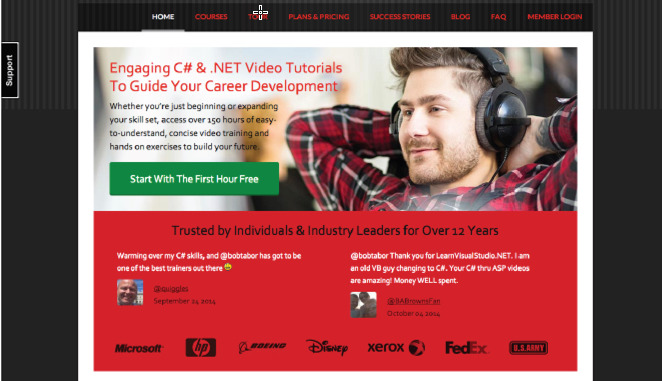
The group conducted online and email surveys and learned that users struggled to understand the course’s value and encountered friction because objections weren’t addressed.
Make Mention redid the page, injecting several phrases from the customers’ vocabulary, including:
- “practical exercises”;
- “getting your first developer job.”
They also directed the CTA button to lead to an alternative page where customers can learn more about the course.

Make Mention helped customers get more information before asking for the sale, and critically, they used the language customers use. This tweak boosted conversions on the CTA button by over 66%, leading to more check-outs from the Curriculum page than the Pricing page.
A good general rule to follow in CTA writing is to always start with an imperative. Imperatives are action words; they tell the reader to do something.
Powerful examples of action phrases include:
- Learn;
SparkToro demonstrates two examples of imperatives in action with their buttons: “Try SparkToro for free” and “See Pricing.”
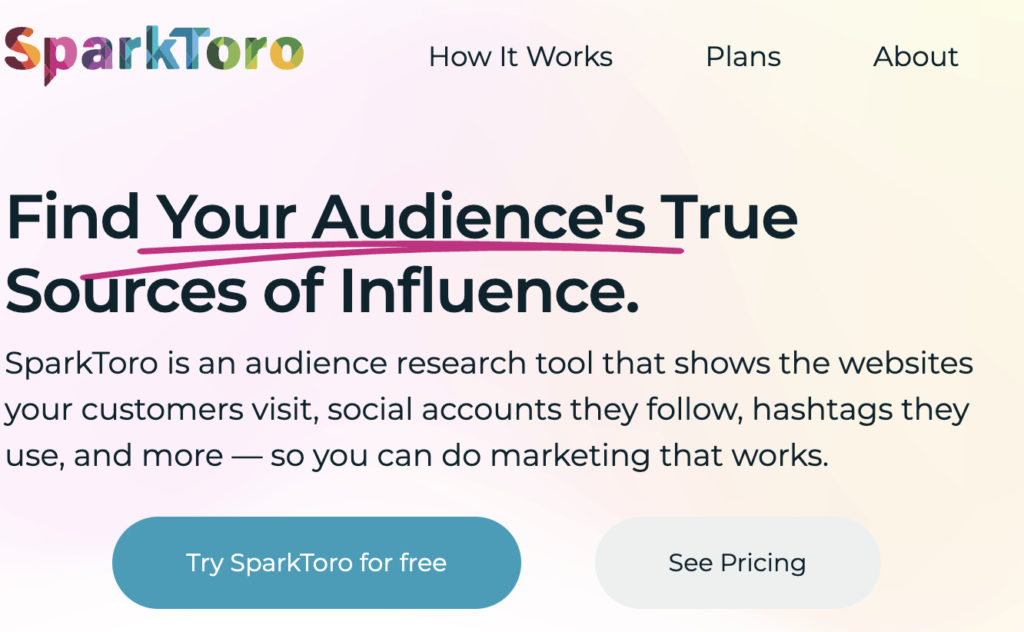
Preempt and eliminate objections
Effective call to action writing preempts objections and eliminates them early.
Take Buzzsumo , which clarifies that new users don’t have to pay a cent for 30 days, obliterating worries about forgetting they’ve started the trial and purchasing accidentally.

The most common objections you’ll face are:
- Cost (Is there one? And if so, how much?);
- Time (How long is this going to take?);
- Commitment (Am I locked into anything?).
For cost objections, use terms like “free” and “no credit card required” to clarify that there is no cost involved.
For time objections, phrases like “instantly,” “in 2 minutes,” and “now” communicate that the action will take place quickly.
Solve commitment objections by clearly outlining the trial length (“Try free for 14 days”) or with terms like “free forever” and “no credit card.”
Leverage power words to build excitement
Command words tell readers what to do. Power words make them feel excited about doing it. Combining the two is what motivates users to take action.
Examples of convincing power words to use in your CTA writing include:
- Classified;
- Minimalist;
- Irresistible;
- Effortless.
For example, GAP uses the term “unique” to encourage users to sign up for their mailing list (in exchange for a 25% discount).
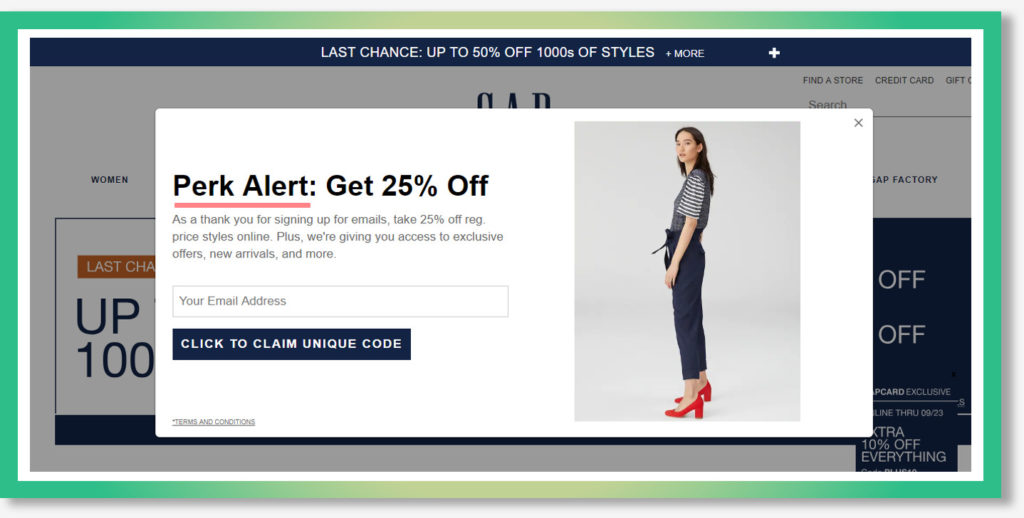
Create a sense of urgency to inspire immediate action
Great call to action writing inspires readers to take action now . When done well, they create buyer FOMO (fear of missing out), motivating website visitors to act immediately.
Words like “now,” “instantly,” “limited time,” and “today” are a good starting point but are best supplemented with urgent imperatives like “seize,” “gain,” and “access.”
Youprenuer combines the imperative “Get” with the urgency-building power word “Instant” to build a compelling CTA for their email list.
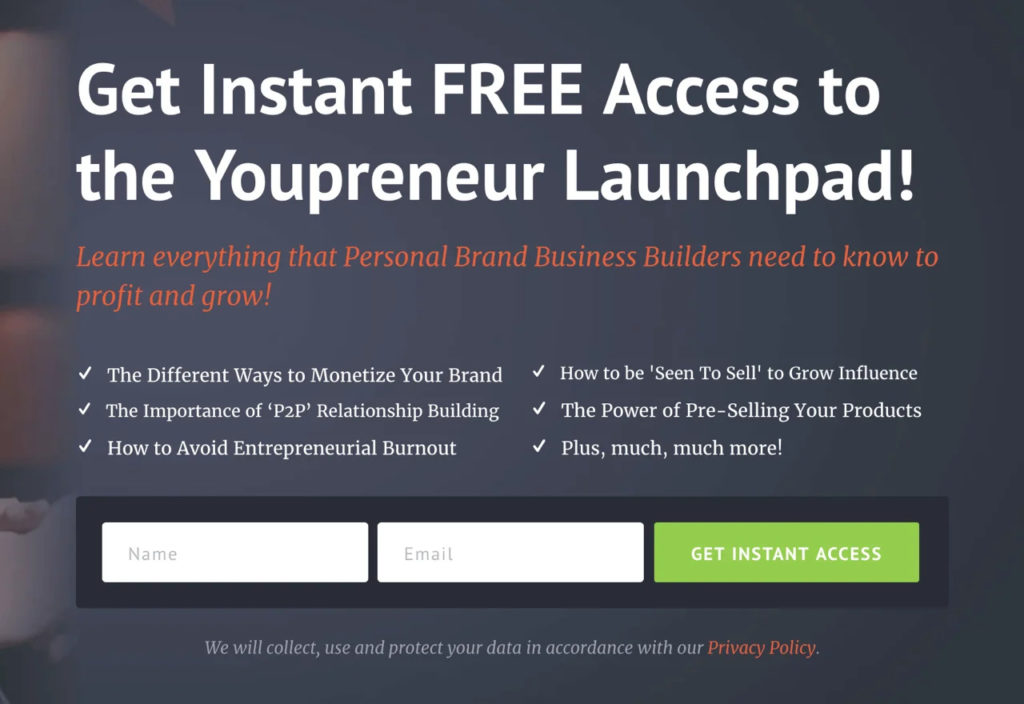
Use mystery to generate curiosity
In certain cases, you’ll want to avoid mystery altogether. For instance, when crafting a CTA designed to motivate readers to sign up for a free trial, we want to clarify what customers are getting into.
But curiosity can work in our favor for downloadable content like ebooks and guides.
Terms like “discover,” “see what’s inside,” and “get the secrets” are powerful curiosity-builders that can help motivate readers to hand over their email addresses in exchange for the promised value.
“Explore” is a great example of a curiosity-building word to include in your CTAs, as demonstrated by premium vodka brand Grey Goose .
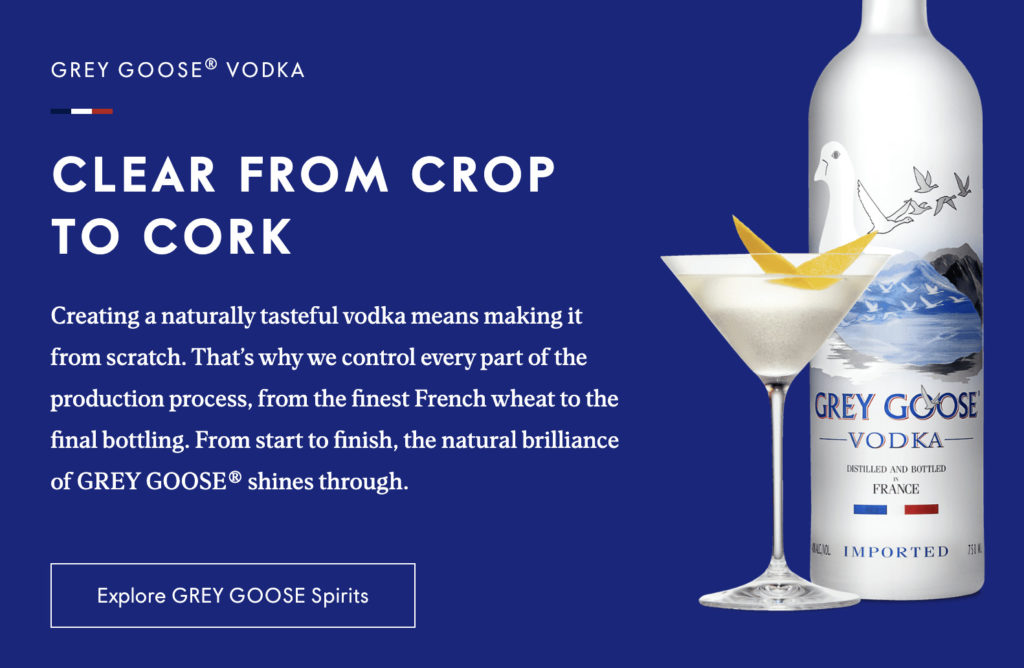
Back up your claims with social proof
CTA copy doesn’t need to sit on its own.
Great CTA writers supplement copy with social proof (testimonials, reviews, logos) to give more gravity to their message and build trust with skeptical buyers.
Juro , for example, supplements their “book a demo” CTA with review ratings from Capterra and G2.

7 impressive calls to action (and why they work so well)
Ultimately, A/B testing and experimentation will help you uncover your purpose’s perfect call to action.
Use these examples as a jumping-off point, and tweak and test as appropriate.
1. Pipedrive removes barriers to conversion
One of the biggest factors preventing readers from converting is the unknown. When faced with a CTA like “Start now,” customers wonder internally:
- What’s involved in starting?
- Do I need to get my credit card out?
- What exactly am I committing to?
You can solve these objections before they arise with careful copywriting.
Pipedrive’s homepage CTA section is a powerful example of this.

The green “Start free” call to action button immediately tells readers there’s no cost involved. The supplementary “No credit card required” copy below also helps users overcome this objection.
The addition of the simple “Full access” answers the question, “But am I just signing up to a limited version, and will I need to pay to access more sophisticated features?”
Lastly, Pipedrive does a great job of communicating why readers should click that CTA button (because Pipedrive users close 28% more deals after their first year using the CRM).
Takeaways from Pipedrive’s CTA example:
- Incorporate terms like “free” and “no credit card” to solve cost objections;
- Make it clear to users what they’re signing up for (e.g., full platform access);
- Use compelling social proof to communicate the why (answer the question, “What’s in it for me?”.
Average CTA writing leaves readers guessing:
- What am I signing up for exactly?
- What happens next?
- What if I don’t like what I see?
- Am I going to get hounded by a sales rep?
Strong CTA writing makes a reader’s next steps abundantly clear.
Take ActiveCampaign .
The exit popup on their email marketing product page aims to capture a reader’s interest (and email address) before they leave ActiveCampaign’s site.
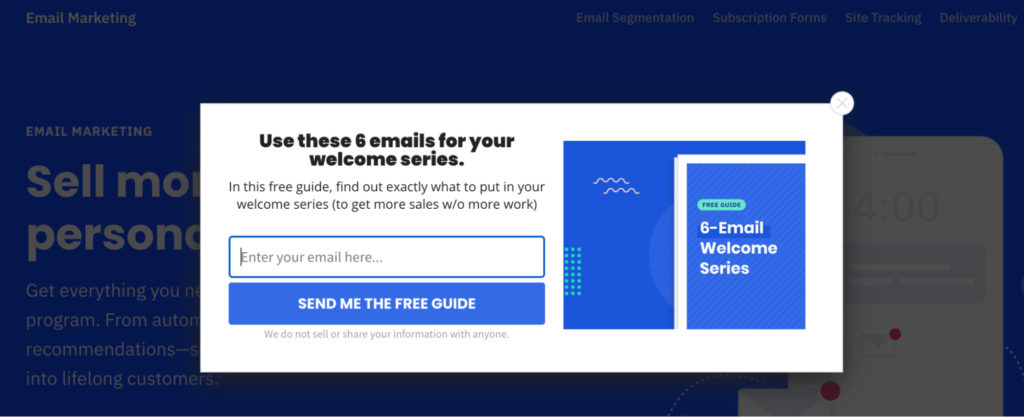
A simple “Download our guide” wouldn’t be sufficient. Those who leave a landing page without clicking an in-page CTA are clearly unconvinced, so any copy in an exit popup must be especially persuasive.
ActiveCampaign nails this in their header copy.
“Use these 6 emails for your welcome series” tells readers precisely what they’ll receive.
The use of the term “free” in the body copy eliminates cost objections, and the addition of the bracketed “to get more sales w/o more work” puts the offer in the context of the result, answering the reader’s question, “What’s in it for me?”
“Send me the free guide” (the copy in the CTA itself) is reader-focused (written in first person) and reiterates that there’s nothing to lose as the guide is free.
Lastly, the copy below the CTA button (“We do not sell or share your information with anyone”) works to convince even the most skeptical reader that they’re signing up for a safe offer.
Takeaways from ActiveCampaign’s CTA example:
- Make it abundantly clear what readers are going to receive;
- Solves the cost objection by doubling down on terms like “free”;
- Put your offer in the context of results (answer “What’s in it for me?”);
- Assure readers that their personal information will remain anonymous and won’t be sold or shared.
Vague, convoluted statements (“Helping ambitious creators design better futures”) don’t convert.
Concise, solution-focused calls to action that speak directly to outcomes (in your customers’ language) do.
Take Wordable , a platform that connects Google Docs with WordPress, HubSpot, and Medium, allowing high-volume content producers to publish to their blog in seconds.

Wordable doesn’t waste time telling readers how they’ll “Streamline and transform their content operations processes.” Instead, they jump straight to results:
- Publish in just one click;
- Export in seconds rather than hours;
- Cut back on VA or employee costs;
- Save as much as 100 hours per week in publishing time.
Then, Wordable delivers a persuasive offer, five free exports (notice the imperative “Get” kicking off the CTA copy), and eliminates any commitment objections by including the phrase “No credit card required.”
Prospects who read this CTA (and accompanying copy) aren’t left wondering what Wordable can do for them. They know exactly what problem it will solve and the results they can expect from hitting that CTA button.
Takeaways from Wordable’s CTA example:
- Speak your customers’ language (and avoid convoluted, vague, jargon-filled copy);
- Get straight to the results (What outcomes can your customer expect?);
- Back up “free” usage claims and solve commitment objectives by not requiring a credit card.
4. Jasper speaks directly to a common pain point
Though actual figures are hard to come by, marketers estimate that the average consumer sees between 4,000 and 10,000 ads per day .
Unsurprisingly, users see a large chunk of these ads ( 33% ) on social media platforms.
If you’re going to stand out from the other 3000+ ads your audience sees on these sites, you need to connect directly with their most critical challenges.
Take Jasper , an AI copywriting assistant.
Jasper’s Facebook ad speaks directly to a target audience pain point: content marketing is a time-consuming, labor-intensive process.
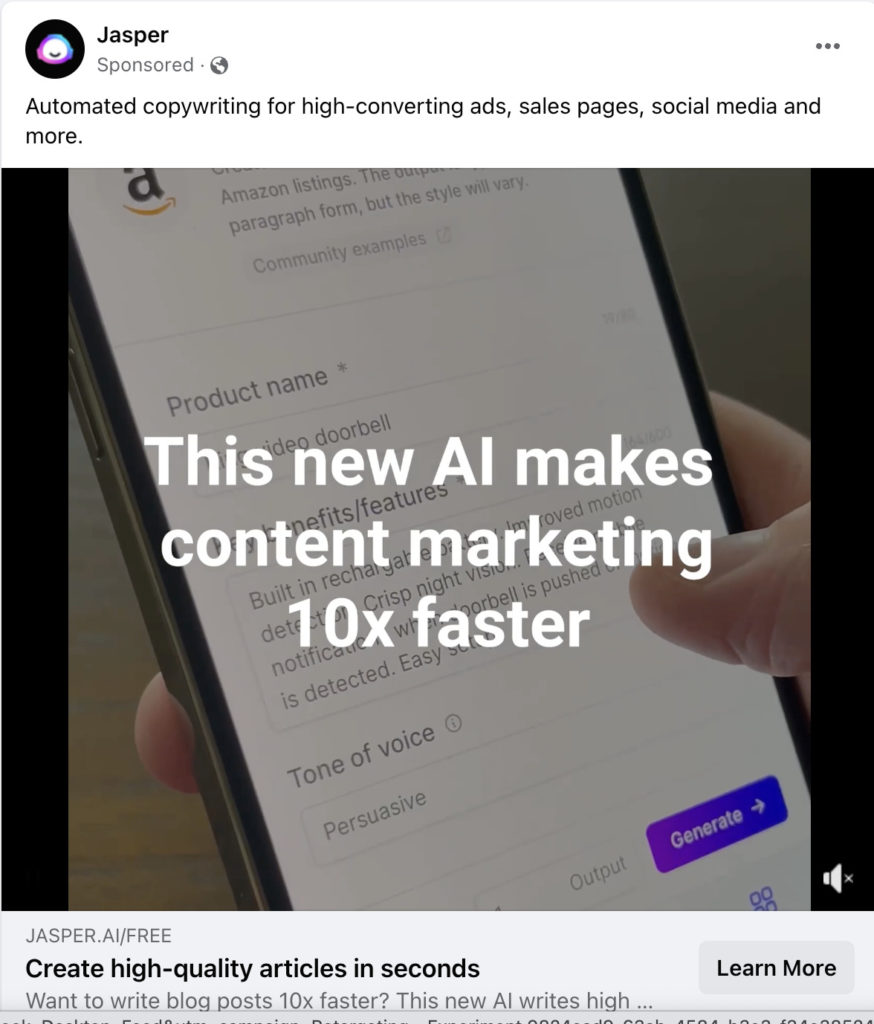
The video used in this digital ad is effective in and of itself (it shows the product in action, overlaid with a simple message “Write 10x faster”), but the copy below is what makes this a good CTA example:
“Create high-quality articles in seconds.”
First, Jasper begins with the action verb “create” before describing the desired outcome (high-quality articles) and the compelling benefit of their product (in seconds).
In just six words, Jasper communicates how its platform solves a common challenge for ecommerce site owners, social media managers, and digital marketing professionals.
Takeaways from Jasper’s CTA example:
- Identify a pain point that resonates with potential customers;
- Communicate how you’ll solve that pain point (i.e., your value proposition);
- Describe this benefit concisely, putting the reader as the subject.
Often, the best call-to-action examples are those that are concise. This is an especially powerful technique when writing CTAs designed to promote downloadable content such as guides, ebooks, and checklists, as it can double as an intrigue-builder.
Take email marketing platform Emma , whose simple CTA “See How” is a compelling example of how much you can achieve with just two words.

Of course, this CTA is only effective in the context of what you’ve said before:
- Your email marketing campaigns can be better (probably);
- We’re going to give you a framework for improving them.
This is an intriguing proposition (readers are asking, “Can I get more from my existing email list?”).
The call to action “See How” builds on this intrigue, inviting readers to click through and answer the question themselves.
Takeaways from Emma’s CTA example:
- Introduce a common problem;
- Imply that you’ll help readers solve it;
- Keep your CTA copy short and sweet to leverage that curiosity.
Skilled CTA writers understand how readers will respond to an offer and what objections or roadblocks will appear to prevent conversion.
Then, they address these objections directly in their copy.
Take BetterHelp , an online therapy platform that uses social media advertising in its demand generation strategy .

The intention of the above ad isn’t to convert readers into paid subscribers. It’s simply to convince ad viewers to click through to BetterHelp’s website and learn more about their product.
But, BetterHelp knows that while this is a low-commitment ask, prospective customers will have many concerns:
- What will others think if they find out I’m using online therapy?
- I’m busy. I don’t think it will fit around my schedule.
- Isn’t therapy usually super expensive?
BetterHelp solves all three objections using just three words:
- Discreet (Nobody will even know I’m using BetterHelp).
- Convenient (Therapy appointments are flexible).
- Affordable (BetterHelp is more cost-effective than traditional therapy solutions).
In this example, these three words supplement the actual call to action copy, “Online Therapy on Your Schedule,” reiterating that BetterHelp’s therapists are flexible about appointment times.
Takeaways from BetterHelp’s CTA example:
- Put yourself in the reader’s shoes: What concerns might they have that could prevent them from converting?
- Ask: What can we communicate that would quell these concerns?
- Test: What’s the best word (or phrase) to communicate that with as few words as possible?
7. ClickUp backs up its claim with a compelling guarantee
Convincing calls to action often make impressive claims.
But today’s consumers aren’t easily convinced, so if you make bold claims, be prepared to back them up.
Take ClickUp , which guarantees new users will save one day every week.
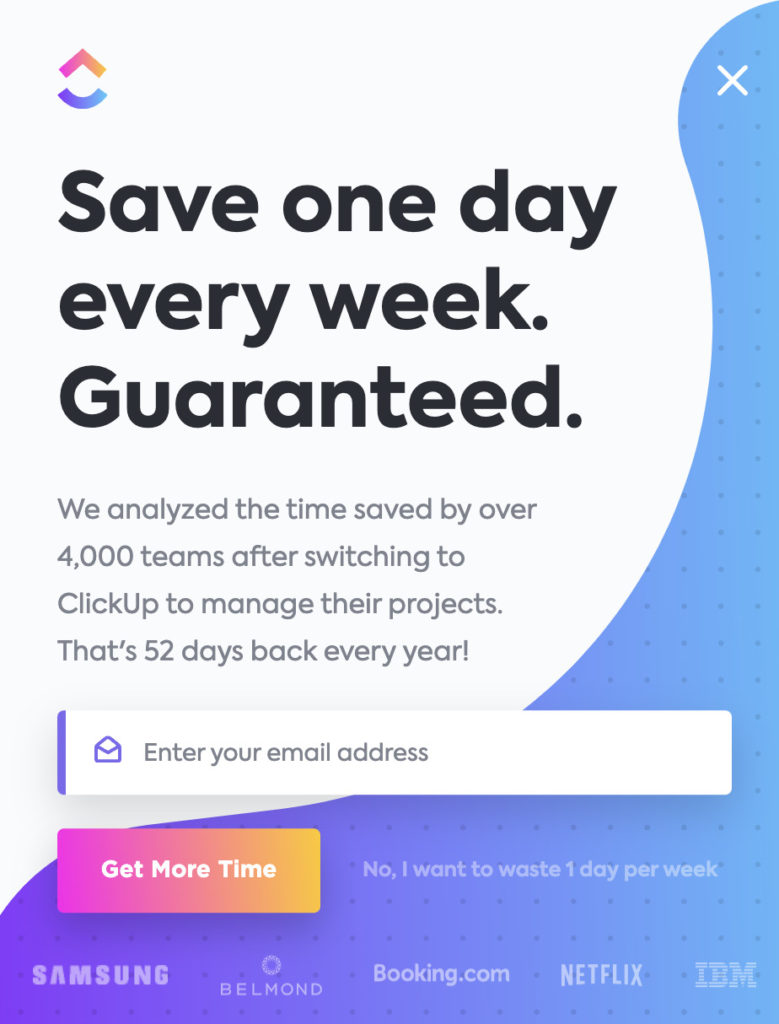
That’s a big promise, but ClickUp backs it up by providing context to their claim (we analyzed over 4,000 teams) and supplementing the popup ad with several impressive logos (Samsung, Netflix, IBM.)
But the real winner here is ClickUp’s CTA copy.
“Get More Time” is all about the result. It’s not about what ClickUp wants (“Sign up today”). It’s about what the customer needs .
Takeaways from ClickUp’s CTA example:
- If you’re going to make a bold claim, be prepared to back it up;
- Use customer logos as social proof to back up such statements;
- Frame your CTA copy from the customer’s perspective, not yours.
These call-to-action examples are a solid starting point for designing high-performing CTAs that resonate with your own audience. What works for these brands may not work for yours, so it’s always better to hypothesize and test.
CTAs that convert at high rates come from strategic experimentation. This is the only way to determine whether the word “Get” performs better than “Sign up” or “Access” for a given call to action. And it’s one of the best ways to see real business growth . Check out our A/B testing tutorial today, and become a CTA testing pro.
Related Posts

Should you say 'read more' or 'product information' in your product category view? Which is…
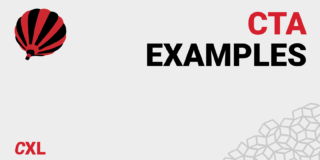
The call to action is a core component of marketing, sales, and any persuasion-based effort.…
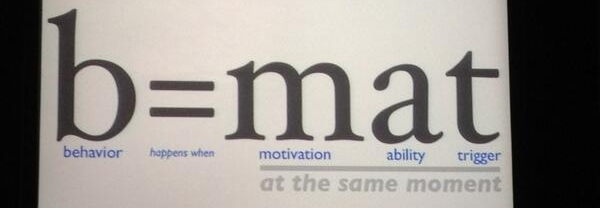
In today's review I'm assessing whether websites in question could do anything to better get…

Planning to create a promo video to increase conversions? Good idea. Table of contents1. Dollar…

Josh Krissansen
Josh is a Content Specialist at Grizzle, a content marketing & SEO agency, and a freelance content writer for B2B clients in the SaaS space.
Current article:
Search posts.
- Acquisition (182)
- Brand Building (22)
- Business Building (109)
- Copywriting (42)
- CRO & Testing (316)
- Customer Stories (7)
- Digital Analytics (89)
- Marketing Tactics (50)
- Original Research (15)
- Psychology (81)
- Social Media (20)
- User Experience & Persuasive Design (179)
Subscribe to our newsletter.
Join 140,000+ marketers and get a weekly expert-led newsletter focused on helping marketing teams overcome growth challenges, punch above their weight, and crush their competition.
- Your e-mail *
- I agree to receive updates from CXL.
- Phone This field is for validation purposes and should be left unchanged.
7 Call to Action Examples You Have Never Seen Before
At great risk to my sanity, I went online with the intention of finding as much advertising as I could.
The goal: to find call to action examples (CTAs) that were fresh, original, unique, and compelling.
My discovery: Almost everyone is using generic CTAs. Safe, boring, and forgettable. The 7 innovative call to action examples I found made those brands stand out immediately.
Your opportunity: By changing 2-3 words of a call to action, brands can stand out in a small way from the hopelessly ordinary competition.
Less than 0.00001% of CTAs Are Unique
This is not a scientific number. I came up with it out of spite after an exhausting search.
Refresh the examples in a listicle about calls to action, my editor said.
I thought this was going to be easy.
It was a nightmare.
Websites for brands large and small were universally boring in terms of calls to action. The most tantalizing offer I could find was usually “Free Trial”, which brought me to a page with miles of fine print.
I thought maybe the aggressive pay-per-click advertisers would put together some compelling calls to action. Nope. The name of the game there is using every conversion hack at once.
Here’s a typically boring call to action example that most people are using :

I think this offer hits every cliche tactic: the ticking clock, a warning emoji about sell-out risk, money-back guarantee, a steep discount, etc.
Then I tried social media, which was even worse. Facebook gave me nothing in the way of an inventive CTA. Absolutely nothing.
I checked Reddit–as always, a wonderful place, just not for buying things.
On X (fka: Twitter), I was hoping to find some good scammy infoproducts, maybe some clever hardsells. But I was disappointed. I could have made a full quilt that spelled out “unoriginal” with all the thread emojis inviting me to click and read a tweet-storm. Here’s why that trend is played out: 🧵/23
My wife told me that TikTok has been ruined by advertisers and influencers–so I was really excited about that. This is where the real ingenuity must be.
Nope. It’s a simple SHOP button that overlays influencer videos. That’s it.
But in the end, I prevailed. I found 7 examples of brands actually trying something new with their call to action. They used this small detail to support their brand image or speak to their audience.
7 Truly Unique Call to Action Examples
1. cloudflare.

“Under attack?”
That is a viable button you can click on Cloudflare’s site.
I love it.
Cloudflare has positioned themselves as a cybersecurity version of calling 911 when there’s an intruder in your house. And they did it using two words, a question mark, and a construction-zone orange button in the navbar.
I assume the majority of people who click that button are like me: not currently under attack, but curious about what the next steps would be if they were.
I wanted to learn more because of the clever call to action. If the button had said Learn More, I never would have clicked it.
2. Backcountry

The online outdoor retailer Backcountry hires the people who stay up around the fire fighting about which hiking stove weighs less. You know the type: Gearheads.
This is a huge selling point for Backcountry. When people buy kayaks, avalanche beacons, and so on, they really want to know that this gear works.
Call a Gearhead. Text a Gearhead. These are creative, on-brand calls to action nested in a familiar dropdown menu.
You have a question about climbing rope? Now you are talking with a woman who climbs 3 times a week.
3. LINGs CARS.com

This is actually a fairly tame example of the calls to action on LINGsCARS.com , one of the most successful car leasing services in the UK.
Ling broke every rule of web design to bring us this masterpiece. I know neons are in right now, but most people aren’t using all of the neons, at once, with a paisley background.
CrazyEgg will lock me out of WordPress if I actually recommend a call to action that includes three Order Now buttons that blink at random intervals. So I am not going to do that.
I will say with 100% certainty, however, that I have never seen call to action examples quite like this ever before.
4. Niki Whittle

Niki Whittle is an online personal stylist who has helped thousands of clients find joy instead of anxiety at the prospect of getting dressed and going out into the world.
The text of her CTA button speaks directly to that goal: Help me enjoy getting dressed!
If you swapped out Niki’s personalized text for a basic “Find Out More” button, I think the call to action would suffer.
Her choice of text is intimate. No adult is going to ask for help getting dressed unless they fully trust the other party to understand where they are coming from. The way that Niki has framed the call to action shows that she understands.

Due to California regulations, the beverage brand Ceria couldn’t exactly say what their new product was. With the help of the marketing agency Mother, Ceria found a clever way to get their audience to connect.
The call to action they used was a Spotify playlist people could download by scanning a barcode styled like the familiar Spotify audio waveform.
There’s a cool story behind this ad campaign, which appeared online and in-print in California.
I’m not going to rehash it here because you should go visit the site of the people who did the work , not hear about it third-hand, looking at screenshots I took while I was way behind schedule writing this post.

6. AllTrails

Have you ever seen a limited time offer that isn’t pushy?
AllTrails nails it with this email they sent me. If I go outside, this weekend only , they’ll plant a tree on my behalf.
It’s a positive push, encouraging me to do something for my health, and it won’t cost me a dime. Until AllTrails called me to action, I just had weekend plans. Now I am saving the forest.
The invitation to “Join In” isn’t super original, I know, even with those cute little tree icons.
But the call to action is social. It’s not “Register” or “Find out more”, it’s about connecting with other people. AllTrails has 50 million users. This is a real community, and AllTrails is smart to frame it that way.
7. Avocado Green Mattress

Avocado Green Mattress has upcycled bedroom furniture people can buy to complement their organic mattresses.
The call to action is “Shop Zero Waste” is a clear call to the type of buyer who is willing to pay a premium to minimize their impact on the environment. “Shop” would work, but it doesn’t highlight the key selling point of their furniture.
It’s a small detail, but most people buying online have 5-7 tabs open. I know I do. With buyers scanning all these different sites, I think it makes sense to foreground your unique features in the button text.
More Call To Action Examples
Here are some twists on classic calls to action. I can’t say I’d never seen these types of tactics before, but the following examples are well done.
The call to action text speaks to the audience, aligns with the brand image, or is simply more inviting than a generic “Try Now” button.
Kati Curtis Design

Kati Curtis Design opted for a slight variation on the Get In Touch call to action by including her name.
I’m not going to belabor the point about what’s going on here, but this slight personalization will absolutely stand out.
I think this is a good idea if you are the face of your business as opposed to a brand. “Get In Touch With The Owner” could work, too.

Havenly is an online interior design service company. I liked the invitation for customers to “Find Their Style.”
They could have stuck with “Learn More” or “Book a Consultation,” but those aren’t personal at all. Those are also fairly passive calls to action, versus “Find Your Style,” which is much more active.

Birchbox , the popular cosmetics subscription box opted to use an invitation style call to action:
“Build Your Box”
It’s intuitive, on-brand, and crisp.
One issue people have with subscription services is that they get products they don’t want. With this short call to action, Birchbox is countering that objection by offering their customers an active role in building their own box.
Art & Logic

Art & Logic is a software development company with an approachable call to action.
Yes, they decided to go with “Let’s talk about your project” instead of something sterile or gimmicky.
Building custom business software is insanely complex, but Art & Logic makes the next steps as easy as possible.
Make your website better. Instantly.
Keep reading about copywriting.

How To Balance Deep Copywriting Research With a Deadline
All the words you see on product packaging, the marketing emails you receive, the websites you browse, and even the advertisements delivered to your mailbox…

Most Copywriting Tips are Vague and Generic–Not These 9
Great copywriters aren’t born, they’re made. In fact, you don’t even have to be a great writer to nail the copywriting thing. You just need…

Everything I Know About Copywriting After Making $500K
$500K? Lucky, the disbeliever will say. You just got lucky with your words. Maybe. But most copywriters aren’t counting on luck or magic to put…

At great risk to my sanity, I went online with the intention of finding as much advertising as I could. The goal: to find call…
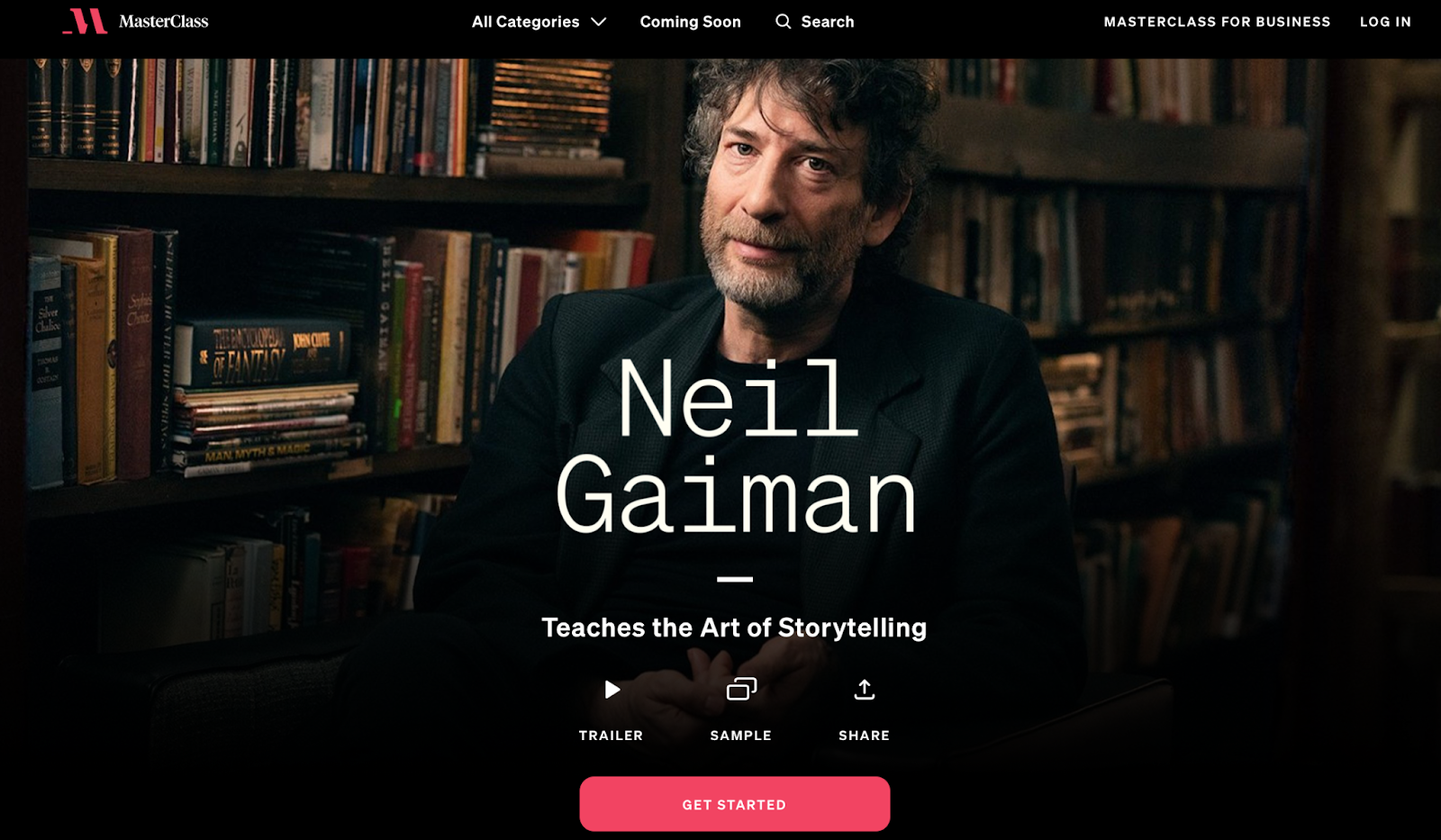
Best Creative Writing Courses Compared
Taking a creative writing course will help you to become a better writer. It will teach you how to tell a story, write descriptively, and…

How to Create Winning Headlines in 9 Simple Steps
In any ad, everything depends on the headline. It’s why some copywriters are known to spend 50% of their time on just the headline. As…

The Five Sales Letters Every Marketer Should Know, Hands Down
If you want your visitors to buy, instead of bouncing off your site like a basketball… Ask yourself: What’s missing from my funnel? What’s missing…

15 Habits of Website Visitors That Will Completely Change the Way You Write Website Content
For the most part, website visitors are quite predictable. This gives you, a business owner, a huge advantage. Why? Psychology!

The Biggest Lie in Copywriting
I am an artist. Or at least that’s what 90% of the people I speak to think when I tell them what it is I…

How To Increase Your Landing Page Conversions by Asking a Question
It’s believed that it takes users (who have no idea of what your site does) exactly three seconds to orient themselves and make up their…

Copywriting For Social Media Ads: It’s Not What You Say, It’s How You Say It
Many might say that social media ads are interruption advertising in a modern form. However, there is definitely something less abrasive about a sponsored tweet…

16 Helpful Copywriting Articles To Launch You Into Web Writing Greatness
We all need a little help… from time to time. Actually, as online copywriters striving for greatness, we need all the help we can get….

62 Power Words That Will Help You Sell
Have you ever read a landing page, sales letter or even blog post which has unequivocally sold you on a product? The type of content…

How to Become a Better Copywriter: 21 Tips from the Experts
Want to get better results from your web pages? Then you have to get the copy right. Whether you’re writing landing page copy or tweaking…

How To Increase Conversions By Forgetting The CTA
Your target customer has zero interest in your CTA. He/she doesn’t particularly care about the call, the signup, or even the purchase. He/she isn’t really…
Over 300,000 websites use Crazy Egg to improve what's working, fix what isn't and test new ideas.
Last Updated on July 27, 2017

How to make an effective call to action in a white paper
Any white paper without an effective call to action is wasting a huge opportunity..
A call to action answers the question, “What do we want our ideal prospect to do after they finish reading our white paper?”

Knowing how to craft one can make a big difference in your results.
Here are 10 tips on how to write a more effective call to action in your next white paper.
Tip #1: Put it at the end
A call to action is not like a “Buy now” button that you can sprinkle all through an online sales letter.
You use it once, right at the end of your white paper. That means at the end of your concluding summary.
Tip #2: Keep it short, clear, and precise
A call to action doesn’t have to be long and involved. In fact, it can be conveyed in one sentence.
Here’s the simple formula I use to write a call to action: “To find out more about how your business can gain [key benefit explained in white paper] with [product or company name], [do something].”
The rest of these tips focus on the “do something” part of this formula.
Tip #3: Don’t be vague
In a call to action, you want to be as precise as possible.
Think of this like giving directions. Do you say, “Go down here a-ways and after that you’ll need to make a turn?” or do you say, “Keep going on Main Street for three blocks, and then turn right at the stoplight.”
As a rule, the more specific the call to action, the better… and the easier it is to measure the results.
So tell them something specific:
- Go to this landing page.
- View a short demo.
- Take an online survey.
- Request a free trial of our product.
Tip #4: Don’t send them to your home page
A phrase like, “For more information, visit AcmeSoftware.com” is not an effective call to action.
The only exception is a business with quite a simple value proposition and just a few pages on the web.
For example, I wrote a white paper for one client that uses proprietary software to cut corporate wireless costs. The value proposition was easy to see, and their website only had three pages.
For that white paper, I used this call to action:
“To find out how much your business can save on wireless, contact [company name] at [phone number] or visit [website] for a free analysis.”
Tip #5: Don’t ask for the order
Many salespeople think that a call to action means to ask for the order. After all, they’ve been taught, “Always be closing!”
Just like in this notorious speech by Alec Baldwin from the movie version of Glengarry Glenn Ross. (Click to watch, but beware of extreme profanity).
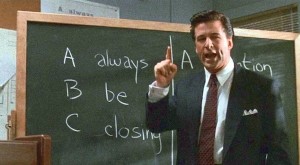
There’s nothing wrong with selling, at the right time and in the right place. But a white paper is not the time or place.
Instead of selling, a white paper works best if it helps, teaches, and explains.
There will be time for selling later, after your company has established more trust with the prospect.
Tip #6: Build your white paper into your sales cycle
Most B2B companies that use white papers have a more complex sales cycle than the one I mentioned above.
For best results, build your white paper into the company’s sales cycle.
How? Talk to the sales manager or product manager and explain the plans for the white paper.
Discuss where this paper fits into the sales cycle, and what makes sense for the next step.
This may take some hard thinking and negotiating. But without it, your call to action can never be as powerful.
Tip #7: Consider your purpose and audience
Your call to action should ideally match the purpose and intended audience for your white paper. This is where your white paper planning comes in.
Let’s say your purpose is to generate leads, and your target audience is COOs in mid-range enterprises with problems making good hires.
You probably can’t ask a busy executive to download a demo version of your HR software to test-drive it.
But you could ask them to take a 2-minute survey to see how their company’s hiring process compares to other firms in the same sector.
Be imaginative, and come up with an easy next step.
Tip #8: Deliver prospects to your website
Another good tactic is an ROI calculator, where a prospect can enter numbers into a widget and see how much they could save or profit with your solution.
A ROI calculator can be ideal for a CFO audience.
But keep it believable. Don’t just pull numbers out of thin air. Use real customer experiences or metrics to build your calculations.
Always be looking for ways to get an interested prospect to interact further with the company, most likely through its website.
Tip #9: Get the resources to create the next step
But wait a minute, that 2-minute survey doesn’t exist yet. Neither does that ROI calculator.
So you better get busy.
In other words, if there isn’t already a “next step” in your sales cycle, you need to create one.
And if you can’t do that all by yourself, you may need a researcher, a writer, and a Web developer… and the resources to engage them.
This suggestion goes beyond creating a call to action, but it will help generate much better results.
Tip #10: Think ahead to the NEXT call to action
At the end of the next step, always have another call to action to keep prospects engaged.
Perhaps this is a good time to ask them to watch a short video, or subscribe to your e-newsetter of monthly tips.
Your goal in each step is to engage each prospect more, collect a little more information from them, and draw them deeper into your sales funnel.
In other words, build a cascade of conversions, each drawing them closer and closer to the company.
Do you have any tips on making calls to action? Please leave your comment below.
Want to hear whenever there’s a fresh article on this site? Subscribe here to stay in the know on long-form content . From time to time, we’ll also send you word about some great new resource or training. And you can unsubscribe any time.

About Gordon Graham
Worked on 320+ white papers for clients from Silicon Valley to Switzerland, on everything from choosing enterprise software to designing virtual worlds for kids, for clients from tiny startups to 3M, Google, and Verizon. Wrote White Papers for Dummies which earned 60+ 5-star ratings on Amazon. Won 16 awards from the Society for Technical Communication. Named AWAI 2019 Copywriter of the Year.
If you liked this post...

Quick tip: 6 easy hacks for ChatGPT [with sample prompts]

You asked: Is copywriting different from content writing?

Quick tip: Use AI to make a Mini-Me
Leave a comment cancel reply.
This site is protected by reCAPTCHA and the Google Privacy Policy and Terms of Service apply.
Need a great white paper?
How to Write a Conclusion for an Essay

The conclusion is the final paragraph of your writing, and it holds significant weight. It allows you to leave a lasting impression on the reader. But how to write a conclusion that effectively summarizes your points and resonates with your audience?
This article will guide you through the process of crafting a strong conclusion paragraph, step by step. Our term paper writers will break down the key elements and provide clear examples to illustrate each point. By following these steps and referencing the examples, you'll be well on your way to writing impactful conclusions that leave your reader feeling satisfied and informed.
What Is a Conclusion
Conclusion in an essay is the final paragraph or section that wraps up the main points and provides closure to the piece.
Imagine it as the bridge that connects your ideas to a broader significance. A well-crafted conclusion does more than simply summarize; it elevates your points and offers a sense of closure, ensuring the reader leaves with a clear understanding of your argument's impact. In the next section, you will find conclusion ideas that you could use for your essay.
Want to Have Better Grades?
Address to our professionals and get your task done asap!
How to Write a Conclusion
A powerful conclusion not only summarizes but also reinforces your message and leaves a lasting impression. Here's a breakdown of how to write a conclusion for an essay:
- Restate Your Thesis: Briefly remind the reader of your central point. Don't simply copy and paste your thesis statement, but rephrase it using different words.
- Summarize Key Points: Revisit the main arguments or evidence you presented throughout your writing. This reminds the reader of the journey you took them on and ensures they grasp the core takeaways.
- Avoid Introducing New Information: The conclusion is not the place to introduce brand new ideas. Stick to summarizing and reinforcing the existing points.
- End on a Strong Note: Go beyond a simple summary. You can add a final thought, pose a question to spark further reflection, or highlight the significance of your topic.
Read more: Persuasive essay outline .
The Purpose of a Conclusion
As you already understand, the conclusion paragraph serves a critical function in your writing. It serves as a final push to solidify your message in your readers’ minds. It's also your opportunity to:
- Remind the reader of your central point (thesis) and the key arguments or evidence used to support it.
- Use this space to offer a final thought, pose a question that prompts further pondering, or emphasize the significance of your topic.
Remember, a concluding paragraph should NOT:
- Introduce New Information: The conclusion is not the place for brand new ideas. Its purpose lies in wrapping up and reinforcing what you've already established.
- Stray from the Thesis: Don't introduce arguments or evidence not discussed earlier in your writing. Maintain focus on the core message you've been building throughout your work.
How Long Should a Conclusion Paragraph Be
Generally, the ideal length depends on the overall length and complexity of your essay. However, it is not the sole factor. A well-written conclusion of 3 sentences can be far more effective than a rambling one that drags on for multiple paragraphs.
Here are some general guidelines can help you achieve a balance when writing a conclusion:
- In most cases, you can effectively summarize your points and leave a lasting impression within 3-5 sentences.
- Prioritize delivering a clear and impactful message over unnecessary elaboration.
- Proportion matters. A lengthy research paper might warrant a slightly longer conclusion (think 5-7 sentences) to adequately address all the main points. Conversely, a shorter piece like a blog post might require a more concise conclusion (2-4 sentences).
Conclusion Transition Words
The right transition word can smoothly bridge the gap between your main body of text and your conclusion. Here are some transition words for conclusion categorized by their purpose:
| Category 🔖 | Phrases 💬 |
|---|---|
| Summarizing 📝 | In conclusion, To summarize, In essence, Overall, On the whole |
| Looking Ahead ⏩ | As a result, Consequently, Therefore, Hence, Thus |
| Emphasizing Significance 🌟 | More importantly, Even more so, It is crucial to remember that, Undoubtedly |
| Offering a Final Thought 🧐 | In closing, Finally, To conclude, Ultimately |
| Shifting to a Call to Action 📣 | For this reason, With this in mind, Let us now consider, In light of the above |
7 Tips for Writing a Conclusion
Having grasped the core functions and structure of a conclusion paragraph, let's check out some practical tips to elevate your closing statements. Here are 7 effective strategies to consider from our dissertation writer :
.webp)
- Vary Your Sentence Structure: Avoid a monotonous string of simple sentences. Use a mix of sentence structures (short, long, complex) to create a more engaging rhythm.
- Connect to the Introduction: For a cohesive feel, subtly tie your conclusion back to your introduction. You can reference an opening question you posed or revisit a key image you mentioned. Consider this tip especially when unsure how to start a conclusion.
- Embrace Figurative Language (Sparingly): There are different conclusion ideas but a well-placed metaphor or simile can help leave a lasting impression. However, use figurative language strategically and avoid clichés.
- Appeal to the Reader's Emotions: Did your writing highlight a pressing issue? Consider evoking emotions relevant to your topic when you want to know how to write a conclusion paragraph that tugs at the reader's heartstrings.
- Consider a Quote (if Relevant): A powerful quote from a credible source can add authority and depth to your essay conclusion. Ensure the quote aligns with your thesis and enhances your message.
- End with a Strong Call to Action (Optional): If your purpose is to persuade or inspire action, conclude with a clear call to action. Tell your reader exactly what you want them to do next.
- Proofread and Revise: Just like any other part of your writing, proofread your conclusion carefully. Ensure clarity and a smooth flow between your main body of text and the closing statement.
By this time, you already know how to write a conclusion for an essay. However, if you still need further guidance, buy essay from our expert writers anytime!
Do’s and Don’ts of Essay Conclusion
Let's now look at some simple tips from our online paper writing service to help you avoid common mistakes when writing a conclusion.
| Dos ✅ | Don'ts ❌ |
|---|---|
| Remind reader of main idea | Don't retell everything |
| Briefly touch on main arguments or evidence. | Don't bring up new ideas |
| Offer a final thought, question, or highlight the topic's importance. | Don't go off on tangents |
| Tailor your conclusion to resonate with your reader. | Don't use tired phrases. Be original, avoid clichés. |
| Leave a lasting impression with a powerful statement, question, or call to action (if needed). | Don't end abruptly |
Conclusion Paragraph Examples
Here are three conclusion paragraph examples showcasing how powerful closings are crafted.
Recommended for reading: Nursing essay examples .
In closing, a strong conclusion is a must-have for any piece of writing. It reminds your reader of your main point and leaves them with a lasting impression. Here are some key things to reflect on how to write a good conclusion:
- Restate your thesis in a fresh way.
- Mention your key arguments.
- Leave a lasting thought or question.
- Consider your audience and tailor your ending to them.
- End with a strong statement.
Remember, a good conclusion is not merely about wrapping things up but rather about making your writing truly impactful.
Need Help with Your Essays?
Our service is the best assistant the money can buy – original and reliable.
How To Write A Conclusion For An Essay?
How to write a good conclusion, how to write a conclusion for a college essay.

Daniel Parker
is a seasoned educational writer focusing on scholarship guidance, research papers, and various forms of academic essays including reflective and narrative essays. His expertise also extends to detailed case studies. A scholar with a background in English Literature and Education, Daniel’s work on EssayPro blog aims to support students in achieving academic excellence and securing scholarships. His hobbies include reading classic literature and participating in academic forums.

is an expert in nursing and healthcare, with a strong background in history, law, and literature. Holding advanced degrees in nursing and public health, his analytical approach and comprehensive knowledge help students navigate complex topics. On EssayPro blog, Adam provides insightful articles on everything from historical analysis to the intricacies of healthcare policies. In his downtime, he enjoys historical documentaries and volunteering at local clinics.
- Updated writing tips.
- Added informative tables.
- Added conclusion example.
- Added an article conclusion.
- Essay Conclusions | UMGC. (n.d.). University of Maryland Global Campus. https://www.umgc.edu/current-students/learning-resources/writing-center/writing-resources/writing/essay-conclusions
- How to Write a Conclusion for an Essay | BestColleges. (n.d.). BestColleges.com. https://www.bestcolleges.com/blog/how-to-write-a-conclusion/
- Ending the Essay: Conclusions | Harvard College Writing Center. (n.d.). https://writingcenter.fas.harvard.edu/pages/ending-essay-conclusions
%20(1).webp)
- Link to facebook
- Link to linkedin
- Link to twitter
- Link to youtube
- Writing Tips
5 Examples of Concluding Words for Essays

4-minute read
- 19th September 2022
If you’re a student writing an essay or research paper, it’s important to make sure your points flow together well. You’ll want to use connecting words (known formally as transition signals) to do this. Transition signals like thus , also , and furthermore link different ideas, and when you get to the end of your work, you need to use these to mark your conclusion. Read on to learn more about transition signals and how to use them to conclude your essays.
Transition Signals
Transition signals link sentences together cohesively, enabling easy reading and comprehension. They are usually placed at the beginning of a sentence and separated from the remaining words with a comma. There are several types of transition signals, including those to:
● show the order of a sequence of events (e.g., first, then, next)
● introduce an example (e.g., specifically, for instance)
● indicate a contrasting idea (e.g., but, however, although)
● present an additional idea (e.g., also, in addition, plus)
● indicate time (e.g., beforehand, meanwhile, later)
● compare (e.g., likewise, similarly)
● show cause and effect (e.g., thus, as a result)
● mark the conclusion – which we’ll focus on in this guide.
When you reach the end of an essay, you should start the concluding paragraph with a transition signal that acts as a bridge to the summary of your key points. Check out some concluding transition signals below and learn how you can use them in your writing.
To Conclude…
This is a particularly versatile closing statement that can be used for almost any kind of essay, including both formal and informal academic writing. It signals to the reader that you will briefly restate the main idea. As an alternative, you can begin the summary with “to close” or “in conclusion.” In an argumentative piece, you can use this phrase to indicate a call to action or opinion:
To conclude, Abraham Lincoln was the best president because he abolished slavery.
Find this useful?
Subscribe to our newsletter and get writing tips from our editors straight to your inbox.
As Has Been Demonstrated…
To describe how the evidence presented in your essay supports your argument or main idea, begin the concluding paragraph with “as has been demonstrated.” This phrase is best used for research papers or articles with heavy empirical or statistical evidence.
As has been demonstrated by the study presented above, human activities are negatively altering the climate system.
The Above Points Illustrate…
As another transitional phrase for formal or academic work, “the above points illustrate” indicates that you are reiterating your argument and that the conclusion will include an assessment of the evidence you’ve presented.
The above points illustrate that children prefer chocolate over broccoli.
In a Nutshell…
A simple and informal metaphor to begin a conclusion, “in a nutshell” prepares the reader for a summary of your paper. It can work in narratives and speeches but should be avoided in formal situations.
In a nutshell, the Beatles had an impact on musicians for generations to come.
Overall, It Can Be Said…
To recap an idea at the end of a critical or descriptive essay, you can use this phrase at the beginning of the concluding paragraph. “Overall” means “taking everything into account,” and it sums up your essay in a formal way. You can use “overall” on its own as a transition signal, or you can use it as part of a phrase.
Overall, it can be said that art has had a positive impact on humanity.
Proofreading and Editing
Transition signals are crucial to crafting a well-written and cohesive essay. For your next writing assignment, make sure you include plenty of transition signals, and check out this post for more tips on how to improve your writing. And before you turn in your paper, don’t forget to have someone proofread your work. Our expert editors will make sure your essay includes all the transition signals necessary for your writing to flow seamlessly. Send in a free 500-word sample today!
Share this article:
Post A New Comment
Got content that needs a quick turnaround? Let us polish your work. Explore our editorial business services.
5-minute read
Free Email Newsletter Template (2024)
Promoting a brand means sharing valuable insights to connect more deeply with your audience, and...
6-minute read
How to Write a Nonprofit Grant Proposal
If you’re seeking funding to support your charitable endeavors as a nonprofit organization, you’ll need...
9-minute read
How to Use Infographics to Boost Your Presentation
Is your content getting noticed? Capturing and maintaining an audience’s attention is a challenge when...
8-minute read
Why Interactive PDFs Are Better for Engagement
Are you looking to enhance engagement and captivate your audience through your professional documents? Interactive...
7-minute read
Seven Key Strategies for Voice Search Optimization
Voice search optimization is rapidly shaping the digital landscape, requiring content professionals to adapt their...
Five Creative Ways to Showcase Your Digital Portfolio
Are you a creative freelancer looking to make a lasting impression on potential clients or...

Make sure your writing is the best it can be with our expert English proofreading and editing.
- Environment
- National News
- Home And Family
- Western Wasatch
- Beyond Bars
Guest Commentary
- National Commentary
- Standard Deviations
- High School Sports
- Ogden Raptors
- Weber State
- National Sports
- Anniversaries
- Today’s Paper
- Manage Your Subscription
- Submit News
- Statement of Values
- Privacy Policy
- Terms of Use
- Best of N. Utah Winners
- Browse Notices
- Place Notice
Guest opinion: Homelessness – A social worker’s call to action for comprehensive solutions
By cassidy hart - | aug 27, 2024.
As a social worker on the front lines of the homelessness crisis, I see firsthand the devastating impact it has on individuals, families and communities. Homelessness is not merely a housing issue; it is a symptom of deeper systemic problems that requires a multifaceted and compassionate response. It is time for us to recognize that safe, stable housing is a fundamental human right and to take bold actions to address this crisis.
Homelessness is a pervasive and urgent crisis affecting over 580,000 Americans on any given night, according to the 2020 Annual Homeless Assessment Report to Congress. This crisis is a result of multiple interrelated factors: a severe lack of affordable housing, rising income inequality, inadequate mental health and substance abuse services, and systemic racism that disproportionately affects people of color. For example, African Americans make up 13% of the U.S. population but account for nearly 40% of the homeless population, highlighting deep-seated racial inequities. These issues are complex, but the solutions are within our reach if we muster the political will and community commitment.
Homelessness disproportionately affects minority groups, including Hispanics and African Americans. Hispanic and African American individuals are significantly overrepresented in the homeless population compared to their proportion in the general population. This disparity is the result of systemic inequalities that these communities face in housing, employment, health care and education.
Recommendations and call to action would be the following:
- Expand affordable housing: Increase funding for the low-income housing tax credit and other affordable housing programs, and implement policies like inclusionary zoning to ensure a greater supply of affordable units.
- Adopt housing-first policies: Provide stable housing without preconditions, coupled with supportive services, to ensure long-term success.
- Enhance support services: Invest in mental health and substance abuse treatment, integrate care models and deploy mobile crisis units to provide immediate support.
- Prevent homelessness: Strengthen eviction prevention programs, expand rental assistance and support at-risk populations with tailored interventions.
- Increase economic opportunities: Raise the minimum wage, improve job training and employment programs, and enhance social safety nets to provide financial stability.
- Promote community collaboration: Foster partnerships between government, nonprofits and the private sector to create comprehensive and innovative solutions.
- Advocate for social justice: Push for policies that address systemic racism, economic inequality and health disparities, and promote fair housing practices.
- Finally, support culturally competent services: Ensure that services are accessible and responsive to the cultural and linguistic needs of diverse communities.
Ultimately, homelessness is a crisis that we can solve. It requires a comprehensive and coordinated approach that addresses both immediate needs and systemic causes. As social workers, we are committed to advocating for the dignity and worth of every individual. We must continue to push for policies and programs that provide safe, stable housing and the support services necessary for individuals to thrive. By working together, we can create a society where everyone has a place to call home. It is our ethical duty to ensure that no one is left behind.
Cassidy Hart is a graduate student at Our Lady of the Lake University taking the Hispanics in the U.S.: Policy and Programs class.
Join thousands already receiving our daily newsletter.
- Daily Newsletter
- Breaking News
As a social worker on the front lines of the homelessness crisis, I see firsthand the devastating impact it has on ...

Guest opinion: Travel math and other incidentals

Guest opinion: No water, no life: Death of wild horse mother and baby illuminate urgent need for reform

Essays on climate crisis a welcome call to action
Share this:.
- Click to share on Twitter (Opens in new window)
- Click to share on Facebook (Opens in new window)
- Click to print (Opens in new window)
- Click to email a link to a friend (Opens in new window)
- Click to share on Reddit (Opens in new window)
- Things to do
- Real Estate
- Newsletters
Opinion Letters to the Editor

I encourage people to do the same thing now to address climate change. Send your elected representatives emails supporting climate initiatives. Details about bipartisan carbon fee and dividend legislation, permitting reform and upgrading our national grid can be found on the Citizens’ Climate Lobby website. This outreach takes only a few minutes and their offices will respond. We can’t risk worsening wildfires, floods and increasing food prices.
— Margaret Mann, Point Loma
Do your part on the climate crisis
Thank you for featuring three op-eds on climate change. Now everyone needs to answer Michelle Obama’s question: What are you going to do? There are simple and effective actions people can take. Volunteer for the Environmental Voter Project, which works to have people who are concerned about the environment become regular voters. Volunteer for Citizens’ Climate Lobby, the most effective organization in the country at helping Congress to pass meaningful climate legislation. It’s election season, ask candidates what they are going to do about climate change and remind them you are a climate voter. Joan Baez said “action is the antidote to despair.” We are grateful the Union-Tribune gave so much space to this critical issue. Now it’s up to the rest of us to get to work.
— Mark Reynolds, Loma Portal
More in Opinion
![It was 54 years ago, on Aug. 29, 1970, when we marched for justice at the Chicano Moratorium in Los Angeles. It was 122 years after the end of the U.S.- Mexico War, and an estimated 40,000 Chicano/as marched peacefully for 5 miles to demand an end to the war in Vietnam. The demonstration was […] It was 54 years ago, on Aug. 29, 1970, when we marched for justice at the Chicano Moratorium in Los Angeles. It was 122 years after the end of the U.S.- Mexico War, and an estimated 40,000 Chicano/as marched peacefully for 5 miles to demand an end to the war in Vietnam. The demonstration was […]](https://www.sandiegouniontribune.com/wp-content/uploads/2024/08/SUT-L-OE-BACA-0828.jpg?w=477)
Opinion: We marched for justice 54 years ago at the Chicano Moratorium. Its effects continue today.
![I have been reading about a large homeless encampment under I-5 near SeaWorld. City, county and state reps are working on a plan to help these unfortunate people and remove and clean this area where an estimated 40 people live in deplorable conditions. If history is any indicator, one or two people will accept help. […] I have been reading about a large homeless encampment under I-5 near SeaWorld. City, county and state reps are working on a plan to help these unfortunate people and remove and clean this area where an estimated 40 people live in deplorable conditions. If history is any indicator, one or two people will accept help. […]](https://www.sandiegouniontribune.com/wp-content/uploads/2024/08/SUT-L-migrant-camp_8_15_24x003_201429624-1.jpg?w=550)
How crackdowns on homeless camps elsewhere haunt Mission Valley

Commentary | With 28 months to go, will Newsom now pay more attention to his day job?
![I’m a proud veteran of the United States Army who relocated to San Diego during the COVID-19 pandemic and fell in love with what the community has to offer. Unfortunately, economic uncertainty, a fixed income and the rising cost of living in San Diego has made it harder and harder to stay afloat in the […] I’m a proud veteran of the United States Army who relocated to San Diego during the COVID-19 pandemic and fell in love with what the community has to offer. Unfortunately, economic uncertainty, a fixed income and the rising cost of living in San Diego has made it harder and harder to stay afloat in the […]](https://www.sandiegouniontribune.com/wp-content/uploads/2024/08/OCR-L-GAS-DELIVERY-QA-04-LO.jpg?w=510)
Opinion: The California Supreme Court saved my livelihood. Independent contractors deserved it.
- Stocks in Action
- Stock Recommendation
- Result Analysis
- Across The Web
- Stock Market News
- Mojo Premium
Simplex Papers Hits 52-Week High, Outperforms Sector and Sensex in Trading Industry

Simplex Papers, a microcap company in the trading industry, has recently hit a 52-week high on August 28, 2024. The stock has been performing well, with a consecutive gain for the past 9 days and a rise of 50.71% in that period. Today, the stock opened with a gain of 5% and touched an intraday high of Rs 2585.4. According to MarketsMOJO, the stock call for Simplex Papers is 'Sell'. However, the stock has outperformed the sector by 2.97% and is currently trading higher than its 5-day, 20-day, 50-day, 100-day, and 200-day moving averages. This indicates a positive trend for the company. In the trading industry, Simplex Papers has shown strong performance with a 1-year return of 136.95%, compared to the Sensex's performance of 25.70%. This showcases the company's potential for growth and success in the market. Investors and experts have taken notice of Simplex Papers' recent success, but the company remains focused on its operations and growth rather than external factors. With its consistent performance and positive trend, Simplex Papers is a company to watch in the trading industry.
0"> {{ stock_short.product_icon_list.length-1 }} More

Osun: OSSIEC not served with court papers challenging LG poll – Abioye

The Osun State Independent Electoral Commission (OSSIEC) has revealed that it has not been served a copy of the suit filed by the Action Peoples Party (APP).
The OSSIEC Chairman, Hashim Abioye, stated this during a phone call with DAILY POST on Tuesday in Osogbo.
DAILY POST gathered that APP had sued OSSIEC and 17 political parties, seeking an injunction to stop the process of the local government election in the state.
Recall that OSSIEC has scheduled the local government poll in the state for February 22, 2025.
The state electoral umpire has also inaugurated Electoral and Assistant Electoral Officers in preparation for the poll.
In the suit, the APP also approached the court seeking to restrain the Commission and all participating political parties from stopping, compromising, or sabotaging the local government election process already underway in Osun State.
In the suit marked HOS/M.29/2024, the claimant prayed the court to curb the defendants, whether personally or through their agents or privies, from taking any steps or doing anything capable of prejudicing the electoral process, stating that democracy will suffer at the grassroots if the reliefs are not granted by the court.
The claimant claimed that some political parties have started making serious moves to halt the process of local government elections in Osun State, which, according to the claimant, will cause democracy to suffer at the grassroots.
Reacting, Abioye said the Commission is doing everything possible to ensure a free and fair election.
He said, “There is no distraction from any political parties in the state, and there is also no case of sabotage from any of them.”
He also clarified that the Supreme Court judgment regarding local government autonomy is not connected to the conduct of the local government poll.
“We gave each political party adequate notice of electoral activities before the Supreme Court judgment.
“We have also obtained a list of registered voters from the Independent National Electoral Commission (INEC).”
He added that there has been no delay in the process outlined for the local government poll.
Group flays NASS education committees for excluding South-East universities from NELFUND disbursement

You may like

Osun confirms two cases of monkey pox

Amotekun nabs 35 years old man for defiling 10-year-old in Osun

Man arrested for defiling 10-year-old girl in Osun

End recurring fuel scarcity in Nigeria — Osun APC chieftain begs Tinubu

Man lands in Police net for selling land with fake documents in Osun

Osun APC questions donation of N1bn to church by the Adelekes
Advertisement
Full Transcript of Kamala Harris’s Democratic Convention Speech
The vice president’s remarks lasted roughly 35 minutes on the final night of the convention in Chicago.
- Share full article

By The New York Times
- Aug. 23, 2024
This is a transcript of Vice President Kamala Harris’s speech on Thursday night in which she formally accepted the Democratic Party’s nomination for the presidency.
OK, let’s get to business. Let’s get to business. All right.
So, let me start by thanking my most incredible husband, Doug. For being an incredible partner to me, an incredible father to Cole and Ella, and happy anniversary, Dougie. I love you so very much.
To our president, Joe Biden. When I think about the path that we have traveled together, Joe, I am filled with gratitude. Your record is extraordinary, as history will show, and your character is inspiring. And Doug and I love you and Jill, and are forever thankful to you both.
And to Coach Tim Walz. You are going to be an incredible vice president. And to the delegates and everyone who has put your faith in our campaign, your support is humbling.
So, America, the path that led me here in recent weeks was, no doubt, unexpected. But I’m no stranger to unlikely journeys. So, my mother, our mother, Shyamala Harris, had one of her own. And I miss her every day, and especially right now. And I know she’s looking down smiling. I know that.
So, my mother was 19 when she crossed the world alone, traveling from India to California with an unshakable dream to be the scientist who would cure breast cancer.
We are having trouble retrieving the article content.
Please enable JavaScript in your browser settings.
Thank you for your patience while we verify access. If you are in Reader mode please exit and log into your Times account, or subscribe for all of The Times.
Thank you for your patience while we verify access.
Already a subscriber? Log in .
Want all of The Times? Subscribe .

IMAGES
COMMENTS
A call to action (CTA) is a directive used in marketing to guide an audience toward a desired behavior, such as making a purchase, subscribing to a newsletter, or clicking a link. CTAs are often presented clearly and compellingly, using concise, persuasive language and a sense of urgency to motivate the audience.
A CTA in writing is a clear and direct message that should elicit a strong response from readers to do something. In marketing lingo, this something is called a "conversion" - turning observers into doers. Think of it as a "hook, line, and sinker" moment - you want to inspire the reader to do what you want them to do.
A call to action (CTA) is a prompt or message, typically formatted as a button or link, that encourages the audience to take a specific and immediate action. CTAs are commonly used in marketing and sales contexts to guide users toward the next step in their journey, whether that's purchasing a product, signing up for a newsletter, or forwarding ...
Surround the call-to-action with a description of how their lives will be improved when they act. Paint a prosperous vision. 5. Customize your call-to-action for each person. Audiences don't act; individuals act. Rather than addressing the group as a whole, focus your call-to-action on each individual in your audience.
In marketing, a call to action, or CTA, is a written statement that invites consumers to perform a company's desired action. Calls to action can direct traffic to a business's website, encourage new customers to interact with a company and increase profits for an organization. Writing an effective call to action involves providing a clear ...
4 call to action examples in persuasive writing. 1. Getting doers to do something. Doers are the worker bees of an organization. They are the ones that hear what needs to get done — and then do it. Doers don't shy away from physical tasks, and have the ability to round up the troops to inspire action in others, as well.
Use Power Words and Emotional Triggers. Another crucial component of call-to-action writing is power words. These are words that appeal to emotions and trigger the desire to click. While action verbs tell readers what to do and what will happen after clicking a link, power words subtly nudge people to the desired page.
Demonstrate exactly what your CTA will deliver and how. . 3. Create a sense of urgency. Include phrases like "limited time offer" and "for today only" to motivate users to act. Pair these with action-oriented words like "subscribe" and "download" to encourage a particular action. . 4. Consider your target audience.
See why leading organizations rely on MasterClass for learning & development. A call to action, or CTA, is a digital marketing tool that companies use for an array of reasons, including building their customer base, capturing a sale, and turning web visitors into paying customers.
An argumentative essay in academic writing is where one takes a stance on a particular topic, presents arguments to support that stance, and aims to persuade readers to accept the point of view presented. ... End with a call to action, a prediction, or a thought-provoking statement. Revise, Edit, and Share: Review your essay for clarity ...
A call to action is a word or phrase that prompts action. It is a marketing term to describe urging your audience to act in a certain way. A call to action can appear as a clickable button or simply as a piece of text. Call-to-action buttons and phrases can appear at any place in the user journey that you want to direct your audience.
Call to action. Works Cited. Components of an argumentative essay Argumentative essay introduction. The introduction sets the tone for the entire paper and introduces the argument. In general, the first paragraph(s) should attract the reader's attention, provide relevant context, and conclude with a thesis statement.
A Conclusion or Closing Statement: Here is where you would summarize the main points of the essay and a restatement of the thesis, including a call to action for the reader and/or a final thought. In the end, a persuasive essay usually consists of 5-6 paragraphs and needs to be clear, concise, and logically structured to really persuade the ...
Use Voice of Customer research to understand buyer goals. 2. ActiveCampaign makes it clear what customers are signing up for. 6. BetterHelp solves three objections in just three words. 7. ClickUp backs up its claim with a compelling guarantee. is the prompt you give readers or users to take a desired action.
7. Avocado Green Mattress. Avocado Green Mattress has upcycled bedroom furniture people can buy to complement their organic mattresses. The call to action is "Shop Zero Waste" is a clear call to the type of buyer who is willing to pay a premium to minimize their impact on the environment.
Tip #7: Consider your purpose and audience. Your call to action should ideally match the purpose and intended audience for your white paper. This is where your white paper planning comes in. Let's say your purpose is to generate leads, and your target audience is COOs in mid-range enterprises with problems making good hires.
Call to action examples Review these sample calls to action to help you revise your own and better reach your target audience: Example 1: Call to action: Purchase our ebook Revised call to action: Check out why marketers are reading this best-seller to expand their marketing efforts. Example 2: Call to action: Use eco-friendly straws Revised call to action: When you drink using plastic straws ...
Or if not, the creativity of the no button at least gives you a memorable impression of that brand. Let's take a look at some examples. 22. No, I don't want to grow my business. This "no" call to action button is pretty standard. "No, I don't want to grow my business" is a good way to imply the value of the offer. 23.
A call to action is a persuasive statement that encourages the reader to take action. It is the final part of your essay, where you tell the reader what they should do next. This statement should ...
Example: Good: "Call us today" - This call to action gives the audience a firm measurement of time to work with and creates a sense of importance. Good: "Call now" - This is even more urgent and implies the offer may not last forever (even if that's not the case.) The audience understands the importance of calling soon.
A call to action is a brief statement that asks readers or consumers to respond with a specific action or participate in something. This is a common tool used in marketing and sales to ensure customers enter the next step in the purchasing lifecycle. Learning about these ways to engage customers can help you understand why businesses might use ...
Offer a final thought, question, or highlight the topic's importance. Don't go off on tangents. Tailor your conclusion to resonate with your reader. Don't use tired phrases. Be original, avoid clichés. Leave a lasting impression with a powerful statement, question, or call to action (if needed). Don't end abruptly.
Overall, It Can Be Said…. To recap an idea at the end of a critical or descriptive essay, you can use this phrase at the beginning of the concluding paragraph. "Overall" means "taking everything into account," and it sums up your essay in a formal way. You can use "overall" on its own as a transition signal, or you can use it as ...
Recommendations and call to action would be the following: Expand affordable housing: Increase funding for the low-income housing tax credit and other affordable housing programs, and implement ...
Re "Equity for hardest-hit communities must be part of response to climate crisis" (Aug. 23): Thanks for publishing this and the two other articles Sunday regarding the broad effects of…
Simplex Papers, a microcap company in the trading industry, has hit a 52-week high on August 28, 2024. The stock has shown consecutive gains for 9 days and a rise of 50.71% in that period. Despite a 'Sell' call from MarketsMojo , the stock has outperformed the sector and is trading above its moving averages, indicating a positive trend.
In the suit marked HOS/M.29/2024, the claimant prayed the court to curb the defendants, whether personally or through their agents or privies, from taking any steps or doing anything capable of ...
And all the while, he intends to enact what, in effect, is a national sales tax, call it a Trump tax, that would raise prices on middle-class families by almost $4,000 a year.